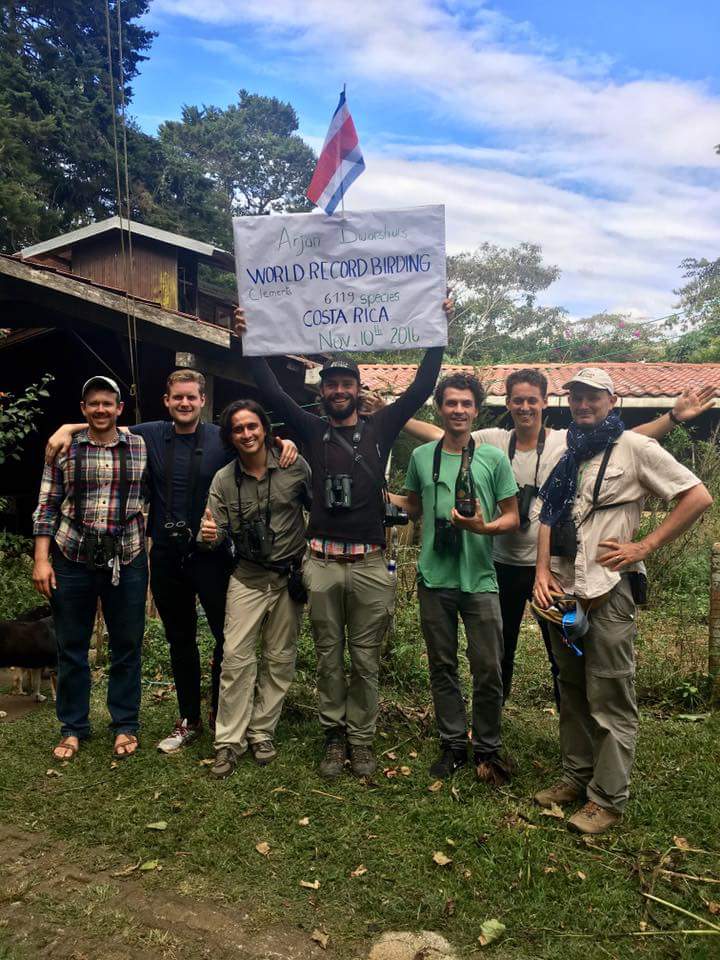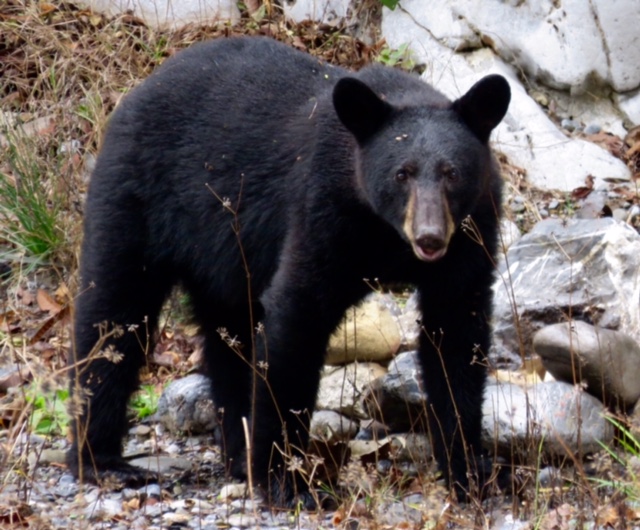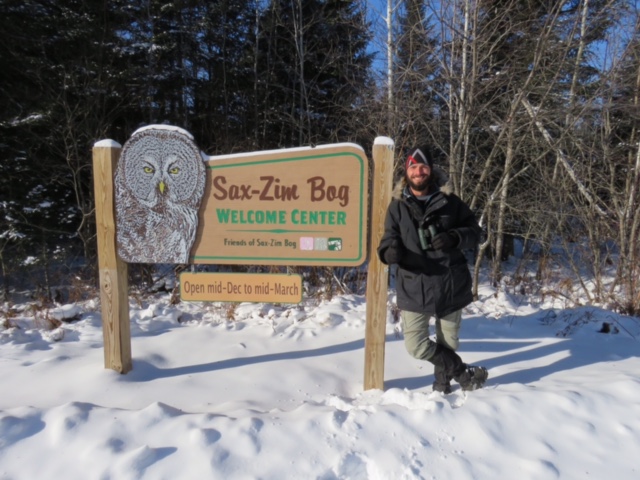Arjan Dwarshuis Biggest Year 30 oktober t/m 23 december
Zoals jullie weten sponsoren wij samen met Swarovski Optik, vogelaar Arjan Dwarshuis. Vanaf 1 janauri 2016 is Arjan in de race om in één jaar tijd zoveel mogelijk vogelsoorten over heel de wereld te zien. Hij wil het record op zijn naam krijgen, daarvoor moet hij meer dan 6.000 verschillende vogelsoorten zien. Lees hier zijn vorderingen
October 30th ZAPATA SWAMP
Late last evening I had arrived at Havana (Cuba) Airport where I was picked up by my best friend and biggest fan, namely my dad! For the next 3,5 days we would travel across the western part of Cuba to target all possible endemics. My dad told me that he had endured two days of nonstop heavy rain prior to my arrival, so we kept our fingers crossed for the next couple of days.
From the airport we drove two hours to Playa Larga, gateway to the Zapata Swamp, which is Cuba’s finest birding site. Here we checked in at the wonderfully layback Villa Rio Mar (they are on Tripadvisor and this is their email: moticacuba@gmail.com), which I can highly recommend for anyone planning a trip to the Zapata Swamp
After four hours of sleep we had breakfast and at 7 AM we met local legend Angel Martinez Garcia, our guide for today and tomorrow. Together we set off on a small dirt road that took as straight to the heart of the swamp. The weather was perfect, sunny and a clear blue sky. I guess I keep on being incredibly successful in dodging bad weather this year
One of our first birds was a fantastically showy King Rail foraging right in the middle of the track. Not the critically endangered and rarely observed Zapata Rail, but a very nice sighting nonetheless
The first and foremost target for today was the endangered Zapata Wren, a Cuban endemic with a population of less than 2500 birds. Luckily two birds were singing away on both sides of the track and after 15 minutes of trying we got incredible looks at a Zapata Wren that crept across the ground barely two feet away from us. Another good find was a pair of the localized Red-shouldered Blackbird
As we proceeded on foot to look for the rare and extremely localized Zapata Sparrow we found the bushes besides the track ‘dripping’ with North American passerines. In two hours time we found more than 15 North American migrants and of course two pairs of Zapata Sparrow
In the mosquito infested forest adjacent to the swamp we found some great birds like Grey-fronted Quail-Dove and Cuban Trogon and on our way back to Playa Larga we found Cuban Oriole and Cape May Warbler along the roadside.
After a crazy good lunch at the Tiki Bar we set off into the forest again. During our afternoon session with Angel we saw great birds like a roosting Bare-legged Owl – for which we had to wade knee-deep through a swamp, Cuban Vireo, Cuban Tody and a Cuban Black Hawk on the nest.
That evening we had the best seafood dinner ever at Villa Rio Mar and a beer to celebrate the 45 (!) new species today
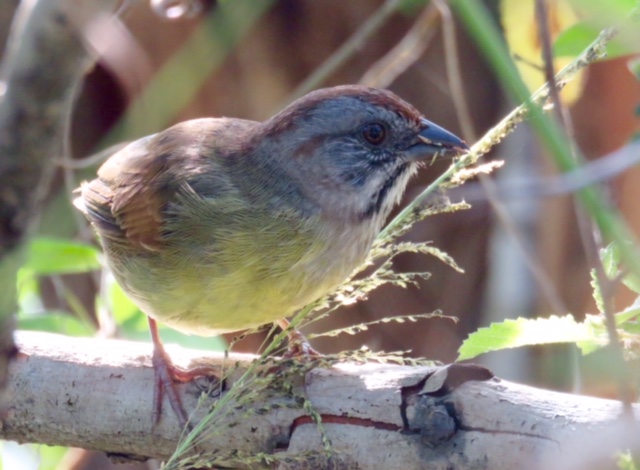
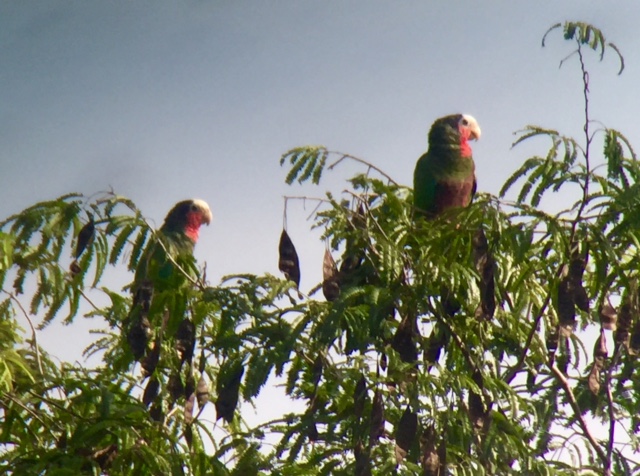
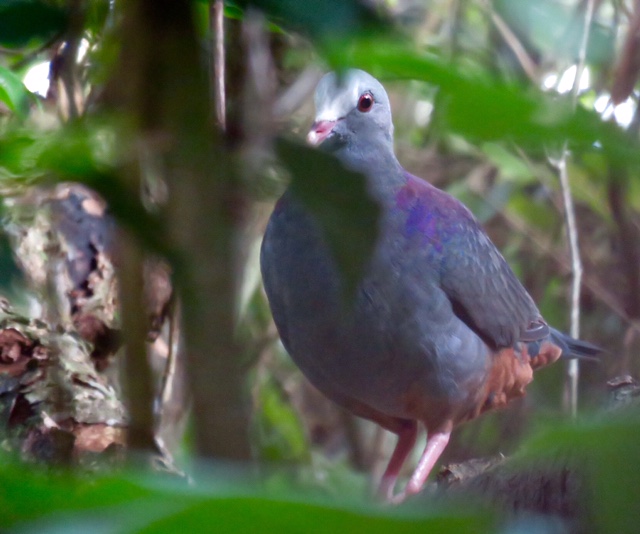
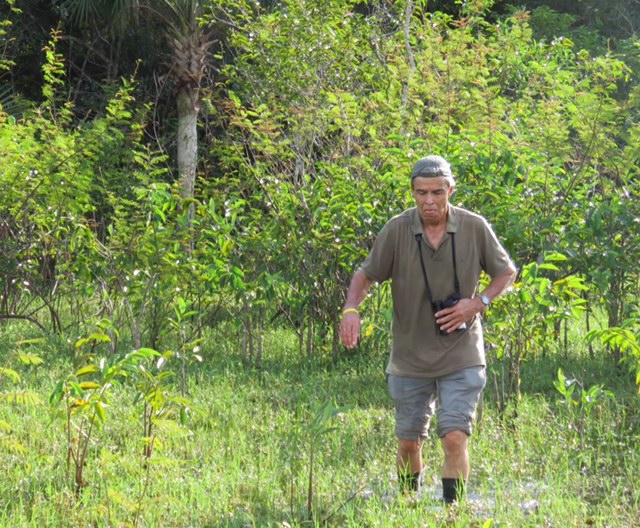
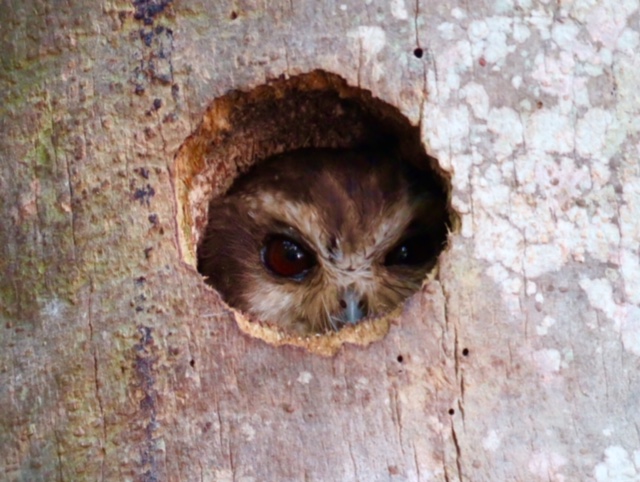
October 31st MY 6000th BIRD THIS YEAR!
I needed just six more species to reach the magical number of 6000, and that with still two whole months to go…
We picked up Angel at 7 AM and together we headed for the Soplillar area to look for our remaining Zapata specialties
We started off well with the endangered Cuban Parakeet, we found 5 birds together in their roosting tree. Next up was the equally endanger Fernandina’s Flicker which gave us no trouble at all, we had crazy good views of a pair attending their nesting hole in a dead palm. Meanwhile a pair of Cuban Bullfinches was feeding in the scrub below
Next up was the smallest bird in the world, the 5,5 cm small – from tip of the tail to the tip of the bill – Bee Hummingbird. We obtained exceptional views of a winter plumaged male. After a pair of Cuban Amazons I needed just one more species to get to 6000 species. If we would succeed in that, this would mean that I passed 6000 species in ten months time…
One hour later it was a fact! And not just a boring Flycatcher or a Sandpiper. Far from that! We had amazing looks at no less than four endangered Blue-headed Quail-doves!!
We finished the day with great views of three Cuban Nightjars before another amazing seafood dinner at Villa Rio Mar.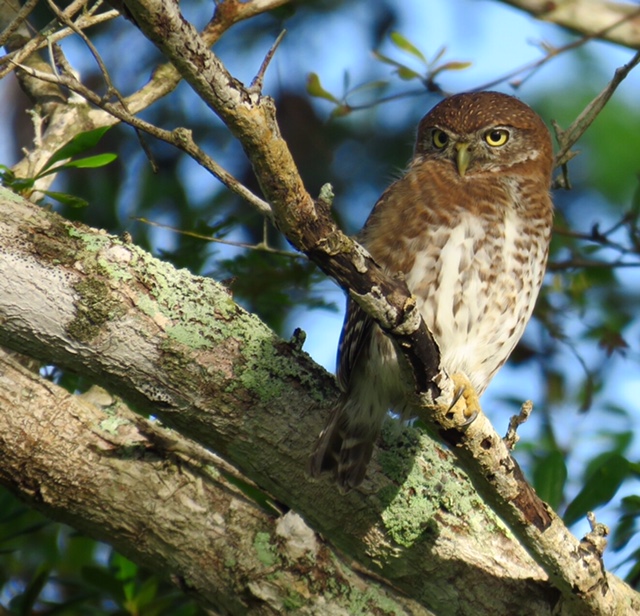
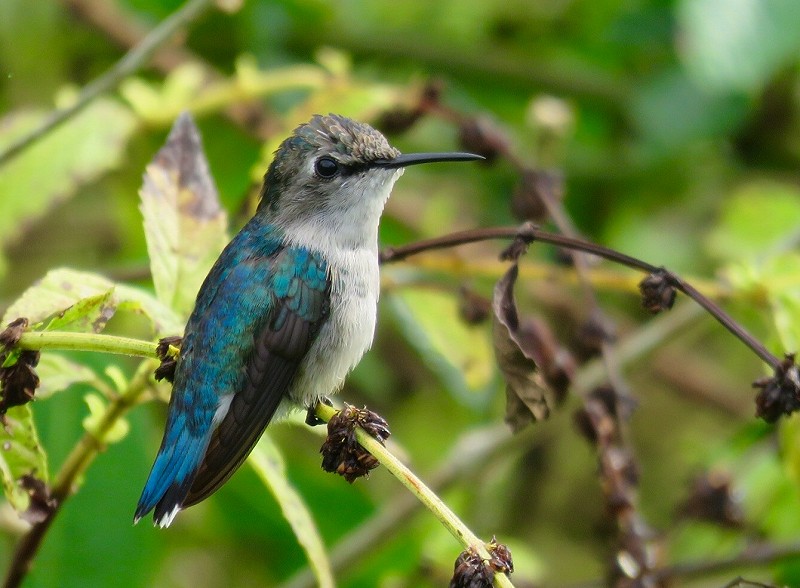
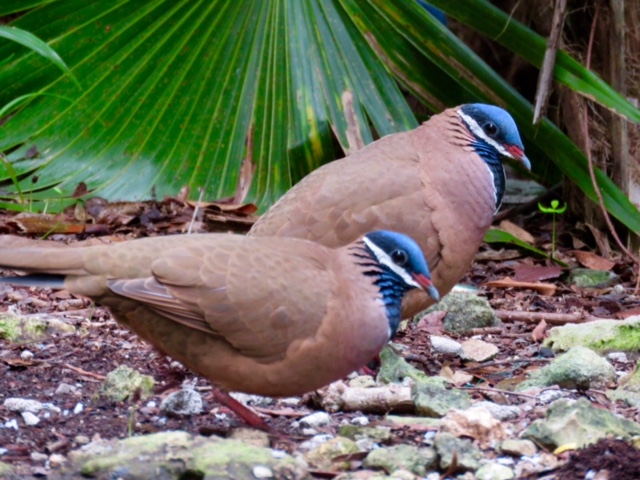
November 1st THE MELANCHOLIC VOICE OF THE CUBAN SOLITAIRE
After cleaning up in the Zapata area my dad and I had the luxury to travel west and look for four missing Cuban endemics, the Olive-capped Warbler, Cuban Grassquit, Western Spindalis and Cuban Solitaire. Giant Kingbird was unfortunately a little bit too far off route to give it a go.
Driving across Cuba is a fantastic experience. You find yourself at an almost empty highway and the only vehicles that pass you are American old-timers and horse-and-wagons. Finding gas however is troublesome, since there seems to be only three or four gas stations on the whole of Cuba, so luckily we had filled up before commencing with our journey west.
Around 1 PM we arrived at the forested hillsides of Las Terassas and at the first bit of pines along the road we made short work of the endemic Olive-capped Warbler. A nice addition to our ever growing list of American and endemic Warblers.
After checking in at the wonderful Maite B&B we made a loop through the garden to look for the endemic Cuban Grassquit, a sometimes tricky endemic. We succeeded in finding an immature male after a lot of searching, but finding an adult male of this smashing species had to wait for tomorrow morning.
We finished our day with a hike towards the nearby waterfalls to look for the bird with the most beautiful voice of all Cuban endemics, the Cuban Solitaire. First we played hide-and-seek for a while with a Western Spindalis high up in the canopy which eventually gave excellent views. The Solitaire proved difficult, but eventually we heard its beautiful song. We tracked its haunting voice through the forest and eventually we found ourselves right below the bird as it sang away above our heads. A fantastic experience.
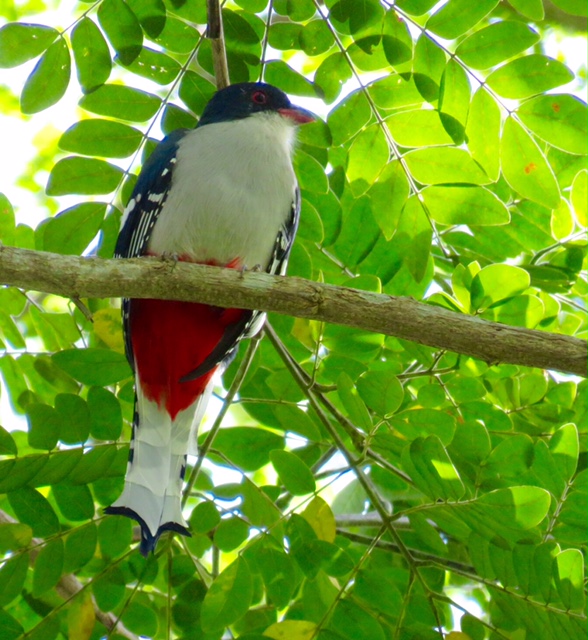
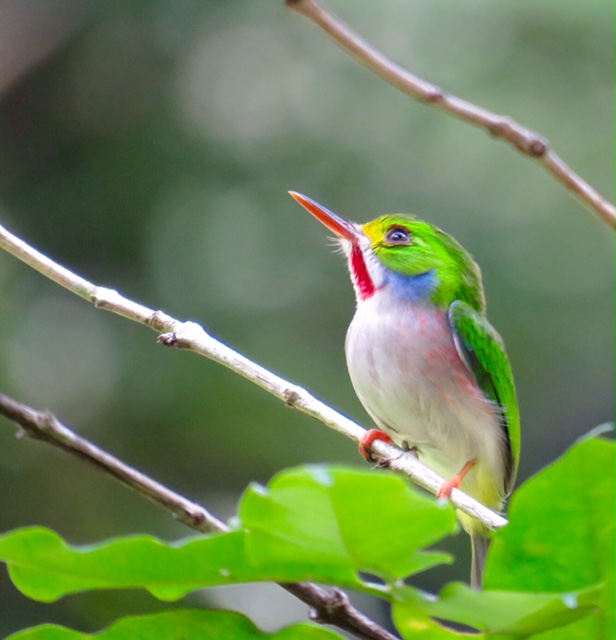
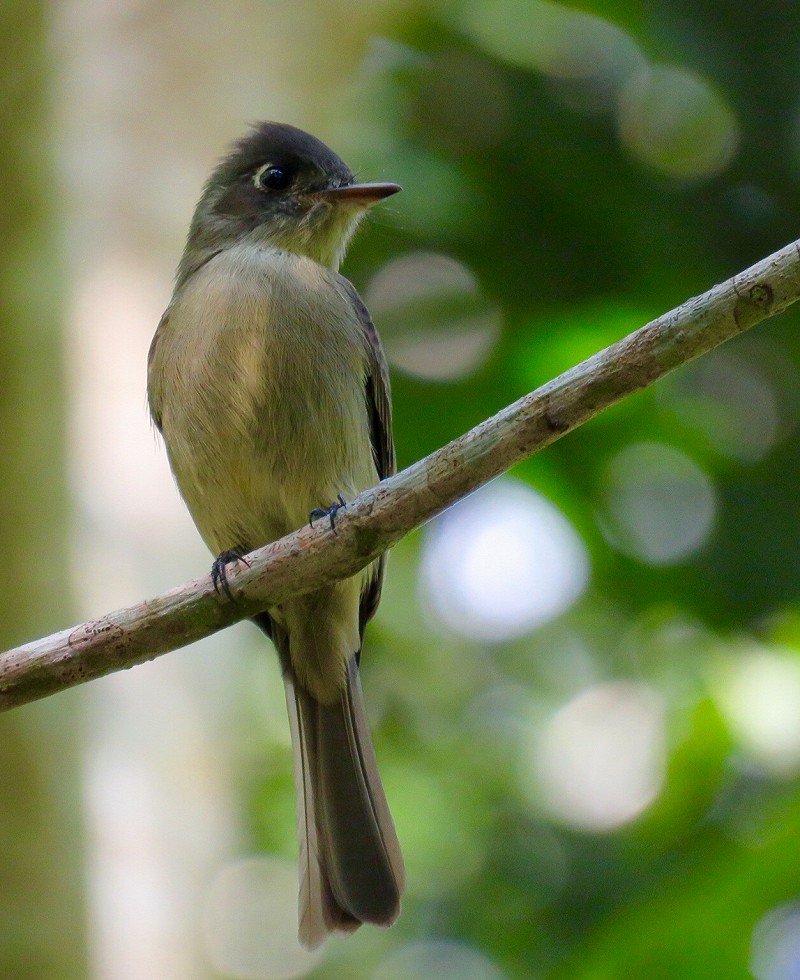
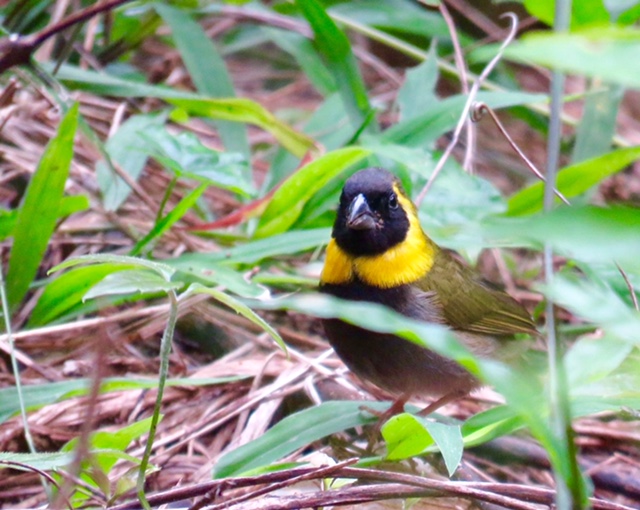
November 2nd LEAVING CUBA
Already our last day on Cuba. What a beautiful island and, more importantly, what a fantastic people! Too bad we had only three days, but that’s how a big year works. Once you’re beginning to like a place it is time to move on.
We made one more loop through the garden and this time we found a beautiful adult male Cuban Grassquit. Another good find from a Cuban perspective was a male Hooded Warbler.
Next we headed towards the airport where I had to say goodbye to my dad. He had one more day on Cuba. The day after tomorrow he will celebrate his birthday on the airplane. I will lift a glass for you in Panama pops! In Panama my uncle and dad’s brother Fred will be waiting for me and with 6010 species on the scoreboard I expect to be breaking the record tomorrow with him in Panama!
Thanks dad for helping me out on Cuba, I had a fantastic time traveling together!
November 3th BIRDING THE PIPELINE ROAD
Last night I was picked up from the airport by my uncle Fred Dwarshuis – my dad’s brother – and Guido Berguido of Advantage Panama Tours. After a quick pizza we drove to Gamboa, a small community that used to be part of the former US Panama Canal zone. Now Guido and his organization run a fantastic hostel in a classical wooden building right at the start of the famous Pipeline Road which is Panama’s most well-known birding locality. This dirt road runs along the Panama Canal and cuts through the jungle from the Pacific to the Atlantic coast. It was formally used to check and maintain the oil pipeline, but now it is primarily used by birdwatchers and nature lovers to experience primary rainforest at less than half an hour drive from Panama City. This makes this site unique in many ways.
After breakfast we set off on the Pipeline Road and over the course of the morning we managed to find over 15 new birds for my Biggest Year bringing me so closer and closer to the record.
In the afternoon we were joined by Advantage guide and top birder Nando Quiroz and together we drove to Costa del Este in Panama City to watch huge quantities of shorebirds at their high tide roost. We arrived just in time to watch more than a 100.000 shorebirds congregating at the last available stretch of mudflat. An absolutely amazing sighting.
11 more species for the record!
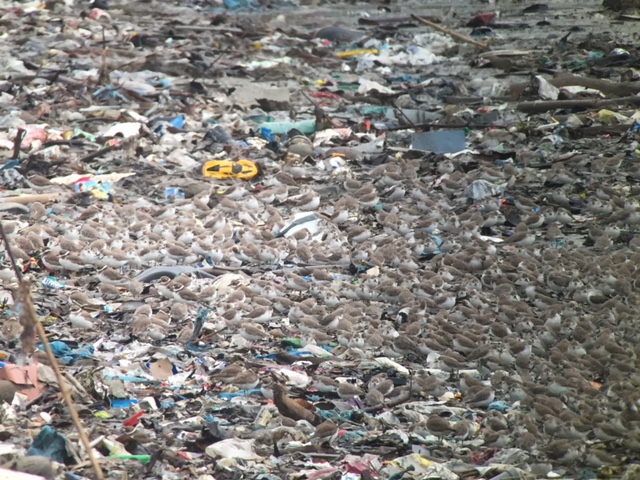
November 4th A NEW WORLD RECORD
With just eleven species to go the record was bound to be broken today, the record in IOC that is. For Noah’s record to be properly broken – he followed the less progressive Clements taxonomy – I will need approximately 6117 species and for that occasion I’ve bought a couple of Cuban cigars.
Today Fred, Guido, Nando and I were joined by Panamanian birder Jan Axel who had travelled more than three hours to join us for this – hopefully – memorable day.
We started at Cerro Jefe to look for some elfin forest specialties and already on the parking lot we found the first new birds, including the near endemic Violet-capped Hummingbird. As we headed down a slippery trail we saw the dazzling Black-and-yellow Tanager and true Panamanian endemic, Stripe-cheeked Woodpecker.
Bird number 6042 – the equalizer – was the beautiful Black-eared Wood Quail, but after that it started raining so the record breaking bird had to wait till after lunch.
Suspense was building as we headed down the Calle Maipo trail, which bird would be the record breaking one? Would it be a Black-crowned Pittasoma, a Rufous-vented Ground-cuckoo or an Occelated Antbird? All were good possibilities. Guido played some calls and suddenly a Tody Motmot responded from not too far away! We waited and played, but ten minutes later nothing had happened. I had to settle with a ‘heard-only’ record breaking bird. What a glorious anti-climax! I opted to swap this sighting with the next one, but that turned out to be the rather uninspiring Short-billed Pigeon. So Tody Motmot it was. We tried hard to see it on the way back, but we couldn’t turn the Motmot into a seen bird unfortunately.
Fred had secretly brought a bottle of Champagne and a banner for the occasion. A great gesture! With the five of us we had a glass of bubbles and took the photograph below. An awesome milestone reached, but I guarantee you that I will push on till New Year’s Eve!
We finished this memorable day at Finca Bayano, an area with rice fields that holds thousands of waders this time of the year. Jan had even found Panama’s first Sharp-tailed Sandpiper at this site! Our best find here was my first Long-billed Dowitcher of the year. As dusk settled we headed south towards the Darien, Wow, 6048 species with 57 days to go, will 7000 be possible?
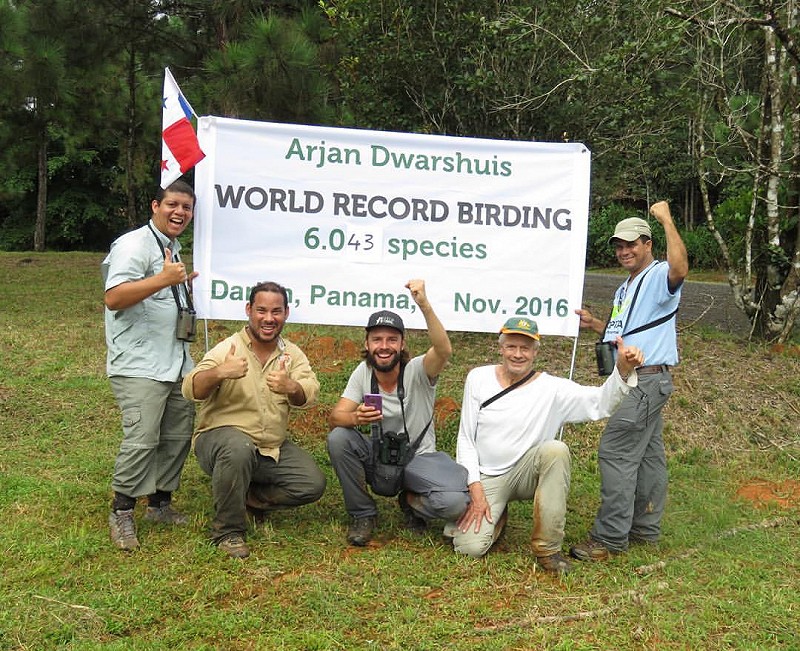 Celebrating bird number 6043! (Arjan Dwarshuis)
Celebrating bird number 6043! (Arjan Dwarshuis)
November 5th HORSE-RIDING IN THE DARIEN!
We spent the morning at San Fransisco, a privately owned reserve in the southeast of Panama. Highlights here were Northern Royal Flycatcher, Western Sirystes, several Blue Cotingas and a calling Central American Pygmy-owl.
After packing our backs at the Avicar Hotel – with nice feeder that produced Scaly-breasted Hummingbird – we headed further south towards the small village of Rio Pavo. From here we went 4 hours on horseback to the Cerro Chucanti Nature Reserve. This reserve protects about 600 hectares of tropical rainforest and cloud forest and was purchased in 2005 by the independent non-profit organisation ‘Adopt a Panama Rainforest’ (@AdoptaBosque, www.chucanti.org). Advantage Panama is one of the founding fathers of this fantastic organisation which is the Panamanian equivalent of the Ecuadorian Jocotoco Foundation and the Colombian ProAves Foundation. Please take a look at their website. They enable you to literally adopt rainforest trees and even support future land acquisitions that will help save critically endangered habitat for birds and other wildlife.
We arrived after dark at the reserve with a sore but from sitting on a saddle for 4 hours straight. After we’d put our bags in the rooms we prepared dinner over a gas stove while a Choco Screech-owl was calling in the background. What a great isolated place in the Darien jungle.
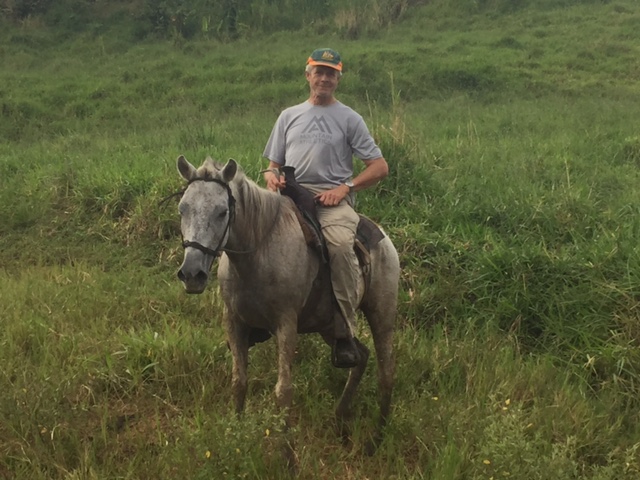
November 6th TO THE CLOUD FOREST AND BACK
At 5:30 AM Nando and I started hiking up across a steep track towards the cloud forest. Since this hike is very tough Fred and Guido stayed at the accommodation to enjoy the peace and quiet of Chucanti.
As Nando and I made our way up through beautiful tropical rainforest we encountered some nice birds like Brown-billed Scythebill and Russet-crowned Quial-dove. Around 7 AM we arrived at the ridge where the tropical rainforest with open understory was replaced by lush cloud forest. A bizarre find were two crashed 1950 US army choppers at the ridge. They were overgrown by vines and moss reminiscent of a scene from an Indiana Jones movie. Luckily there were no dead bodies inside.
The first flock we found immediately contained several highly localized Tacarcuna Bush-tanagers. After close inspection of these birds it struck me that they had a pale post-ocular spot and striking contrasting white bellies. Nothing like the birds that are depicted in the book. Surely these birds belong to a yet undescribed subspecies, but more likely an undescribed species. Luckily I managed to take some good photographs of these birds.
Varied Solitaires were calling regularly, but it took some time before Nando found a very showy individual. Now we needed just one more bird up here, the rare Beautiful Treerunner. We worked our way through one flock after another until finally we hit the jackpot. We found at least three birds together in a mixed flock. A great sighting given the fact that this bird has been seen – let alone photographed – by only a handful of birders.
On the way down we saw Ruddy and Northern Barred Woodcreeper attending a small army ant swarm and best a family of ten Great Curassows!
Back at the camp Fred was preparing lunch and while waiting for his haute cuisine Nando called in an unbelievably showy pair of Ocellated Antbirds, one of my most wanted Panamanian specialties. We watched these amazing birds literally through the kitchen window!
That night while having dinner a Choco Screech-owl started calling again and this time we managed to get excellent views!
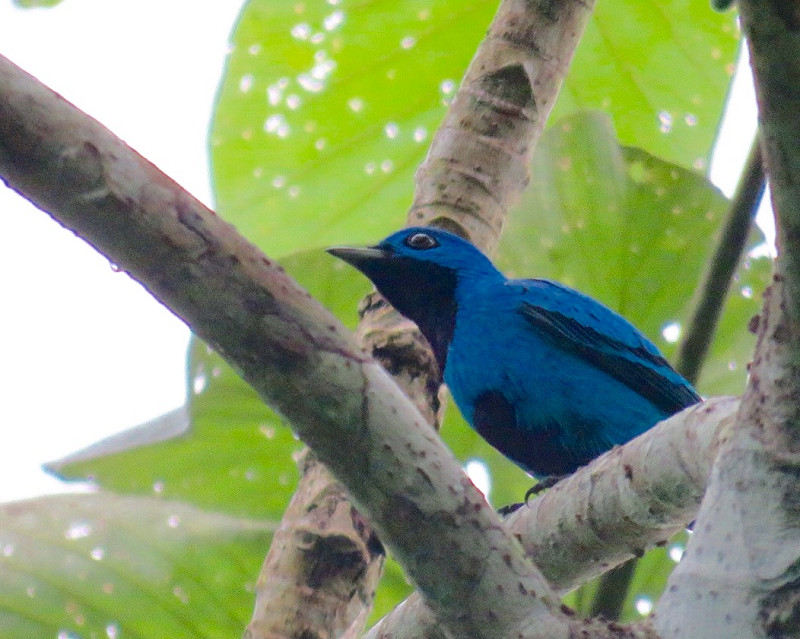
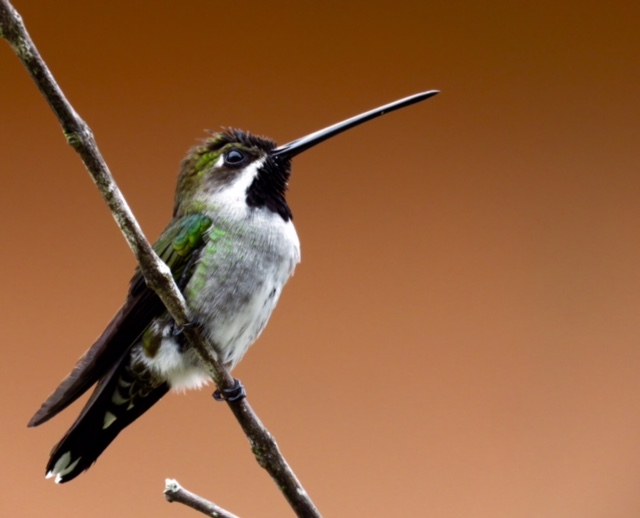
November 7th PITTASOMA!
If I could name one bird that I wanted to see most here in Panama it would be the Black-crowned Gnatpitta or Pittasoma. This unique bird used to be lumped in with the Antpittas, but it is now considered a separate family together with Rufous-crowned Pittasoma. Panama is the best place in the world to find this beautiful bird, but still it is far from guaranteed. Guido had told me that the primary tropical rainforest around Chucanti would be one of the best places to find this gem, but yesterday – despite multiple tries – we were unsuccessful.
Before we would travel back down to Rio Pavo on horseback Guido and I set off into the forest once more to look for this most wanted bird. 500 meters up from our accommodation we suddenly got a response. The loud alarm call of a Black-crowned Pittasoma echoed through the forest. I tried to make as little noise as possible as I slowly closed in on the bird. Suddenly there was a movement and there was the Pittasoma, in the plain open perched on a fallen log. What a terrific sighting. Unfortunately I had already packed my camera so a great photo opportunity was lost, however just looking at this fantastic bird was good enough for me.
Around noon we arrived back in Rio Pavo. Our backs, legs and buts completely destroyed from sitting on a horse for 3 hours so we were relieved to be back in our comfortable 4×4.
After lunch we headed south towards the small town of Meteti where in the last half hour of daylight we managed to find 5 new birds for my Biggest Year: Black Oropendola, Black Antshrike, Double-banded Greytail, Red-rumped Woodpecker and White-headed Wren. Thanks to the spot-on local knowledge of Nando who lives close to this place.
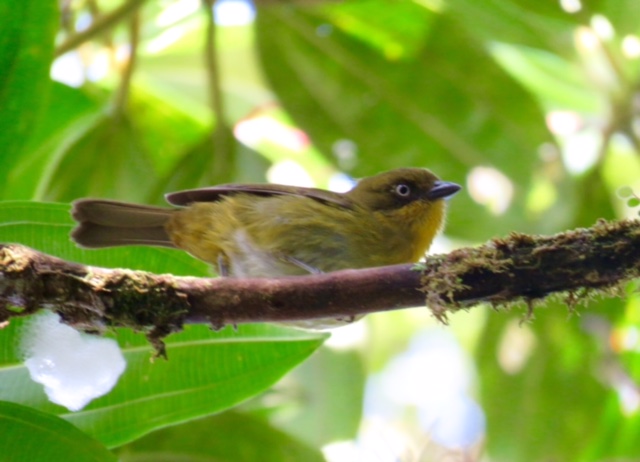

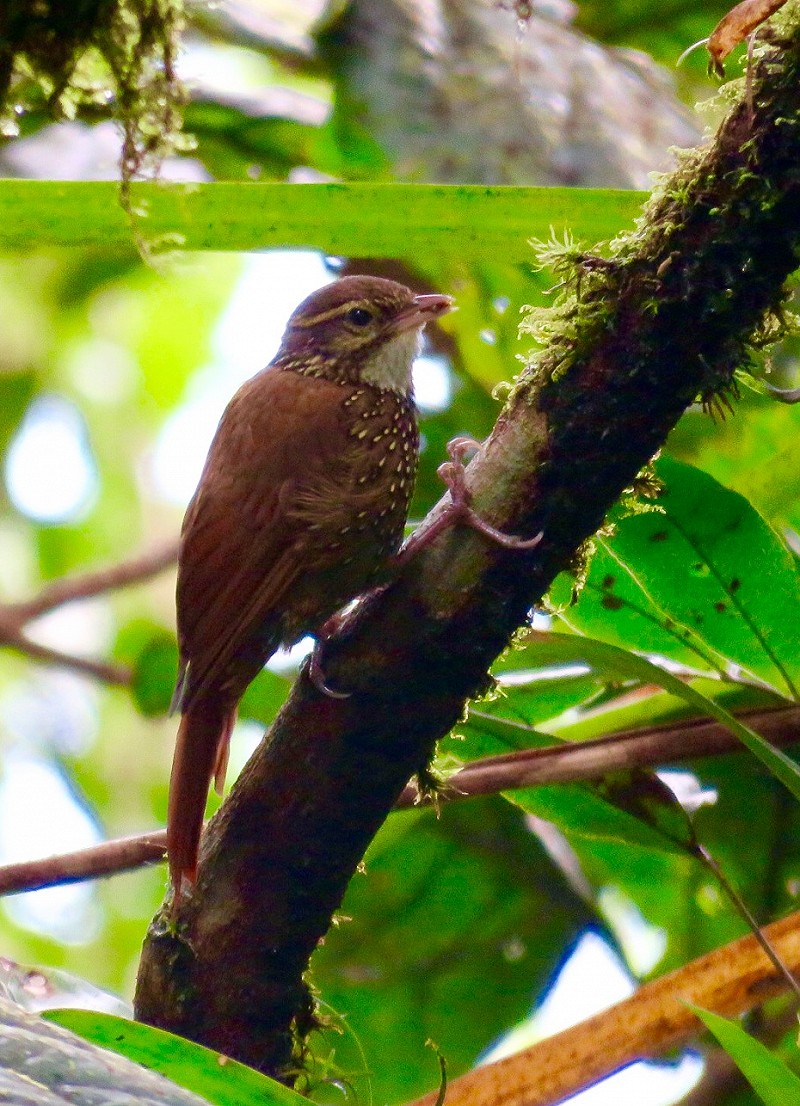
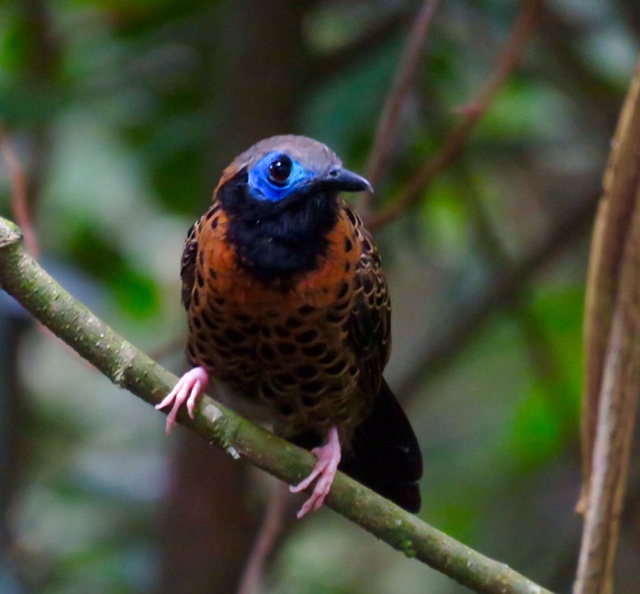
November 8th TARGET BIRDING IN THE DARIEN
We were in the lowlands of the Darien. Until recently this area bordering Colombia was considered a no-go-zone, but since the Colombian FARC put down their arms the Darien is opening up to the public. Since the Darien became accessible exciting ornithological discoveries have been made and Guido and Nando know better than anybody else where to find these avian highlights.
We started our day of target Darien target birding in the Aligandi area, one of the most reliable places in Panama to see the incredible Great Green Macaw. As with a lot of places in the world the forest in this area is disappearing at an alarming rate and while driving towards our destination we encountered recently cut and burned blocks of rainforest. A painful sight to behold.
The forest that still stands at Aligandi is good and we found no less than 7 Great Green Macaws giving a fantastic flyby. Like many other big parrots worldwide these amazing birds are suffering from habitat destruction and illegal capture for the bird trade. Another good find at this site was a showy Semiplumbeous Hawk.
Next up was the rare Dusky-backed Jacamar. In order to find this bird we would have to take a boat ride down the Chucunaque River. At the dock where we had to catch our boat ride there was a refugee camp. There were hundreds of refugees from all over the world that had made their way from Ecuador, through Colombia and across the Darien on foot to get to Panama. From here they were hoping to reach America. We talked to a Sudanese Refugee who had made this journey with his chronically sick wife and two little kids. It is amazing what hardships some people have to enjoy in a lifetime.
We did find the Jacamar, only 15 minutes downriver and we got a Spot-crowned Barbet as a big bonus.
The last site of the day was a stretch of gallery riverine forest to look for White-eared Conebill and again we managed to find this target within no-time thanks to another of Nandos spot-on stakeouts.
From here we drove all the way to Nusagandi Reserve where we spend the night at the Garduk Lodge run by Kuna Indians from the San Blas archipelago.
November 9th TWO NEW BIRD FAMILIES IN A SINGLE DAY
While having breakfast we checked the news and found out that Donald Trump had been elected as the new president of the United States. We were all in shock. Trump as president will be catastrophic for the world economy and even more so for the environment. For instance he believes that global warming is a hoax. How ignorant can somebody possible be? We got ourselves together and headed to Nusagandi Reserve for our last morning birding session in Panama.
Nusagandi Reserve hosts one of the most pristine yet accessible stretches of rainforest in Panama and several highly desired species can best be found here.
While making our way through pristine rainforest – picking up Dull-mantled Antbird and Purplish-backed Quail-dove along the way – we encountered a huge army ant swarm. Of course we were hoping for Chestnut-vented Ground-cuckoo, but unfortunately none were present. We did find another fantastic Black-crowned Pittasoma. What an incredible bird and this time I managed some great shots of this enigma.
Talking about enigmas, my most wanted bird to find here was the monotypic Sapayoa, the Sapayoa Enigma! In order to find this bird we headed down another track where we bumped into a pair of Olive-backed Quail-doves, a rarely observed species!
And yes! We found a pair of Sapayoas! At the far and of the track along a small stream. Great stuff.
Next we drove north towards Panama City again where we made one last birding stop at the famous Metropolitan Park. Here we found the endemic Yellow-green Tyrannulet, a crisp male Blue-winged Warbler and best another new bird family, a unexpectedly showy Rosy Thrush-tanager!
The best news came while saying goodbye to Fred, Guido and Nando. Fred had decided to ‘adopt’ 1000 dollars’ worth of Panamanian rainforest through #AdoptaBosque!
Off to Costa Rica!!
Arjan Dwarshuis
http://www.arjandwarshuis.com/#biggestyear
http://world.observation.org/arjan.php
PLEASE MAKE A DONATION NOW
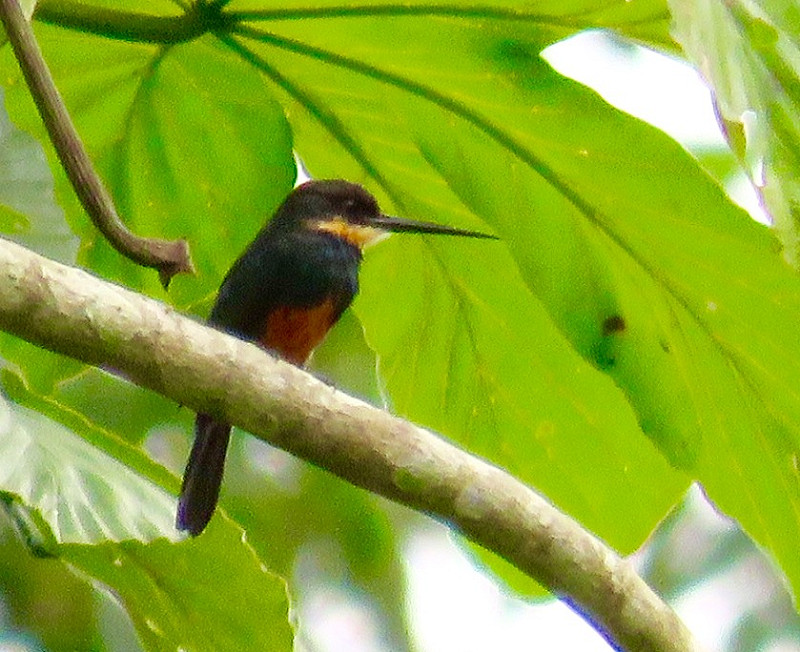
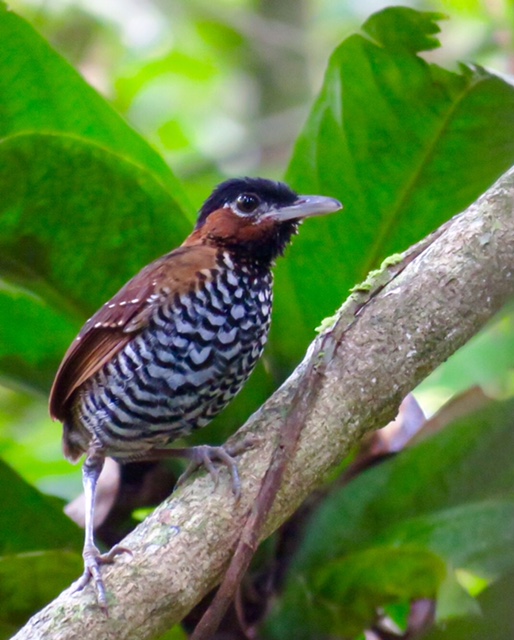
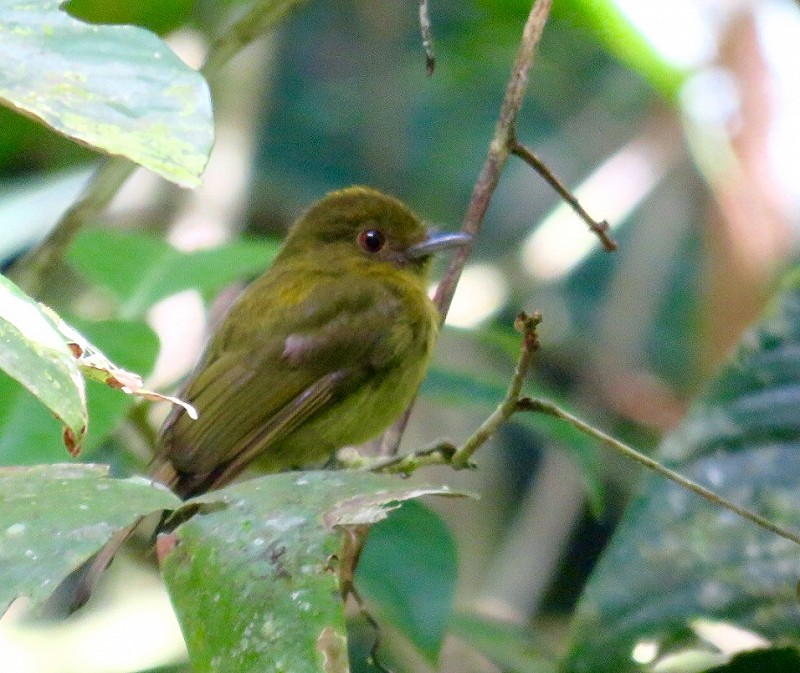
SPECIAL NOTE:
He did it! On 10 November Dutch birder Arjan Dwarshuis broke the world record in birding. The Northern Jacana he saw in Costa Rica was the 6.119th bird species he recorded this calendar year alone.
With this sighting he has now broken the already incredible record of American birder Noah Strycker, that was set as recent as 2015. Arjan still has another 51 days to increase his new record.
“I’m very, very pleased. Pleased that I broke the record, pleased that I broke it so early in the year. For the first time this year I had two beers instead of the one a day that I allowed myself this year” Arjan says on Whatsapp.
“But I’m not done yet”.
This list or that list: it now doesn’t matter
The two fanatic world listers used different lists to keep track of their records: Noah used Clements, while Arjan used the more progressive IOC (that acknowledges more species). However, a quick calculation reveals that Arjan has now passed Noah on both lists.
Is 7000 doable?
Record or not, Arjan will press on further to increase his bird list. He has even altered his schedule. Originally he planned to visit Central-America and North America till the end of the year, but by spending less time there, he saves time to head back to Asia – the continent where he started his big adventure.
“In hindsight I should have planned more time in Asia, but fortunately I found a way to fix that. Due to visa issues I can’t enter China, but I will go to Vietnam, Taiwan and then end the year in Japan.”
In line with his energetic and ambitious personality, he’s set a new goal that raised eyebrows: to end the year with 7000 birds. The more serious followers on fora say it’s impossible: between 6.500 and 6.700 seems more likely. 7000 means he has to see 17 new species a day – an awful lot at the end of a big year.
“We’ll see how far I get. But I think 7000 is doable” Arjan says. “If you don’t aim high, you won’t reach high” he says with a smiley added to the message. And maybe that’s precisely what characterizes him – and got him his amazing record in the first place.
No time for cooking just yet!
When asked if birding every day to achieve a specific number doesn’t stress him out, Arjan says: “Of course it’s stressful to have only shot at a specific target. Day in day out.”
But is he done with it, after more than ten months of straight birding?
“No way, man!”
“Of course I long to see my girlfriend, family and friends more often than I did this year. Go to a bar with friends and have more than one beer. Or god, to stay in bed for the morning. And to have time for my other big hobby: cooking. I really miss that.”
But don’t let this fool you:
“But all those things are for 2017. Mind you, I now do what I like the most: seeing spectacular birds at spectacular places. So yes, I’m still highly motivated. I love it.”
Who ever said the Dutch were cheap?
While trying to break the world record, Arjan is also collecting money for BirdLife International. Though he collected a considerable amount of money, Arjan is not on schedule for the goal he set. All of the money wired to this fundraiser goes directly to those species that are on the verge of extinction (BirdLife’s Preventing Extinction Programme).Until now he has collected 15.000 euro out of the targeted 100.000. While the Dutch have a reputation for being cheap, they – as well as Flemish birders – have donated generously. 15.000 euros, not bad for the tiny Low Countries!
“On behalf of the birds I’d like to thank everybody who has donated. I’m sorry I did not have the time to thank everybody personally, but it’s very, very much appreciated”.
Arjan has however reached few people outside the Low Countries – even though he’s being followed word wide by 1000s of birders. Hits on his pictures on Observation.org for instance run into the 100000s. Hopefully the broken record is a very good reason to donate money for those species that really need it! Go to https://www.justgiving.com/fundraising/Biggest-Year
“Please donate”, Arjan says, “it’s not for me, it’s for the birds that need it the most”
If you have trouble wiring money, or do not own a credit card, please don’t hesitate to contact me at v.vanderspek at gmail dot com
* Note that 5.000 euro is not visible on JustGiving as it was send as a cheque.
November 10th THE OFFICIAL RECORD BREAKING DAY
Last evening I was picked up from San José airport by Pieter Westra – the owner of Aratinga Tours – and three of my best friends from the Netherlands, Maurits Munninghoff, Pieter van den Akker en Harry Markusse. They had been traveling already for a week through Costa Rica and decided to join my hard-core birding itinerary for three days. Hoping of course that they would be there when I officially broke the record following Clements taxonomy …
At 3:30 AM we were on our way to El Copal, a fantastic little lodge surrounded by a reserve with mid-elevation Caribbean slope rainforest. Here we were greeted by three top Costa Rican birders, Juan Diego Vargas, Ernesto M. Carman and Christian Urena. I needed just 32 species to officially set a new world record.
We started off with one of the finest regional endemics, the beautiful Snowcap. A dazzling little purple-and-white Hummingbird. Over the course of the morning we saw a long list of amazing species mainly while having coffee at the veranda overlooking the forested hillsides. Best of these were Blue-and-gold Tanager and White-crested Coquette. For the vulnerable Tawny-chested Flycatcher and Black-headed Antthrush we had to venture a little deeper into the forest.
After breakfast and saying goodbye to Christian we headed towards Ujaras where we started a long and intensive search for the endemic Cabanis’s Ground-Sparrow, which we eventually found three hours later. Luckily we picked up a lot of other interesting new birds along the way.
At lunch I did the count and came to the conclusion that I needed only three new birds for the record. Wow, the moment of truth was upon us. At a huge flowering tree we found a male Black-crested Coquette, two more species to go…
At Finca Cristina – Ernesto’s residence – it had to happen… In this shaded coffee plantation – Ernesto reputedly makes one of the best coffees on the planet – we quickly found a White-eared Ground-Sparrow which meant that I had only one more bird to go for the official world record.
A Buffy-crowned Wood-Partridge started calling nearby. This was it! Five tense minutes followed, but eventually I managed to get fantastic looks at the partridge as it sat fully in the open for a couple of seconds. What a fantastic record breaking bird!
We had champagne and Cuban cigars – at two in the afternoon – and after saying goodbye to Ernesto and Juan Diego we headed up into the mountains towards Paradiso del Quetzal Lodge.
At the lodge we were joined by top guide Jorge Serano and in the last hour of daylight we managed to find an additional ten new species. However, the day was not yet finished as we had to track down some night birds with local specialist Erik. Dusky Nightjar came easy, right opposite the lodge. Bare-shanked Screech-Owl took a little more time, but we eventually managed fantastic views. The last bird was the hardest, the Ridgway’s Saw-Whet Owl. We tried a lot of different sites, but nowhere we got any response. Just as we had all given up and were already sitting in the car, Erik – who refused to give up – suddenly found one calling and half an hour later I suddenly found it in the torch (it had stopped calling so it was a big stroke of luck). What a memorable day!
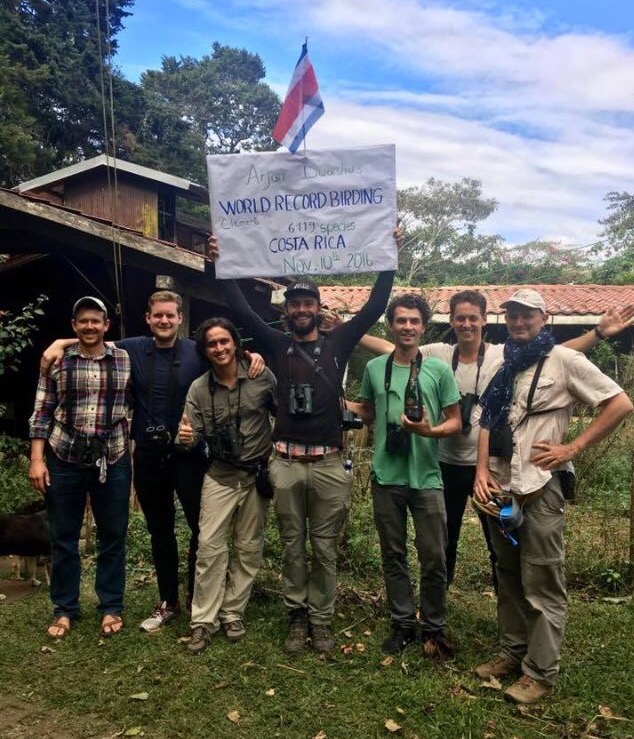
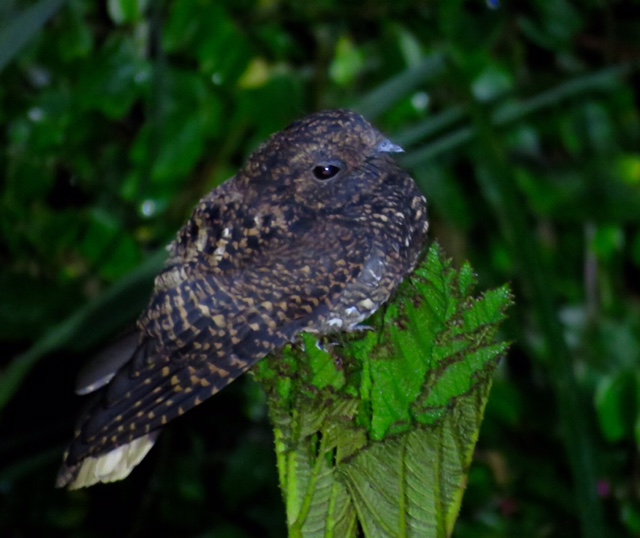
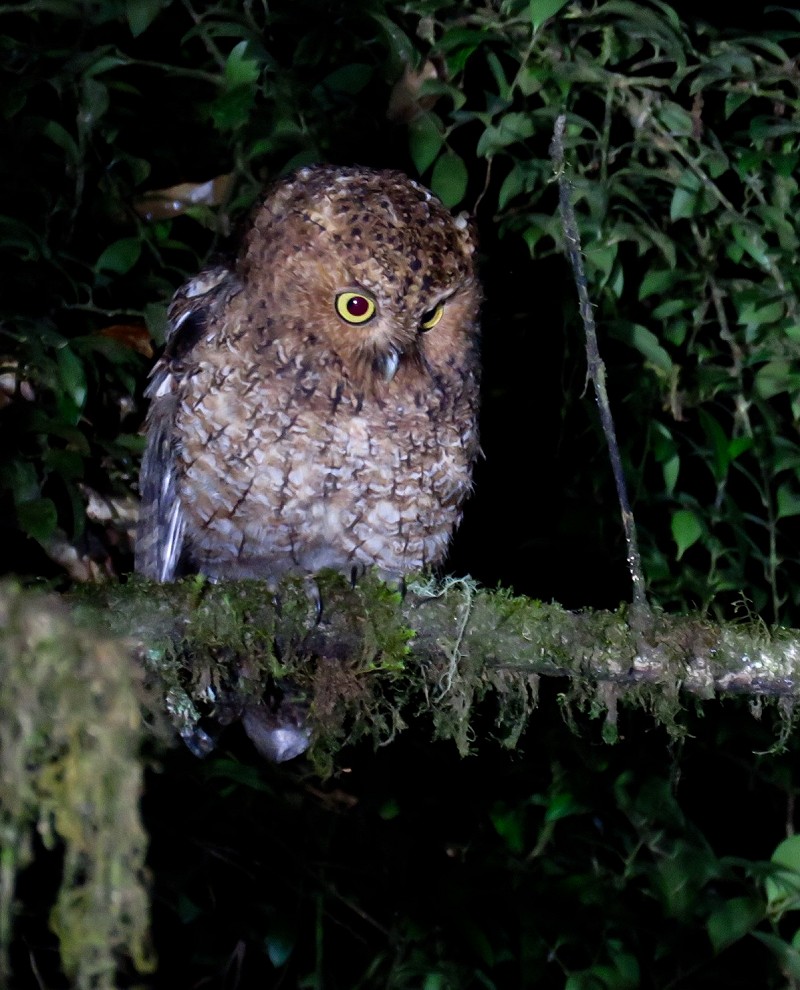
November 11th GOING VIRAL
After officially breaking the record yesterday, it turned out that the news had gone viral in the Netherlands. Subsequently I got phone calls from multiple radio and television shows to interview me about setting the new world record. So now and then our birding on the trails around Paraiso del Quetzal Lodge was interrupted by me having to give an interview over the phone. Luckily I had good cell phone reach in the middle of the forest.
Thanks to Jorge’s incredible local knowledge, we had a very productive pre-breakfast birding session with Wrenthrush, Silvery-fronted Tapaculo, Blue-throated Toucanet and, best of course, three exquisite Resplendent Quetzals, arguably the most beautiful bird in the world. For Harry, Pieter and Maurits this species was their most wanted bird for these two days of birding in Costa Rica, so they went crazy when we finally saw it. I must admit, so did I. The iridescent green colours, the long back feathers, the bright red belly. Simply amazing.
We kept on finding good birds after lunch, with highlights like both Silky-flycatchers, Timberline Wren and Buffy Tuftedcheek. When activity slowed down we drove up for my last visit to the paramo this year. Here we quickly found our two main targets, the secretive Peg-billed Finch and the near-endemic Vulcano Junco.
In the late afternoon we were very lucky to find a covey of Spotted Wood-Quails, all thanks to Jorge’s incredible local knowledge that is.
From Paraiso del Quetzal Lodge we drove down to the nice Bosque del Tolomuco lodge, where we spent the night. We got a warm welcome from Liz and Ralf, the friendly Canadian owners of this place in the Pacific subtropics.
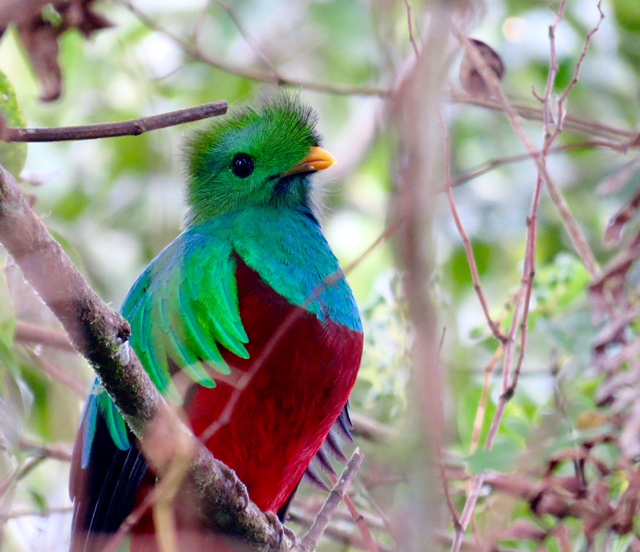
November 12th HEADING FOR THE OSA PENINSULA
After a short morning birding session with the boys and a long, but eventually successful wait for White-tailed Emerald, it was time to say goodbye. We dropped Harry, Maurits and Pieter off at the bus station for their journey to the Playa Tamarindo and Pieter and I headed south towards the remote Bosque del Rio Tigre Lodge at the Osa Peninsula. The last three days were a lot of fun and I will miss you guys.
While heading south Pieter and I made a couple of scheduled stops. The first one for Turquoise Cotinga at the small Los Cusingos reserve. Unfortunately we only saw two birds flying overhead, so I was sincerely hoping that we would find one along the road while driving south. Our next stop was at Finca los Suisos to look for the uncommon near endemic Golden-naped Woodpecker. This bird proved less elusive and we got splendid looks at a pair high up in a dead tree.
After lunch we continued our way south and soon we entered the very scenic Osa Peninsula, one of the largest continues tracks of lowland forest in Central America. This was evident by regular sightings of Scarlet Macaw. A species that needs good forest for nesting.
While driving Pieter and I suddenly noticed a largish passerine on an exposed snag in the canopy. Could it be? Yes! Moments later we had fantastic views of a male Turqoise Cotinga through the scope!
As darkness fell over the Osa Peninsula we arrived at Bosque del Rio Tigre Lodge. What an amazing place in the middle of the jungle. We got a warm welcome from the owners Liz and Abraham and while having a beer we got an introduction to the place from Liz. The rooms deliberately have one open wall so only a mosquito net separates you from the rainforest around you. Lovely, for me there is no better background noise than the sounds of the jungle to fall asleep with.
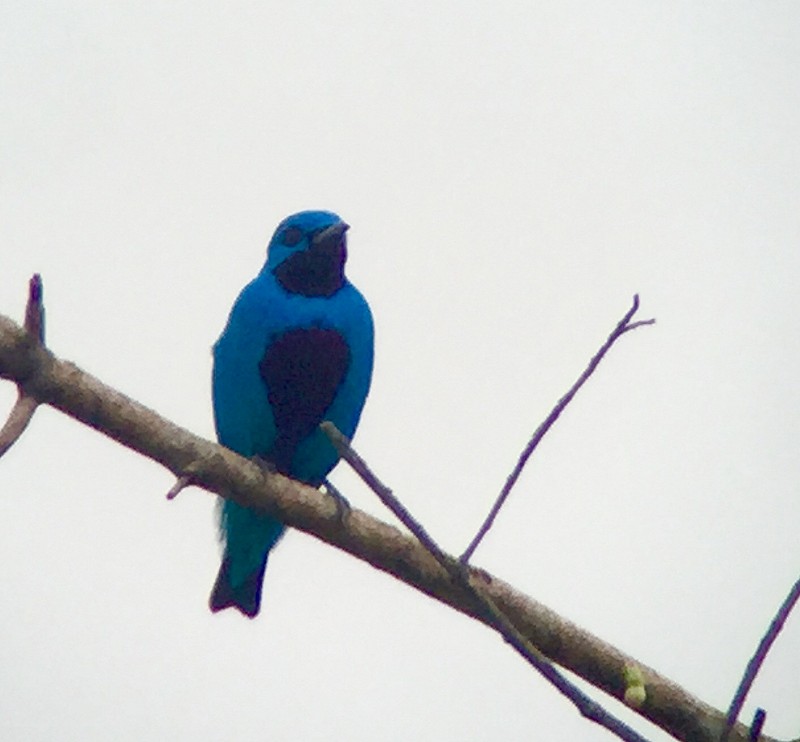
November 13th TARGET BIRDING 2.0
Besides being one of the owners of Bosque del Rio Tigre Lodge, Abraham is also a very good local guide. He had the tough job of showing us about ten big target species in a single morning, since Pieter and I had to catch a flight to San José at 1:30 PM.
Immediately after our coffee we headed towards the Rincon Bridge to look for my most wanted bird here, the immaculately white Yellow-billed Cotinga. This incredible bird is severely threatened by habitat loss since it needs mangroves with adjacent tropical lowland forest. An increasingly rare combination following continuing development along the Central American Pacific coast. We were incredibly lucky. Immediately upon arrival at the bridge we saw a male Yellow-billed Cotinga flying into a tall tree and after jumping out of the car we had fantastic views through the scope. Two beautiful rare cotingas within 24 hours, not bad at all.
Next up was a stretch of mangroves where we looked for the endemic Mangrove Hummingbird, which we found remarkably quickly. So at 8 AM we were already back at the lodge with the Cotinga, the Hummingbird and a bonus Fiery-billed Aracari and Bronzy Hermit in the bag.
In the half hour till breakfast we found every other needed target, from the flashy Orange-collared Manakin to the Black-hooded Antshrike. There was one bird however that had to be the difficult one, the Black-cheeked Ant-Tanager. By 11 AM this virtually guaranteed bird still hadn’t showed up at the feeders and Pieter and I were getting seriously worried. By 11:30 we decided to give the bird one more try along the trail system, but while we were half way up the trail we suddenly heard Liz screaming from down below that the birds were on the table! We raced down, had amazing views of a family of Black-cheeked Ant-tanagers, packed our bags, raced to the airport and made our flight in time. Perfect timing.
At the airport we were greeted by a fresh new car from Adobe Rental Cars and top Costa Rican birder and guide Herman Venegas and together we headed for Monteverde, where we arrived late in the evening at the luxurious Hotel Fonda Vela.
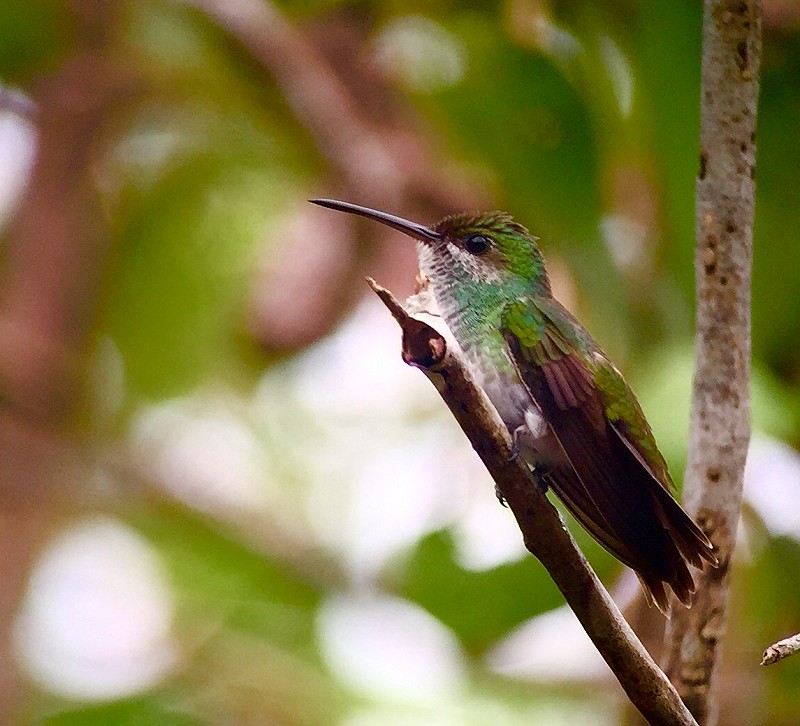
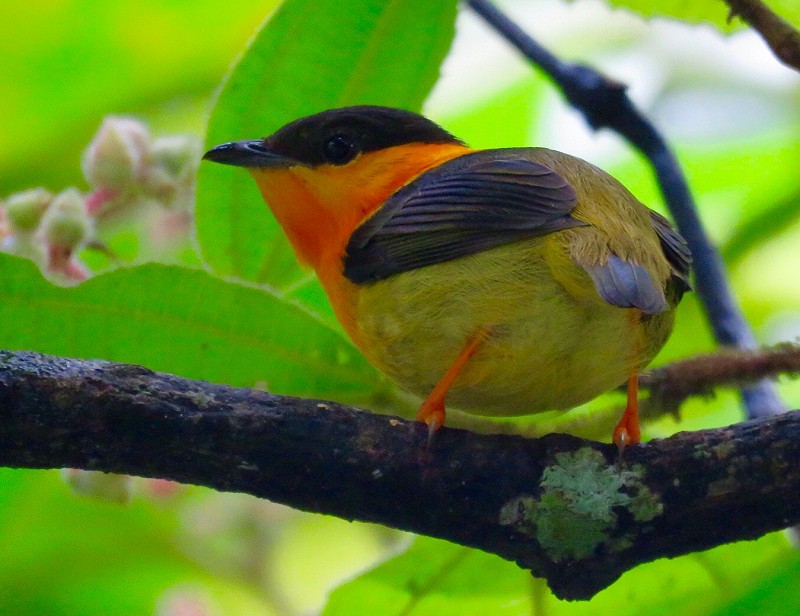
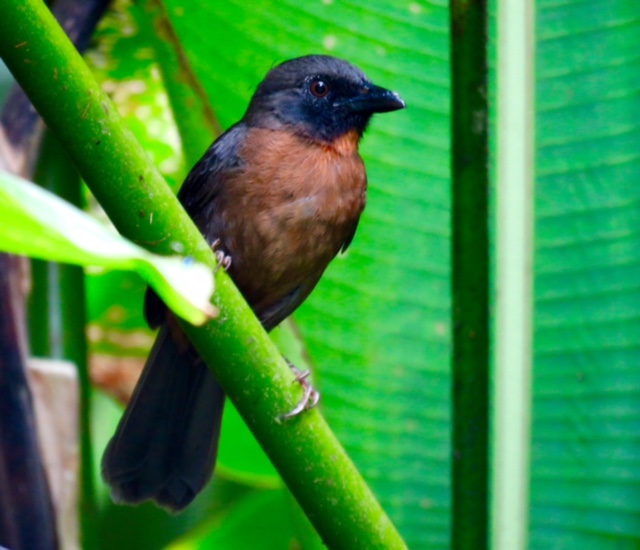
November 14th MONTEVERDE
Today we joined forces with local guide Marcos Mendez of Passion Costa Rica. Since he is birding almost every day in Monte Verde he knew exactly where to go. We started our morning at Sanctuario Ecologico to look for a notoriously difficult bird, the elusive Chiriqui Quail-Dove. We split up and slowly tracked down the trail system. Half an hour later it was bingo, when Herman and I stumbled upon a very showy individual.
After that early success we spent the rest of the morning at Curi-cancha Reserve, one of Monteverde’s finest birding sites. Despite being crowded with tourists, especially in the high season, birds do not seem to mind that much and actually a lot of them have grown rather accustomed to people. At the feeders we saw my last possible Costa Rican endemic, the Coppery-headed Emerald and higher up in the elfin forest we had close encounters with Prong-billed Barbet, Orange-bellied Trogon (now lumped with Collared Trogon), Black-breasted Wood-Quail and an obligating juvenile Barred Forest-Falcon.
We had lunch at Santa Elena Reserve, where we also tracked down my last new species at Monteverde, the Streak-breasted Treehunter. After that Herman, Pieter and I drove towards the famous Arenal Observatory Lodge, where we arrived around 9 PM.
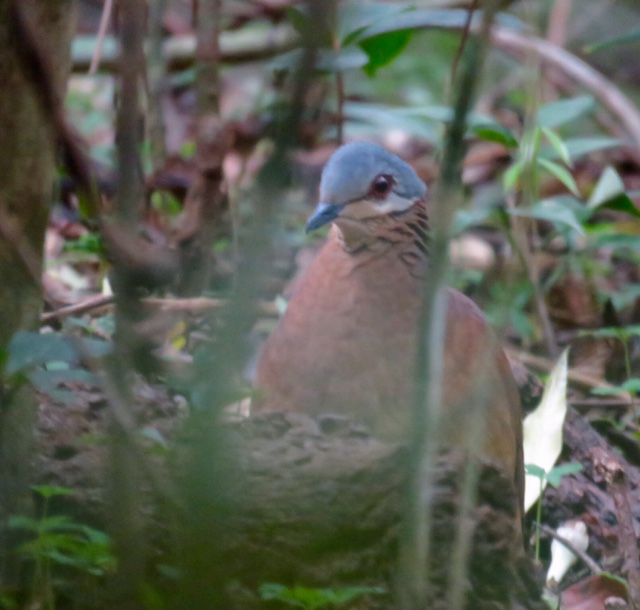
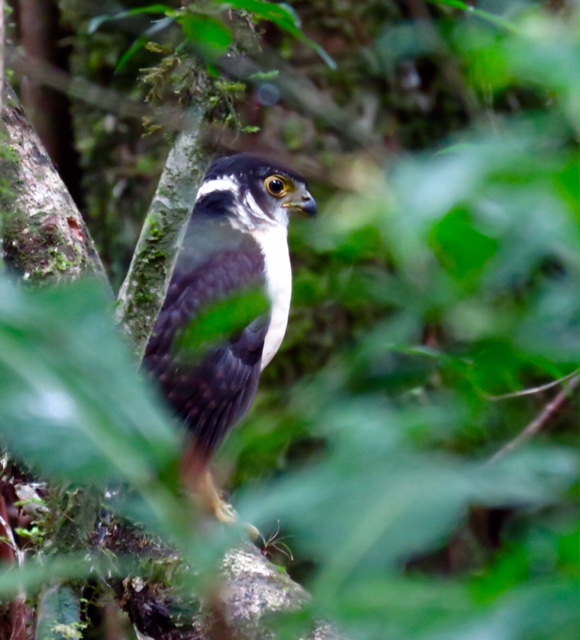
November 15th BELLBIRDS!
While having coffee at the Arenal Observatory Lodge we were treated to a family of Great Curassows at the feeders. Amazing! Back home in the Netherlands I will have to settle again with feral Rose-ringed Parakeets and the occasional Chaffinch.
This morning we were joined by Arenal’s best local guide, Christian. With him we set out to look for some difficult birds. Early on we were successful, as we were rewarded with excellent views of Thicket Antpitta, a notoriously skulking species.
On the trails we soon found a large flock that held two of our main targets, the Streak-crowned Antvireo and even better, a White-throated Shrike-Tanager!
The highlight of the morning was still to come. For the last week Christian had been hearing Three-wattled Bellbird in the valley behind one of the cabins. For me this was one of my most wanted birds in Costa Rica and since they are not at Monteverde this time of the year I was definitely not expecting to see any. As we arrived at the spot we already heard a bird calling very distantly from somewhere in the valley or on the distant slope opposite us. Where exactly the sound was coming from, was hard to say. I started scanning with the scope and behold, 15 minutes later I found four Bellbirds together on top of a tree at three kilometres distance! This would never have been possible without my Swarovski ATX65 telescope with swarovision. Thanks again, Vogelinformatiecentrum Texel and Swarovski Optik, for sponsoring me this awesome equipment!
After packing our bags we drove down to Herman and Pieter’s stakeout for the rare Keel-billed Motmot, which we luckily found incredibly quickly. After that we headed to the Bogarin feeders, where we had close encounters with a family of White-throated Crakes and several calling Uniform Crakes.
After driving for two more hours we arrived at La Selva Biological Station in the Caribbean lowlands, just in time to track down the range restricted Nicaraguan Seed-Finch.
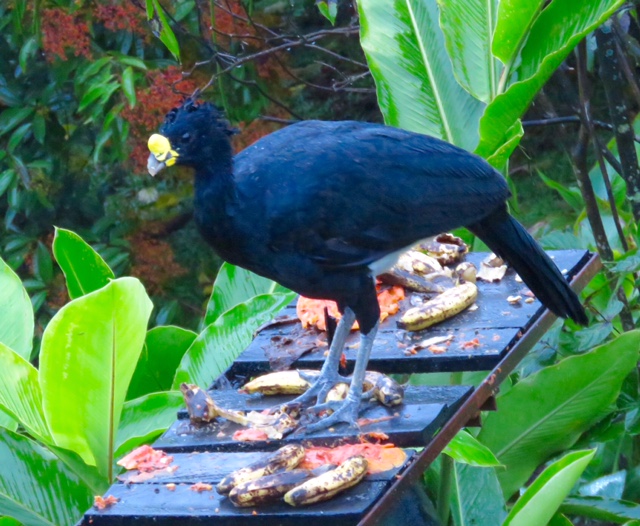
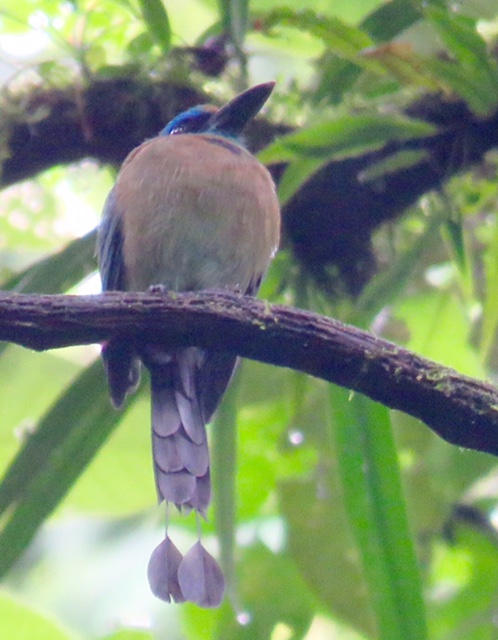
November 16th GOODBYE BEAUTIFUL COSTA RICA
Sadly this was already my last day in Costa Rica. I had an incredible time thanks to Pieter Westra of Aratinga Tours. The logistics, the guiding, the birds, all was just absolutely top-notch. He had persuaded several of Costa Rica’s top birders to join during several stages of the trip, which resulted in a very impressive list of species. Thanks to all you guys for helping me out in your wonderful country, your hospitality was overwhelming. And of course thanks to Adobe Rent a Car for sponsoring us your cars this whole week!
For this last morning at La Selva Pieter, Herman and I were joined by two of La Selva’s best guides, local legend Lenin and one of his sharp fellow young local guides.
Within a couple of hours we found Rufous-winged and Chestnut-colored Woodpecker and several other additions to the list. Snowy Cotinga did not cooperate, so I will have to come back one day for that stunning species, which is not a punishment at all!
Later on, we drove up to the La Paz Waterfall Gardens, but en route we had lunch at a wonderful small restaurant with hummingbird feeders, which resulted in White-bellied Mountain-Gem. More unexpected was a Black-tighted Grosbeak, brilliantly found by Herman on call.
La Paz Waterfall Gardens had generously offered us free access, which was a good thing since here we saw another two Costa Rica/Panama endemics, Black-bellied Hummingbird and the uncommon Sooty-faced Finch.
At the airport I said goodbye to Pieter and Herman and headed for Guatemala!
November 17th TOUCHDOWN IN GUATEMALA
Last night I had arrived in Guatemala City where I was greeted by my dad Kees Dwarshuis and Guatemala’s top birder John Cahill. With only 20 years of age, this guy has already set the Guatemalan big year and big day record and found over 15 new bird species for the country. Naturally I was looking forward to being shown around in this fascinating country by this local legend.
We had set the alarm at 3:30 AM and after just a couple of hours of sleep we were on our way to El Espinero, a Christmas tree-farm admits high altitude Guatemalan pine forest.
Birding was productive at this site despite the misty conditions and we easily found our main target, the exquisite looking Pink-headed Warbler. Other good finds here were the uncommon and near-endemic Black-capped Siskin, a White-breasted Hawk, a male Wine-throated Hummingbird and several Pine Flycatchers, a highly localized breeder in north-western Mexico that winters here in Guatemala. Best however was a Ruby-crowned Kinglet, one of the first records for Guatemala and a Guatemalan lifer for John.
In the oak forest lower down we continued our run of new Biggest Year birds and I was especially pleased with a splendid Blue-throated Motmot. This means that I’m well on my way to complete this awesome family.
After leaving El Espinero we headed for Panajachel, a touristic little town at the shore of Lake Atitlan. Here we had another productive afternoon birding session in the mixture of dry scrub and agricultural fields near town. I especially enjoyed our sighting of Blue-and-white Mockingbird, what a crisp looking bird! We ended with 42 new birds for my Biggest Year.
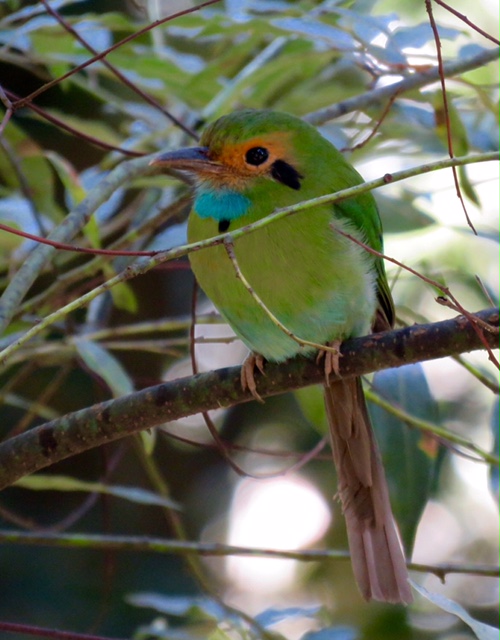
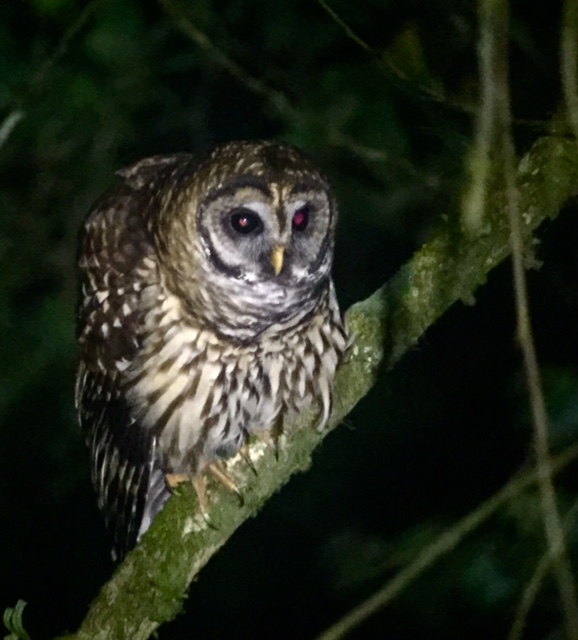
November 18th BIRDING AMIDST ACTIVE VOLCANOS
We woke up early to look for Whiskered Screech-owl near Reserve Natural Atitlan, but the only owl that responded was a fantastically showy Mottled Owl. After having breakfast we went into the reserve to look for the uncommon Bar-winged Oriole and thanks to John’s excellent hearing we soon found a pair that quietly foraged in the canopy.
Next we visited the gardens of the beautiful colonial style Hotel Atitlan. The garden – with a backdrop of Lake Atitlan and several active volcanoes – is by far the best place to find the beautiful Sparkling-tailed Woodstar and indeed, while having a coffee, we found two female birds.
Slender Sheartail took a lot more time and effort, but finally at the last possible stakeout we got lucky with two stunning males.
We had lunch in the scenic town of Quetzal Tenango and from there we headed for Fuentes Georginas Thermal Hot Springs where John had booked a cabin for us in advance. As we drove up to the hot springs we were soon surrounded by thick mist which made birding next to impossible. However we got lucky by bumping into a pair of White-faced Quail-doves feeding on some roadside trash.
We ended the day like we started, with a fantastic owl. This time not a widespread Mottled Owl, but the rare and localized Fulvous Owl. After that we took a dip in the thermal hot springs where we had the place completely to ourselves since they close off the place to the general public at night. They make an exception for people that overnight in one of their eight cabins.
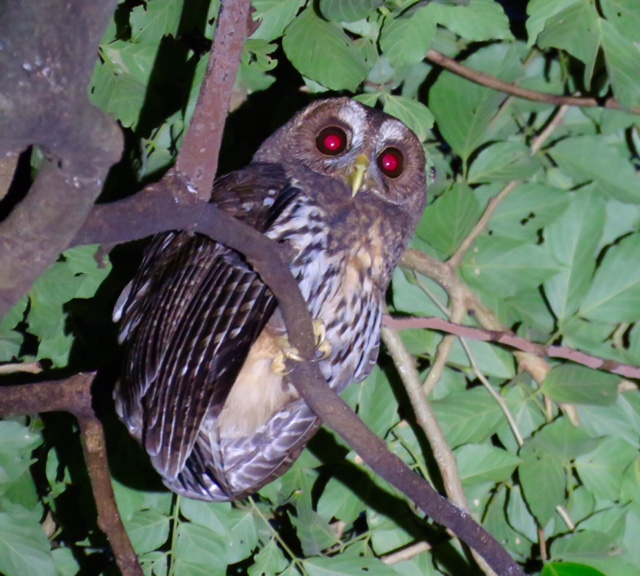
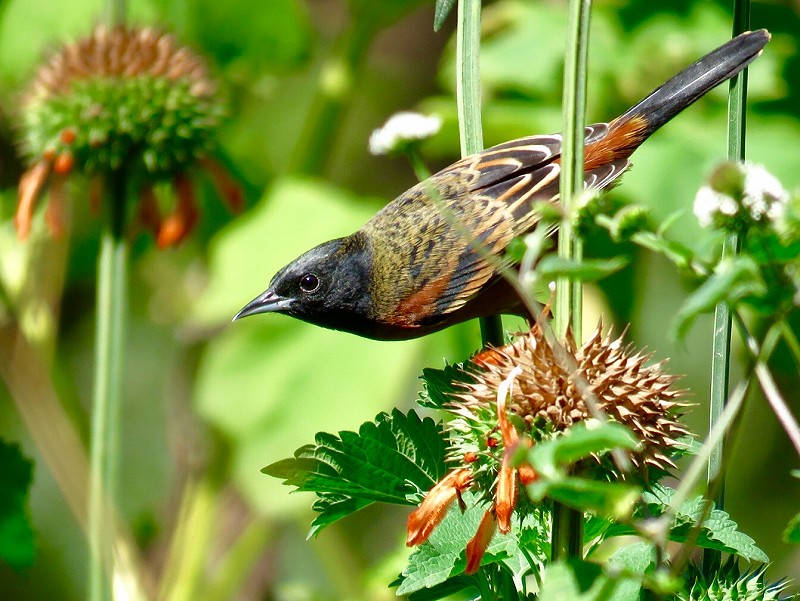
November 19th HEADING DOWN THE PACIFIC SLOPE
We had an early rise and soon found ourselves on the parking lot of Fuentes Georginas hoping to find a Horned Guan. This mythical bird is very rarely reported from this site so we knew our chances were slim and indeed we found no Guan. We did see several Grey Silky Flycatchers and Hooded Grosbeaks.
After a quick breakfast we headed down the mountain to try for the very rare Cabanis’s Tanager at one of Johns’ stakeouts near a large dam. It was windy and sunny so I had very little hope that we would actually find the bird. John proved me wrong when minutes after our arrival at their favourite fruiting three he located several birds on call. After pinpointing the sound in one of the adjacent trees we soon had great views of this rarely reported species.
Even lower down we did some birding around an abandoned town to look for migratory passerines. People had deserted the place because of an active volcano that could cover the town in ash at any moment. Birds probably had the same idea since we didn’t find much at this location.
After having lunch and a careful drive on a road that had more potholes and speed bumps than actual tarmac, we finally arrived at Los Tarralis Just in time for a quick round of birding with local guide Lester de Leon We booked quite a lot of success in that last hour till sunset. We managed 7 new birds for my big year and even better, I finally got to see the diminutive Tody Motmot!
We went to bed early since tomorrow at 2:15 AM the quest for the mythical Horned Guan would start.
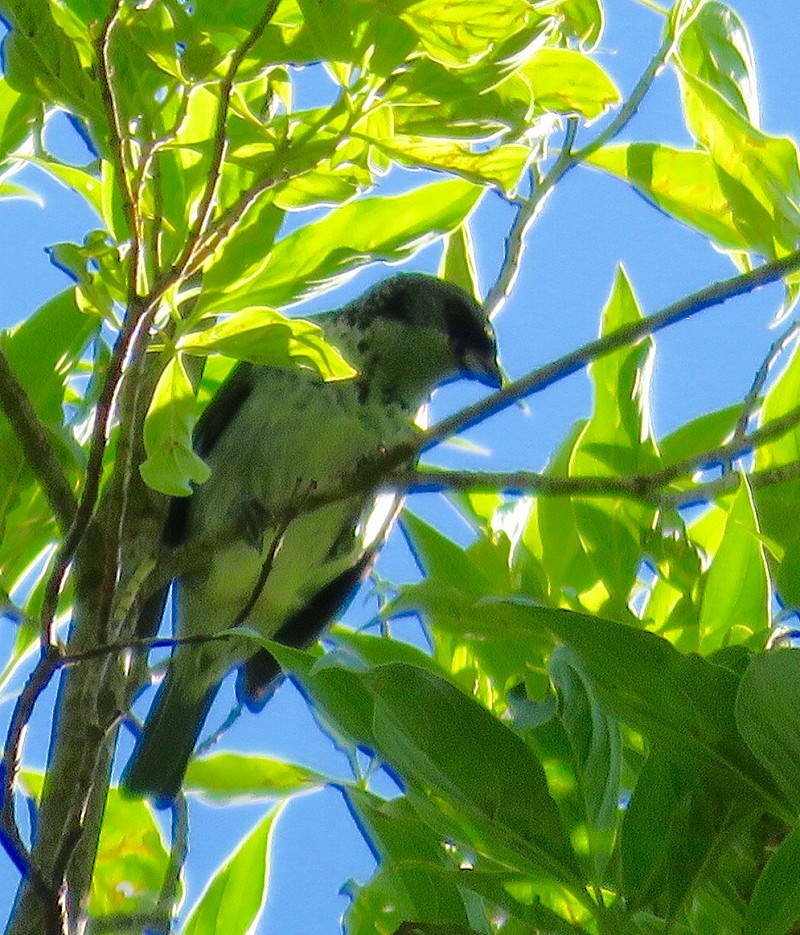
November 20th AN EPIC JOURNEY TO SEE AN EPIC BIRD
This morning the alarm went off at 2:15 AM. I had good reasons to get up so early since today we would embark on a quest to find Central-Americas most mythical beast, the Horned Guan. This extraordinary bird can almost exclusively be found in remote cloud forests in the highlands of Guatemala and the extreme southwestern part of Mexico. It is rare, endangered and utterly bizarre looking and few birders ever get a chance to come face to face with this bird.
At 2:30 AM we said goodbye the comfortable Los Tarralis Lodge – this lodge is part of the privately owned Los Tarralis Reserve which protects a cloudforest in which the Guan finds a save heaven – and we set of in a 4×4 with John Cahill and local guide Lester De Leon. My dad unfortunately had to stay back at the lodge because of a leg injury.
Around 4 AM we arrived at the starting point of the ‘Sendero de las Lagrimas’ which literaly means the Trail of Tears. The trail bears this name for good reasons… The starting point is at 1400 meters, on the lower east slope of the famous Atitlan Volcano. The Guan is found at an altitude of about 2500 meters, more than a kilometer higher up. With our headlights on we followed Mr.. Jerardo ‘Lalo’ Sipriano Lopez, the local trail guide, up the mountain. At first I thought ’this is not too bad’, but of course a volcano becomes steeper towards the crater. An hour later I was pouring with sweat and almost crying. The name ‘Trail of Tears’ suddenly made a lot of sense to me.
Finally, just before daybreak, Johns altimeter said 2500 meters; we were right on the money. Since I was pouring with sweat, only wore a T-shirt and it was about five degrees up here I was soon shivering. After a very welcome sunrise the waiting game began, but after three hours nothing had happened. I knew that if you don’t find the Guan within the first two hours after dawn your chances decrease dramatically. We decided to split up to increase the odds. John went higher up, Jerardo went off-trail to check out a steep ravine and lester and I went downhill. We had little success downhill and I was just telling myself ’this is never goanna happen’ when suddenly I heard somebody whistling from higher up. This could of course only mean one thing, somebody had found the beast! I raced up and soon ran into Lalo. He had indeed found a Guan! I followed the little man – with the stamina of a racehorse -uphill thereby almost passing out from sheer exertion. After going uphill for a while Lalo took a hard left and plummeted straight down into a ravine. I followed him blindly down the abyss, half falling, half running and half gliding. There was only one thing on my mind and that was Horned Guan. Suddenly Lalo stopped and pointed at a fruiting tree and there, totally oblivious to its perplexed observer, sat the most awesome creature I’d ever seen. Well I guess the photo tells the rest of this story. I love it when a plan comes together.
After this endeavour and taking a very welcome cold shower down at the lodge we packed our bags and headed for the Central Highlands. A long drive across pothole riddled concrete roads. We arrived at the Posada del Quetzal after dark.
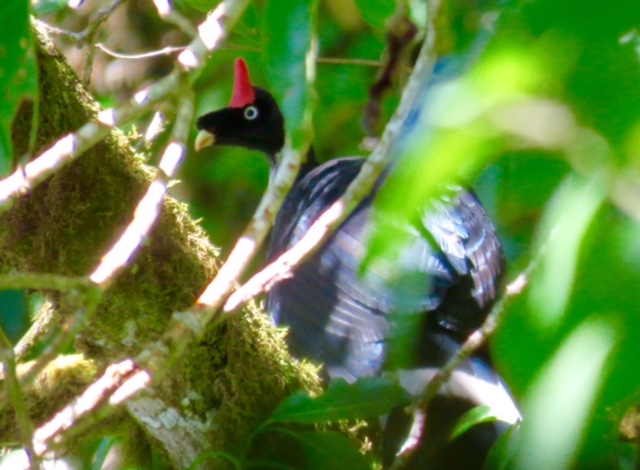
November 21st MY DAD HAS HIS MOMENT OF GLORY
We had a long day with a lot of different birding sites ahead of us. Right at daybreak we arrived at the wonderful Los Ranchitos Lodge to hopefully see the family of Azure-hooded Jays that regularly drops in top feed on moths that are attracted to the lights at the parking lot. We were lucky, as if staged a family of Jays dropped in right at the crack of dawn.
After a great breakfast at Los Ranchitos we headed to the small Reserva Natural Privada Rio Escondido. This privately owned reserve was created to protect the wintering grounds of the endangered Golden-cheeked Warbler. This beautiful bird breeds only in a tiny area in Texas and winters almost exclusively in the Guatemalan pine forests.
After meeting the friendly owners of this little reserve and a short introduction from their side we took a small trail into the pine forest. We quickly found a small flock that contained a male Hermit Warbler and Grace’s Warbler, but no sign of the Golden-cheeked yet. After 1,5 hours of searching it was my dad who became the matchmaker. While John and I were already a long way ahead he suddenly called out that he had found the Warbler and indeed there were two beautiful male Golden-cheeked Warblers showing nicely! Awesome!
Next we headed towards Laguna Chichoj, a small lake near the city of Coban. Here we were joined by John’s father Rob and his brother Peter who are also keen birders. At the small reserve we had great views of Sora and Ruddy Crake and we found the rather localized White-throated Flycatcher. Best however was the fourth or fifth record of Gadwall for Central-America. After the fourth Pacific Swift for the Emirates, the second Siberian Blue Robin for the island of Java, the 29th record of Long-tailed Jeager for New Zealand, the second documented record of Little Ground Tyrant for Ecuador and one of the first records of Rubby-crowned Kinglet, this is yet another country vagrant during this Biggest Year.
We had one more stop in the late afternoon at Riserva Privada Chajbaoc, which is owned by fanatic Guatemalan birder Max Noack. Here we heard both Middle American Screech-owl and Scaled Antpitta. Unfortunately we couldn’t get a view of either species.
We had been invited by John’s lovely family to spend the night and have dinner at their place. ‘Their place’ was not just your ordinary home. It turned out that they run a huge conservation and education programme on their fully sustainable and ecologically friendly range. We walked in while more than 120 young girls from remote native communities were having class in one of the buildings. They were getting lectured on migrant warblers that winter here in Guatemala. You see, Johns mother Tara and his father Rob started the Community Cloudforest Conservation (cloudforestconservation.org) through which they engage remote native communities in conservation. They bring this in to practice by offering a free week long course on conservation and ecology on their range. They focus on young girls since this is the most marginalised group in Guatemala. Through this ground-breaking programme they build a promising future for already thousands of these girls. What fantastic people. My dad and I feel privileged that we were invited at your home.
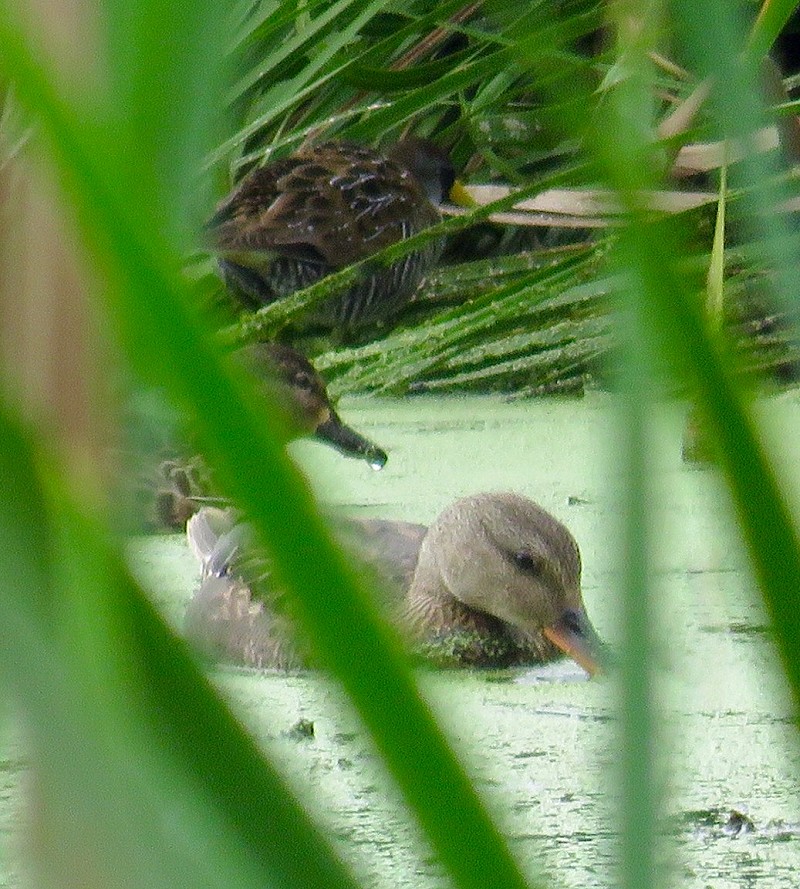
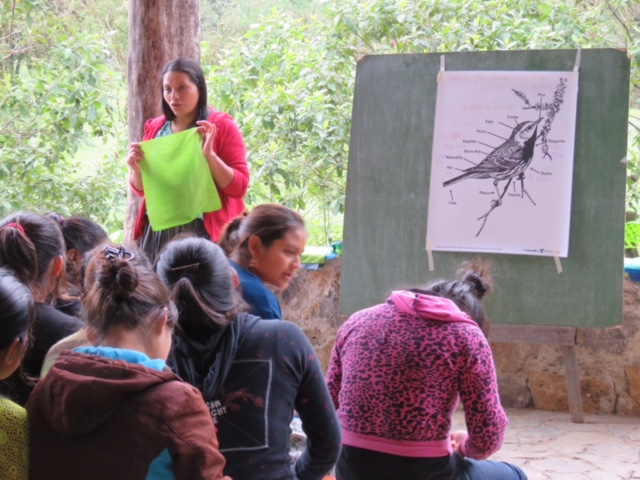
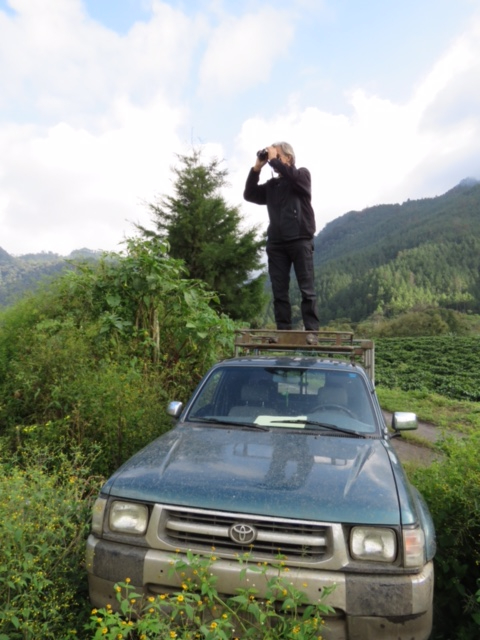 ‘Paps’ Kees Dwarshuis birding (Arjan Dwarshuis)
‘Paps’ Kees Dwarshuis birding (Arjan Dwarshuis)
November 22th GOODBYE GUATEMALA
Already our last morning in Guatemala. We said goodbye to Rob and Tara and wished them all the best with their incredible conservation and education programme. Together with John, Peter and my dad we headed to one last site to try for the incredibly secretive Belted Flycatcher. At daybreak we stopped at a gas station were we were joined by Max and in his 4×4 we headed up a small track.
We head a great start with a Guatemalan Pygmy-owl that gave excellent views. The Belted Flycatcher however didn’t even give a squeak and at 8 AM it was time to head off to Guatemala City to catch my 3 PM flight to Cancun.
En route we made one last stop in the dry intermontane thorn-forest. This produced Russet-crowned Motmot and a couple of other dry forest specialties.
We had a great trip in Guatemala thanks to the fantastic guiding by John Cahill. I can highly recommend hiring this incredibly sharp young birder to organize and guide your birding trip in Guatemala. This will give you a fair chance to come face to face with one of the most incredible birds in the world, the Horned Guan.
Arjan Dwarshuis
http://www.arjandwarshuis.com/#biggestyear
http://world.observation.org/arjan.php
PLEASE MAKE A DONATION NOW
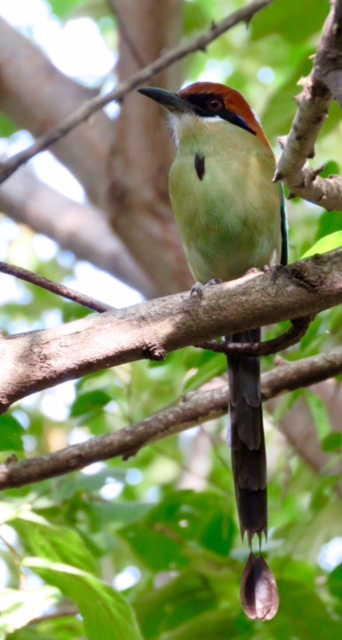
November 23th BIRDING THE YUCATAN PENINSULA
Last night I had arrived in Cancun, the renowned party capital on Mexico’s Yucatan Peninsula. However I was not there to party, I was there to find Yucatan’s endemic birds…
I was picked up from Cancun Airport by Michael Hilchey of BRANT TOURS (www.branttours.com) and Alberto Martinez of Royal Flycatcher Birding Tours (www.royalflycatcherbirding.com) and together we drove south to the town of Felipe Carrillo where we would spend the night. En route we got a huge surprise when suddenly a small cat crossed the road. The animal stopped for a few seconds along the side of the road and to our amazement it was Margay!! Wow, what a start to our 17 days in Mexico!
After a couple of hours of sleep we headed towards the Sian Ka’n Biosphere Reserve where we would bird the entire day. This vast wilderness area still holds a healthy population of Jaguars and other cats and in addition to this most of Yucatan’s endemic birds can be found here.
As soon as it got light we started finding new Biggest Year birds. Best were Yucatan Vireo, the peculiar Rose-throated Tanager, Caribbean Elaenia and Stub-tailed Spadebill.
By the end of the morning we had found more than half of the Yucatan endemics. This meant that from now on it was mostly the more difficult endemics that we had to look for. We did pretty great at this with Grey-throated Chat, a fantastic Mayan Antthrush and as dusk fell Yucatan Poorwill.
After dark we headed northwest towards the small town of Xocen where we were welcomed by top birder Rene Valdez and the local bird club named the ‘Yucatan Jays’. We spent the night in their clubhouse in the middle of the forest.
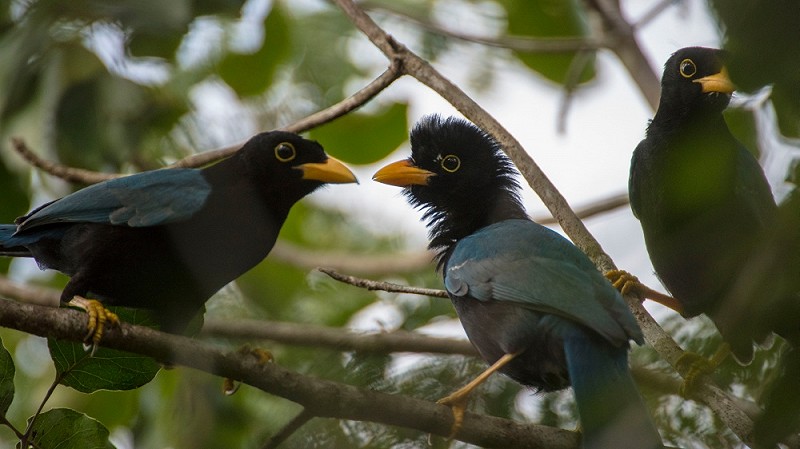 Yucatan Jay Cyanocorax yucatanicus (Alberto Martinez)
Yucatan Jay Cyanocorax yucatanicus (Alberto Martinez)
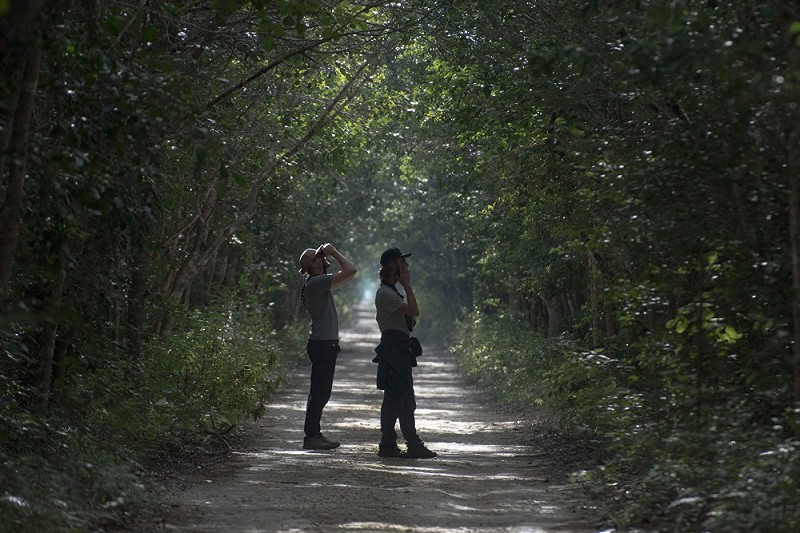 In search of the jay (Alberto Martinez)
In search of the jay (Alberto Martinez)
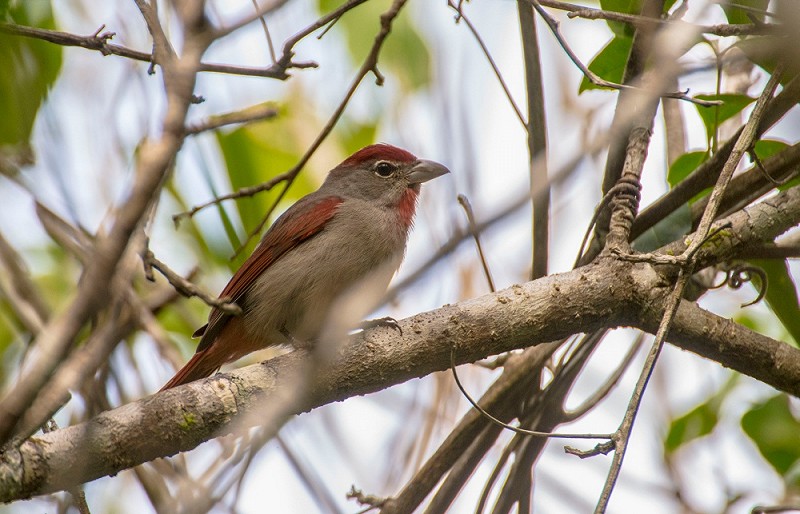 Rose-throated Tanager Piranga roseogularis (Alberto Martinez)
Rose-throated Tanager Piranga roseogularis (Alberto Martinez)
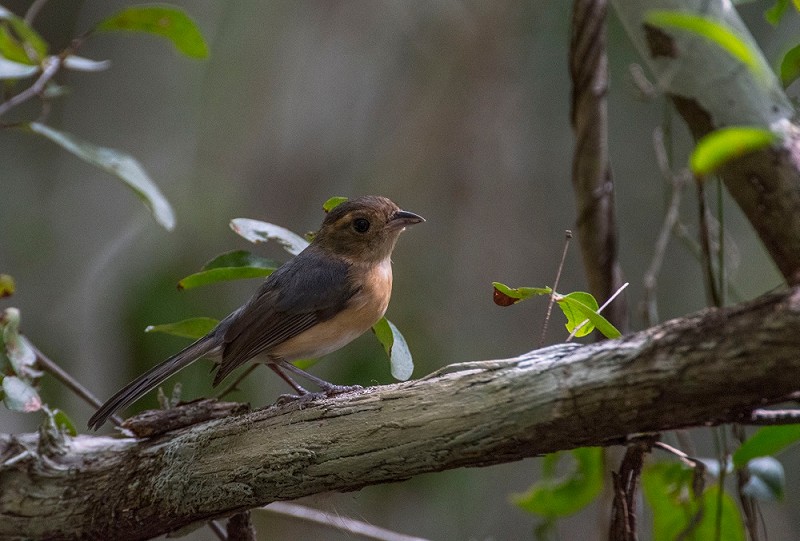 Grey-throated Chat Granatellus sallaei female (Alberto Martinez)
Grey-throated Chat Granatellus sallaei female (Alberto Martinez)
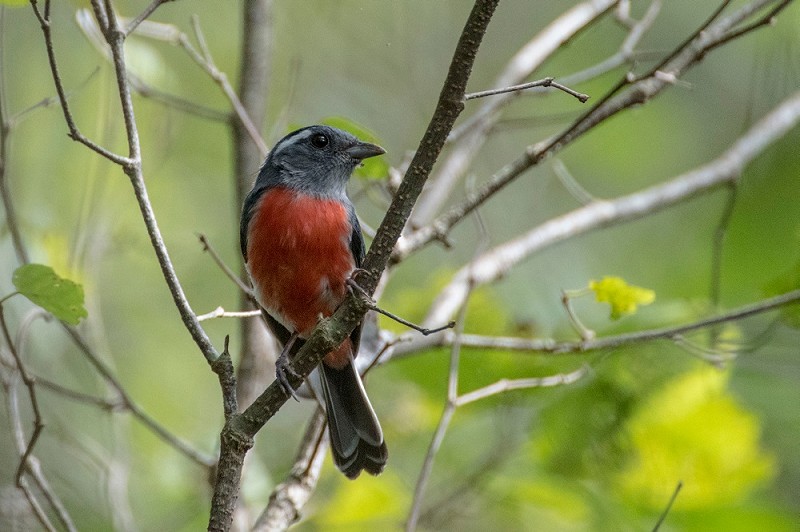 Grey-throated Chat Granatellus sallaei male (Alberto Martinez)
Grey-throated Chat Granatellus sallaei male (Alberto Martinez)
November 24th HUNTING FOR OCELLATED TURKEYS ON THANKSGIVING
Yesterday we couldn’t find any Ocellated Turkeys – this bird is common further south around the famous Tikal Archaeological Site, but rare in the dryer northern part of the Yucatan Peninsula – so today we were on a mission; we had to find the Turkey! There was one problem however, today was Thanksgiving, not the best time of the year to look for turkeys haha. We checked corn field after corn field and drove across countless dirt roads, but no turkeys. I guess they were hiding on the worse day of the year to be a Turkey.
In the late morning Michael, Alberto, Rene and I drove north towards the coast to look for two range restricted endemics, the Yucatan Wren and Mexican Sheartail. The Wren proved easy and the Sheartail even more so. We found several gorgeous males on the feeders of Ria Maya Restaurant while having a delicious seafood lunch. A great combination.
The endemic Yucatan Bobwhite proved more difficult to find and it was only in the dying seconds of the day that we found a covey of these cute little quails.
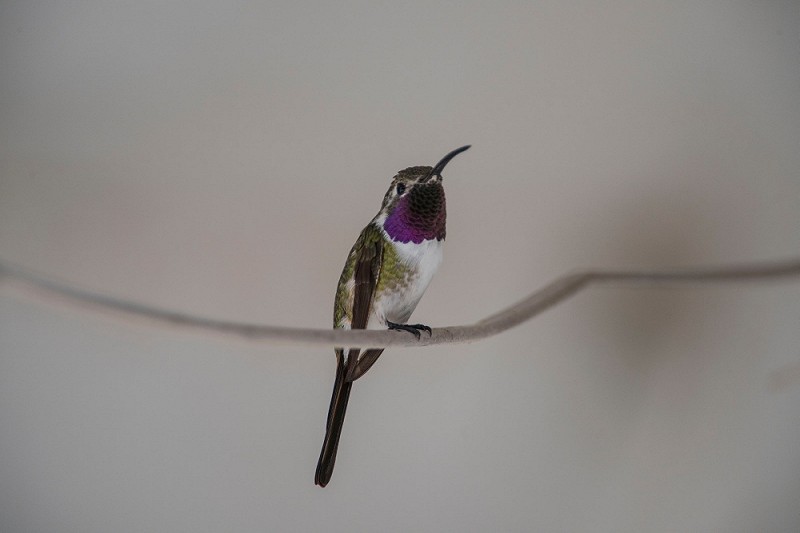 Mexican Sheartail Doricha eliza (Alberto Martinez)
Mexican Sheartail Doricha eliza (Alberto Martinez)
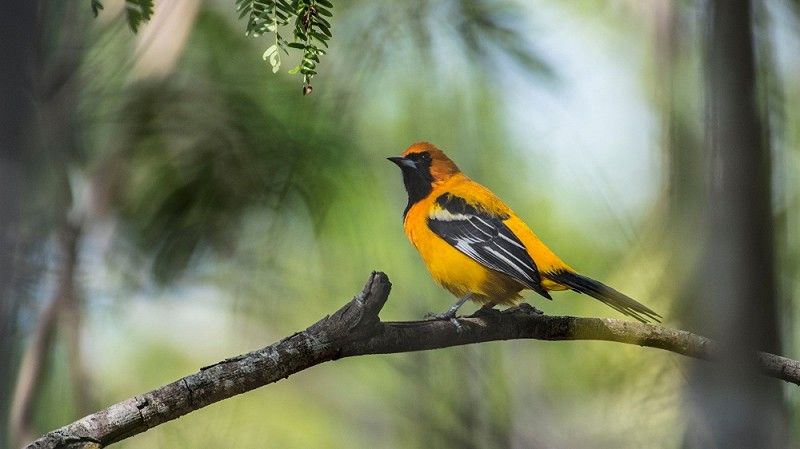 Orange Oriole Icterus auratus (Alberto Martinez)
Orange Oriole Icterus auratus (Alberto Martinez)
November 25th ROUNDING UP YUCATAN
We had one more morning before we had to catch our afternoon flight from Merida to Tuxtla Cutierrez. We spent most part of the morning on a fruitless search for Ocellated Turkey. In the late morning we made several stops in the mangroves which resulted in excellent looks at the local subspecies of Clapper Rail, several Mangrove Warblers and a heard-only Rufous-necked Woodrail.
In the afternoon we gave it one last shot at Ocellated Turkey around the Archaeological Maya site of Sihunchen, but again no Turkeys. I guess they were still too much in shock from Thanksgiving and hiding somewhere deep in the Yucatan forests…
November 26th FROM TUXTLA GUTIERREZ AL THE WAY DOWN THE PACIFIC SLOPE
After another short nights rest we left our hotel in Tuxtla and headed for Elcote Biosphere Reserve to look for the enigmatic Nava’s Wren. This endangered species with spectacular long bill and beautiful simplistic song lives only in the limestone forests of the Mexican Provinces of Chiapas and Oaxaca, where it creeps across the ground among sharp rocks.
When we arrived the weather was not in our favor. It was mildly drizzling and quite misty, not ideal conditions for a shy and inconspicuous wren. We had to check out about five different sites before we finally got a response which resulted in superb views of this often hard to see bird.
After tracking down the other Mexican endemic at Elcote, the Long-tailed Sabrewing, we drove back to Tuxtla and up to the dry ridge of the spectacular Canyon el Sumidero. Our target here was the Belted Flycatcher, a bird we had been trying hard for, but missed in Guatemala.
This time the bird cooperated and we had great views of a pair with a very showy Ticket Tinamou as a welcome bonus. Lower down we found Varied Bunting and the beautiful Red-breasted Chat.
A short stop at the Tuxtla Zoo – I never thought I would be birding in a zoo this Year – didn’t result in the hoped for Northern Potoo, but did materialize in a couple of endemic Green Parakeets. Luckily we got in for free thanks to Albertos Mexican style smooth talking with the – female – guard.
From here we headed west down the Pacific Slope in a race against the clock to get to the site for Giant Wren before dark. En route we quickly picked up the exquisite endemic Rose-bellied Bunting. We arrived just in time at the coast because right at sunset we found a family of the spectacular Giant Wren, the largest wren in the world. Half an hour later we found our last new bird for today, a showy Pacific Screech-owl.
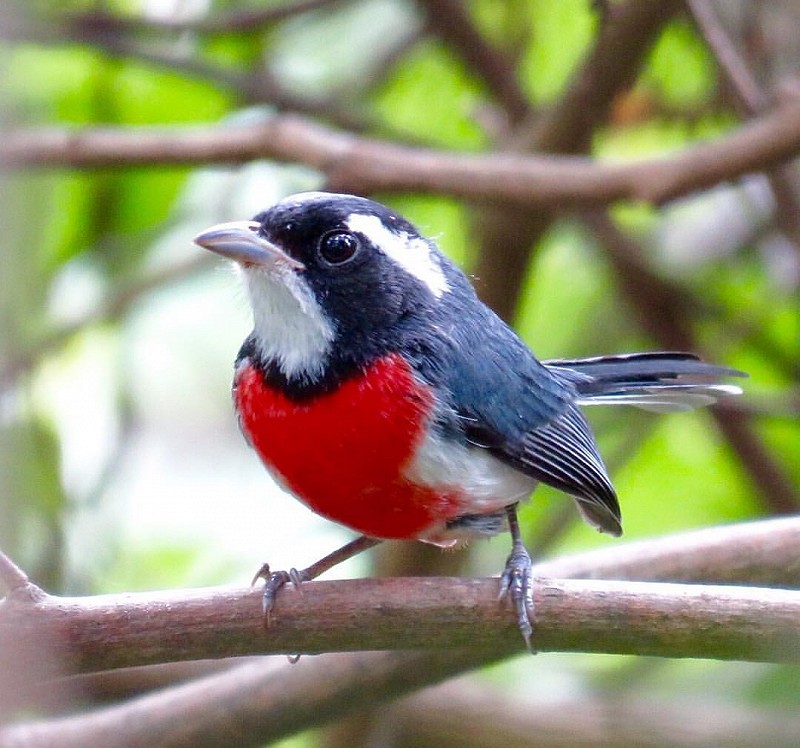 Red-breasted Chat Granatellus venustus (Arjan Dwarshuis)
Red-breasted Chat Granatellus venustus (Arjan Dwarshuis)
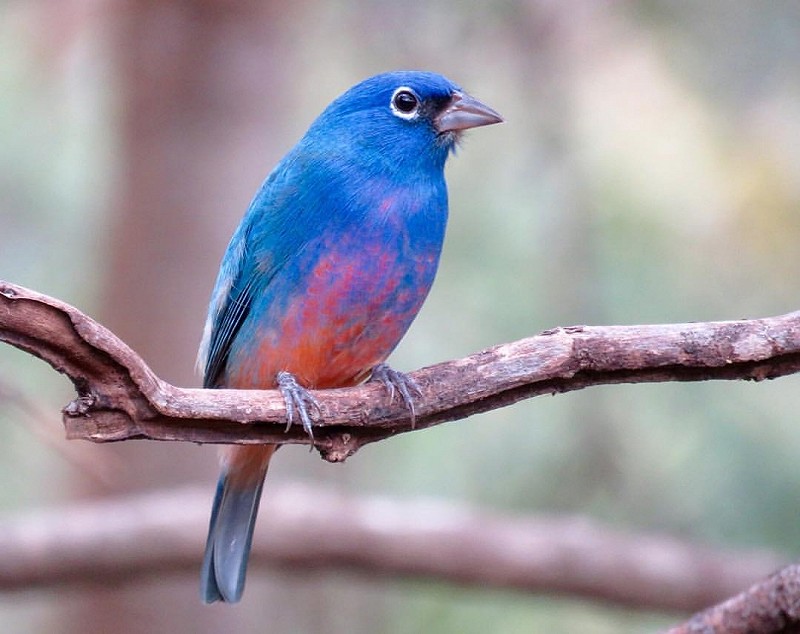 Rose-bellied Bunting Passerina rositae (Arjan Dwarshuis)
Rose-bellied Bunting Passerina rositae (Arjan Dwarshuis)
November 27th A POISONOUS APPLE …
The most important bird to find this morning was Cinnamon-tailed Sparrow which is restricted to the Isthmus of Tehuantepec. As expected it was windy this morning – it is always windy on the Isthmus – but I wasn’t expecting a freaking hurricane. Imagine finding a sparrow when standing straight is already next to impossible. Miraculously we located a pair of Sparrows after just half an hour of searching. Even more unexpected we also found Green-fronted Hummingbird, a species we could only find here.
We left the windy isthmus and headed south towards Huatulco. Here we would spend the next two nights. In the afternoon we birded the dry forest in the hinterland of this coastal town. We were joined by one of Mexico’s best birders, Erik Antonio Martinez. After a bit birding in the dry forest – with Golden Vireo and Colima Pygmy-owl – we headed to the coast to look for Northern Potoo in the mangroves. Here we did something incredibly stupid…
Both Erik, Michael and I took a tiny bite of something that looked like small apples that had fallen of some fruiting tree in the forest. About ten minutes later I got a burning throat and my lips began to tingle. Next Michael started to develop the same symptoms. I started freaking out, we had eaten some sort of poisonous apple! We decided to go to the hospital just in case; better safe than sorry. After the doctor had checked us out she decided that we needed a Cortisone injection to stop the effects of the poison. Now comes the hilarious part. She decided to give these shots with a syringe the size of a baseball bet… I was the first to get the shot in my arm at which point Michael and Erik started to look a little pale. Next up was Michael who at the moment he saw blood passed out. After waking up half a minute later Erik started to look as pale as a ghost so the nurse had to put him on oxygen. Finally after two hours we were out of the hospital feeling like an idiot. Note to self: stay away from poisonous fruits from now on…
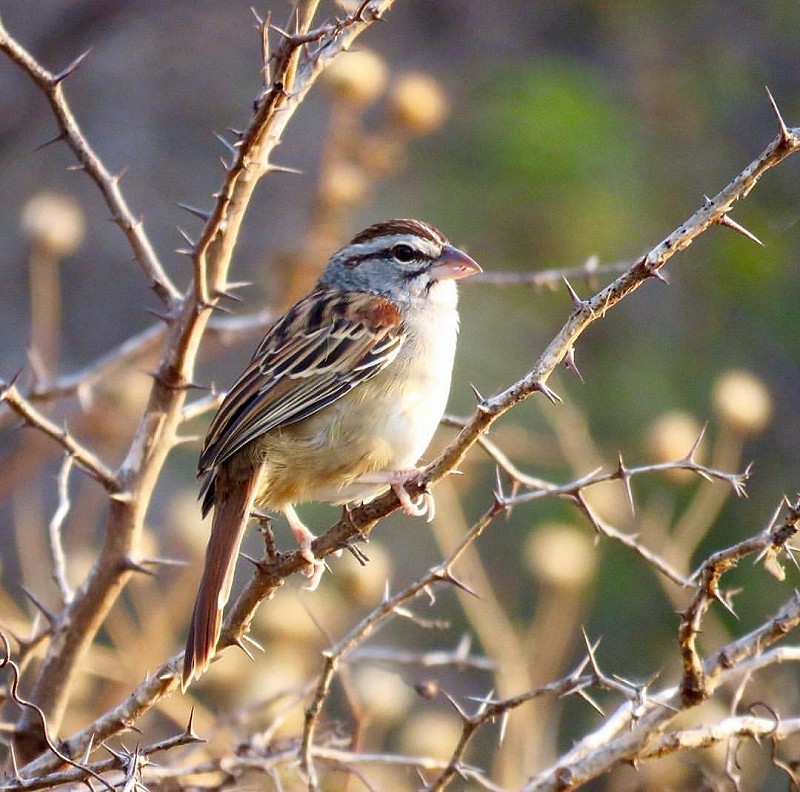 Cinnamon-tailed Sparrow Peucaea sumichrasti (Arjan Dwarshuis)
Cinnamon-tailed Sparrow Peucaea sumichrasti (Arjan Dwarshuis)
November 28th BIRDING THE PACIFIC SLOPE OF OAXACA
Early morning Erik, Alberto, Michael and I drove up to the more humid Pacific slope above Huatulco. As it got light we started roadside birding and quickly started to find new birds. One of the main targets was the threatened Oaxaca Hummingbird. We had no trouble at all finding this species feeding along the roadside. Cinnamon-sided Hummingbird proved far more challenging and only after a whole morning of searching Michael finally found one. Other good birds up here were Wagler’s Toucanet and Grey-crowned Woodpecker.
In the evening we tried our luck at a stakeout for Lilac-crowned Parrot, but unfortunately only White-fronted Parrots flew by on the way to their evening roosts.
November 29th HITTING THE JAY-SPOT!
I’m always very excited to go on a pelagic and today was no exception. At 6 AM sharp Erik, Alberto, Michael and I were ready and pumped up at the Huatulco docks and after a quick safety instruction from the captain – NOT, this is Mexico – we set out to the edge of the continental shelf. The great thing about Huatulco is that the shelf is only three miles of shore, so even for a Mexican boat that goes less than three knots it takes less than an hour to get there.
One of the first birds we saw was a Red Phalarope of which we would see hundreds today. We also noted several smart adult Pomnarine Jeagers, always a stunning species to see. When we reached the shelf the real fun started with dozens of Wedge-tailed and Galapagos Shearwaters, now and then a Black-vented Shearwater and several Black and ‘Chapman’s’ Leach’s Stormpetrels. A real highlight for me were four species of Booby (Nazca, Brown, Red-footed and Blue-footed) and the smallest Storm-petrel in the world, the Least Storm-petrel. Around 10 AM we decided to head back so that we could make some planned birding stops during the six hour drive to Oaxaca City.
After a quick lunch in Huatulco we said goodbye to Erik and headed north to Oaxaca City. Our first stop in the foothills proved a good one since we found a small flock of the endemic Red-headed Tanager. The real prize however awaited us in the pine forest higher up…
We of course hoped to see the ultra-rare White-throated Jay, but since this beautiful species is almost never seen here we thought there was zero chance. The Jay however had other plans. Michael played some calls at a random bend in the road and to our amazement a Jay immediately responded! Tense minutes followed – especially when initially everybody but me saw the ultra-skulking bird – but eventually we all got great views!
Tired but very content we reached Oaxaca City where we treated ourselves to a classic mole dinner!
November 30th SWEEPING THE OAXACA VALLEY
The dry Oaxaca Valley is one of the most endemic rich areas in Mexico. Some are easy to find, but the most wanted birds are all notoriously difficult. Normally one would take at least three or four days to track these birds down, but since my Biggest Year doesn’t quite qualify as ‘normally’ we had only 1,5 days in the valley.
We started our first day birding the entrance road to the famous Monte Alban archaeological site. Altought weather conditions were perfect we struggled to find any of the star birds and after 9 AM we decided to try our luck somewhere else. We drove through the city and drove up the north slope of the Oaxaca Valley. Despite the hot wind still conditions we were far more successful here with a pair of Oaxaca Sparrows and even better two gorgeous Slaty Vireos.
Next up was one of the hardest and most-wanted birds in Oaxaca, the endangered Dwarf Jay. To find this bird we drove up into the old growth pine forest at around 3000 meters altitude. Just half an hour after our arrival we found a big flock with Grey-barred Wrens and several other largish birds and with them were three stunning Dwarf Jays! Nice!
We drove down again and east towards the town of Teotitlan. Above this town there are some nice shrubby hillsides where my friends Jelmer Poelstra and Bas Garcia had seen a Dwarf Vireo a couple of days earlier. There tip was spot-on because right where they had seen it we found this rare species. Thanks boys!
We finished the day in style, with an owl. Several Whiskered Screech-owls gave fantastic views in the pine forest above Teotitlan.
December 1st BIRDING AMONG ANCIENT ZAPOTEC RUINS
After yesterday’s successful run through the Oaxaca Valley there were only few targets left. For the first one – the Ocellated Thrasher – we headed up to the famous Monte Alban Archaeological Site. Normally the site opens to the public as late as 8 AM, but after Alberto ‘sweetlips’ Martinez had a little chat with the female guard we were in at 7 AM, for free!
What an amazing experience, we had the whole 2000 year’s old Zapotec City to ourselves! This site is about as spectacular as it gets and I must say I was deeply impressed. More importantly we found a pair of Ocellated Thrashers – again right were Jelmer and Bas had seen it a couple of days before – and even better a young male Beautiful Sheartail, a rarely reported species.
From the late morning onwards we could do things on a more relaxing pace, especially since we found Grey-breasted Woodpecker with ease. This meant looking for North-American passerines and delicious local food on a typical Oaxaca market. For a moment there I felt like your ordinary tourist.
At the end of the day Alberto dropped Michael and me off at the airport for our flight to Mexico City.
Alberto, thank you so much for everything. You are a fantastic birder and a great travel companion.|
December 2nd
At 5 AM, after just a couple of hours of sleep, we were picked up by Rafael Calderon, one of Mexico City’s finest bird guides. We started at one of Mexico’s most threatened habitats, a small marsh right at the edge of the city. Here we found the endangered Black-polled Yellowthroat without too much effort and we got a showy Aztec Rail as a huge bonus. Both these species have suffered inmensly from the ever expanding human population in the Transvolcanic Belt.
After finding Hooded Yellowthroat and Black-backed Oriole in Mexico City’s Botanical Gardens, we drove over to another critically endangered habitat, a small patch of grassland in the mountains above Mexico City. Here we tracked down the endangered Siera Madre Sparrow, brilliantly picked up by Rafael.
We finished with a bang. After being so succesfull in the morning we had time to go for Black-Chested Sparrow and the enigmatic Balsas Screech-owl. We managed brilliant views of both!
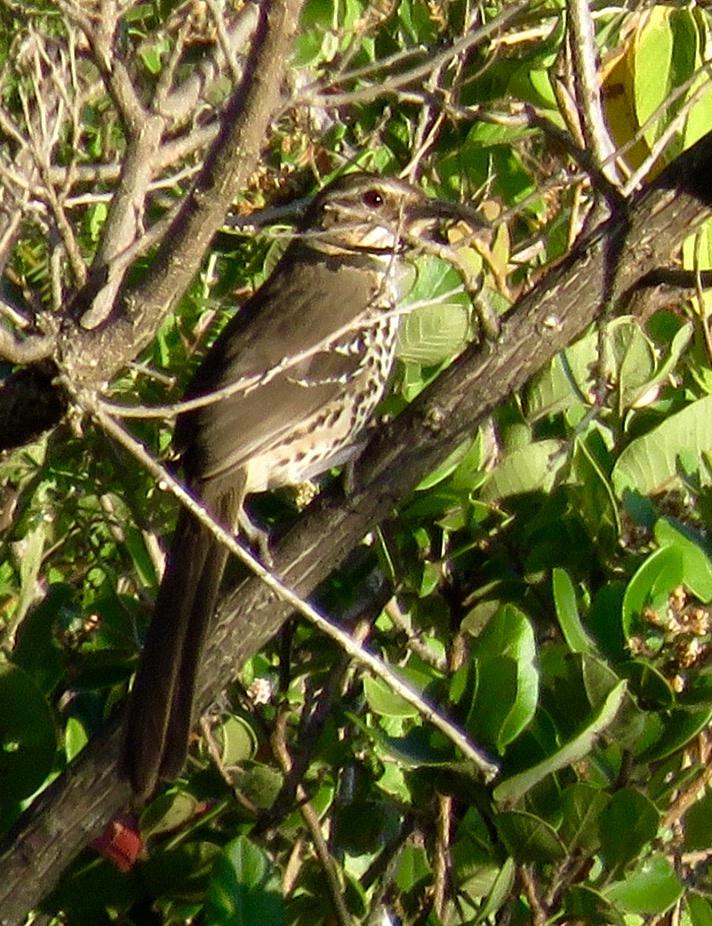
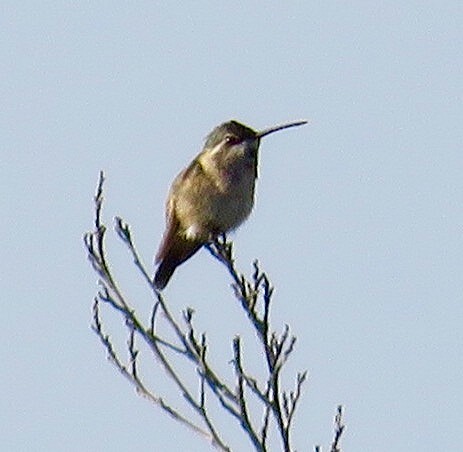
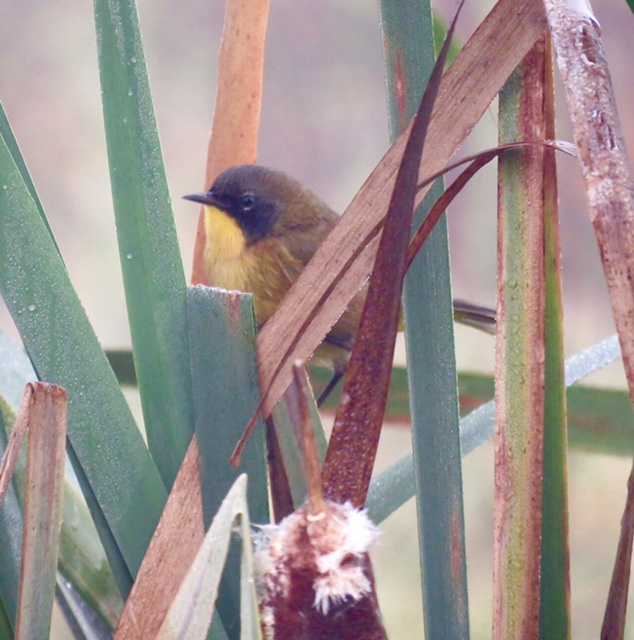
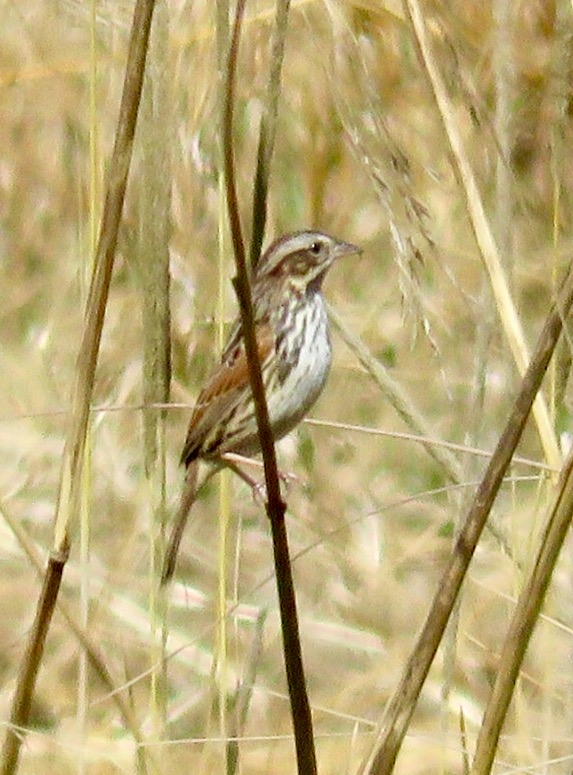
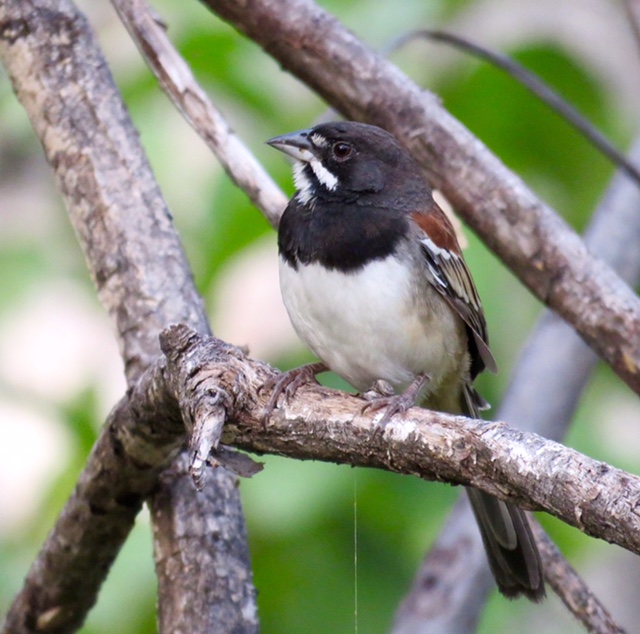
December 3rd CHASING THE BANDED QUAIL
Last evening we had heard the enigmatic Banded Quail, but since we of course all wanted to see this beautiful species, we decided to devote our morning in tracking it down.
We started where we had left off last evening, at the field where we heard the bird calling. We played some tapes, walked the roadside and scanned the edges of the cornfields, but to no avail. After an hour or so we decided that we had to move on since we had to drive some time to get to the site for Transvolcanic Jay. While heading back to Thetlamatzin Lodge Rafael suddenly yelled ‘stop!’ and there, to our amazement sat a Banded Quail on a roadside pole! We reversed slowly allowing Michael Retter to take one fantastic photo before the bird – and so it turned out at least eight other birds – disappeared in the corn field. Awesome.
For the Transvolcanic Jay we had to drive to a small village where we began our search for this often difficult species in the late morning. After searching in vain for quite some time at the conventional site for the Jay, we decided to test our luck along a small dirt road on the other side of town. This proved a golden decision since we ran into two different family groups.
After that we headed back to Mexico City where – after testing our patience in traffic – we arrived at the airport in time for our flight to Mazatlan.
What an incredibly successful run through the Transvolcanic Belt. Thanks to Rafael Calderons expert guiding that is. I can recommend him very much to any birder visiting this interesting part of Mexico.
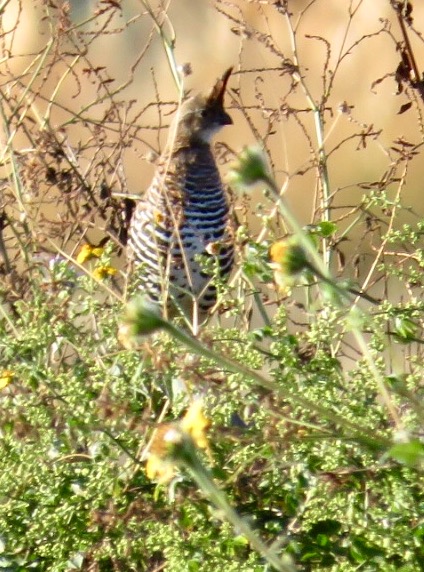
December 4th BIRDING AROUND SAN BLAS
After speeding a short night in a hotel near Mazatlan we headed south towards the town of San Blas. We arrived at daybreak in the mangroves near town where we were met by Mark Stackhouse. Mark has been living and birding in San Blas for over 20 years now so he knows the surroundings abundant birdlife like no other.
We started with a short relaxing boat ride through the mangroves to twitch a roosting Northern Potoo. Luckily the bird sat at its usual snag, so half an hour later this special bird was under the belt. After a short sweep through some coastal scrub – which materialized in a wintering Lucy’s Warbler – we made a short stop at Mark’s house to look for Grayson’s Thrush, a very localized island subspecies that winters in small numbers along the coast of San Blas. This bird may well turn out to be a separate species in the future, so we were keen on seeing it. Lucky the bird cooperated like a charm and ten minutes later we were on our way again.
We spent the late morning and afternoon finding Mexican Parrotlet and Elegant Quail, but dipping on the endemic San Blas Jay, which reaches the northern end of its distribution south of San Blas.
In the evening we said goodbye to Mark, had dinner at the town Tepic and drove up into the pine forest. Here we checked in at the Rancho La Noria bungalows, the only known place in the world to see the poorly known and enigmatic Cinereous Owl…
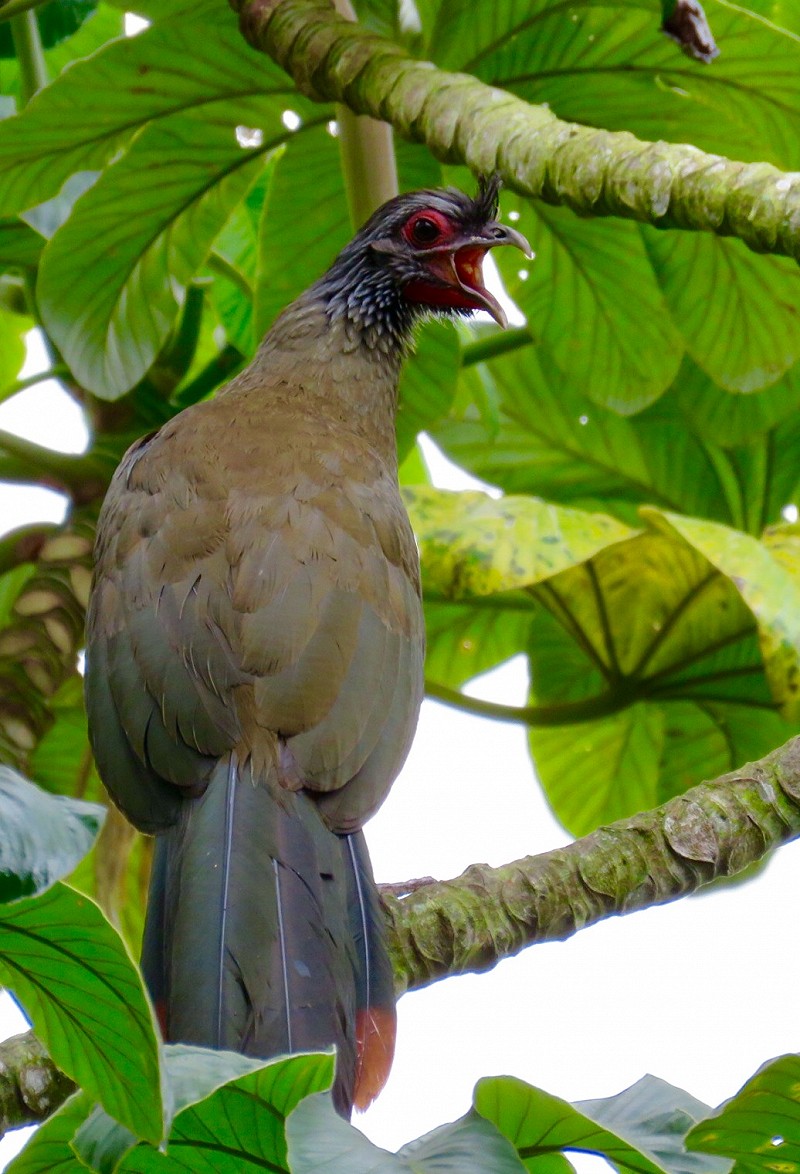
December 5th TRACKING DOWN THE CINEREOUS OWL
Last evening after dusk we had looked for over three hours for the Cinereous Owl, but only managed to briefly hear it. So at 4:30 AM we were up and out in the pine forest again looking for owls. We heard a Cinereous Owl singing right away, but it went quiet shortly thereafter. It was already getting light and still nothing had happened, our chances to connect with this enigmatic owl were diminishing with every minute. We decided to give it one last burst of playback and just when we decided to give up I suddenly saw a huge owl flying in. Cinereous Owl! For the next ten minutes we had amazing views of this rare beast as it was looking down at us from a pine tree, amazing.
It was already light when we got back to our cabin, so we decided to immediately commence with birding. Spotted Wren was easily found around the cabins. For the threatened Mexican Woodnymph we had to drive a little bit further down. A big bonus here was a Grey-collared Becard.
In the late morning we gave it one last go at the San Blas Jay, but a couple of hours later we had to give up on this bird. I guess we had used up our luck with Jays this week after finding White-throated, Dwarf and Transvolcanic Jay. Luckily this proved untrue as just before dusk we found a flock of Purplish-backed Jays south of Mazatlan.
December 6th THE MIND BOGGLING TUFTED JAY
We left Mazatlan when it was still dark and arrived right at dawn at the Tufted Jay Reserve along the famous Durango Highway. The scenery here is absolutely breathtaking with a huge pine forest covered Canyon stretching out as far as the eye can see. Our main target here was of course the most beautiful of all Mexican endemics, the Tufted Jay. We decided that are best tactic to find a flock of these birds would be to slowly drive up and down the road while listening out for their calls. This proved a golden move as only 15 minutes later we heard the distinctive Star Wars gun-like calls of Tufted Jays next to the road. We stopped and had fantastic looks at a group of eight birds. Our main target was in the bag!
We spent a couple more hours birding around the Tufted Jay Reserve. Our best sighting here were two wintering Colima Warblers.
We headed further down the highway towards Durango to do some birding in the arid scrub covered hillsides. This resulted in one very unexpected sighting, a male Lucifer Sheartail.
We spent the rest of the day on the road and spent the night in the city of Durango since it is unsafe to drive at night in this part of Mexico.
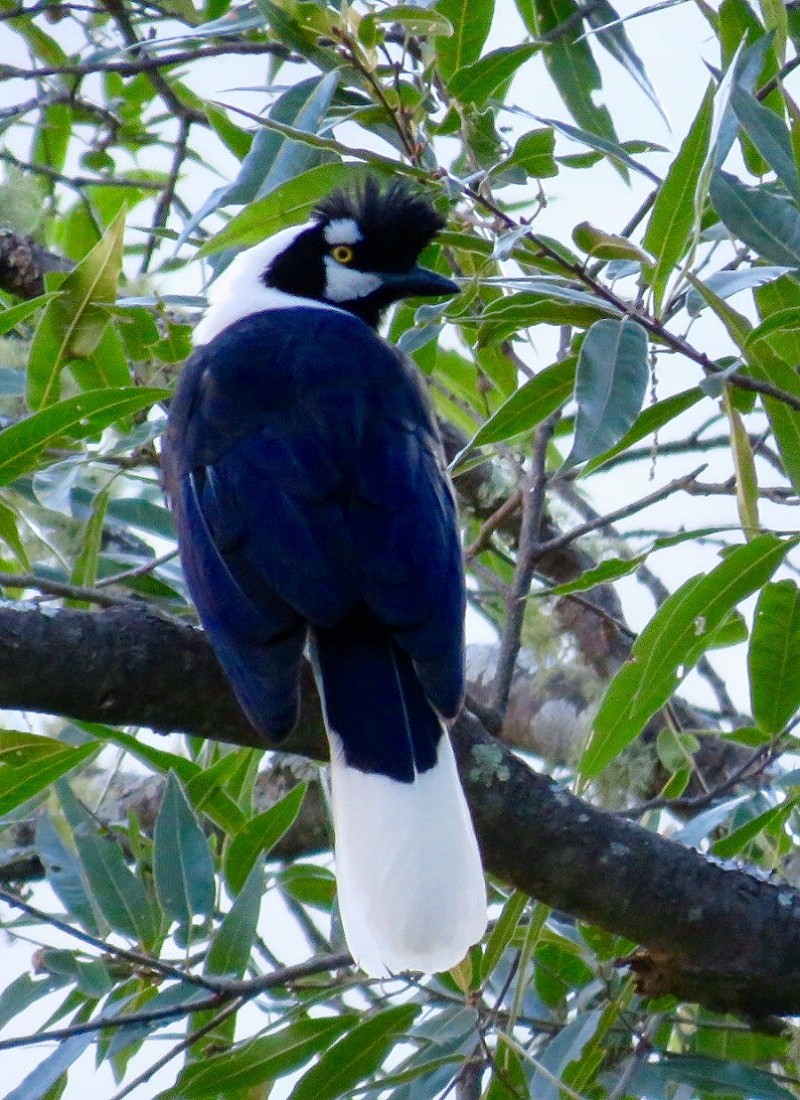
December 7th BIRDING IN THE THREATHENED GRASSLANDS
Today we saw the endangered Worthen’s Sparrow on the grasslands of the Mexican Plateau. Like many other birds and animals, it has suffered immensely from the conversion of this habitat to agricultural land. This is not just the case for North America’s grasslands; in fact I encountered this issue countless times during my travels this year. We as the human race have altered entire ecosystems to fit our needs. We log forests so that we can build structures and plant crops. We have polluted our oceans to such a degree that they have become so acidic that entire coral reefs are dying. We have converted our grasslands to ecologically sterile wastelands, and we have contaminated the very air we breathe. Despite all this human-induced destruction I remain optimistic. This year I encountered many groundbreaking conservation programmes that have managed to turn the tide when all hope seemed lost. Bird species that once balanced on the brink of extinction are now thriving thanks the efforts of countless passionate people all over the world–people who put their heart and soul into protecting and restoring our ecological heritage. These people need your support. So this Christmas, when you feel like doing something good for the world, visit my fundraiser for the Birdlife Preventing Extinctions Programme, and make a donation. Birds are barometers that show us the health of our planet’s ecosystems. So if they are thriving, then the ecosystems they depend on are also thriving. And if these ecosystems are thriving then we are thriving.
Luckily we saw several of these beautiful little Sparrows alongside several dozen Sprague’s Pipits. Like the Sparrow this is a threatened species due to habitat destruction.
We arrived in a smog-covered Monterrey just in time for some birding. This resulted in two localized endemics, the Bronze-winged Woodpecker and Crimson-collared Grosbeak.
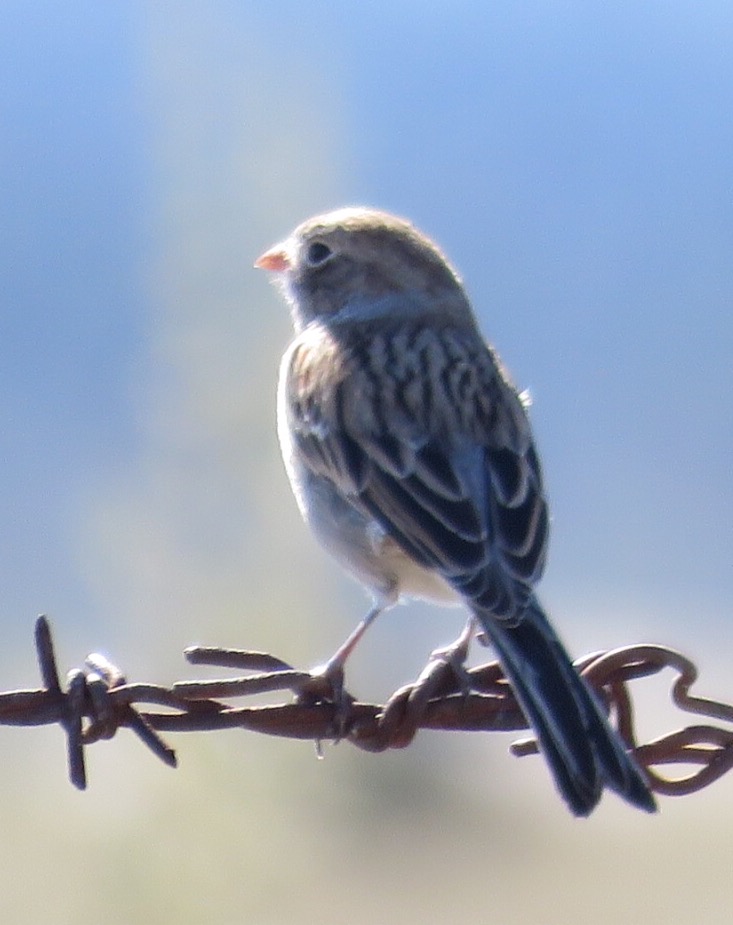
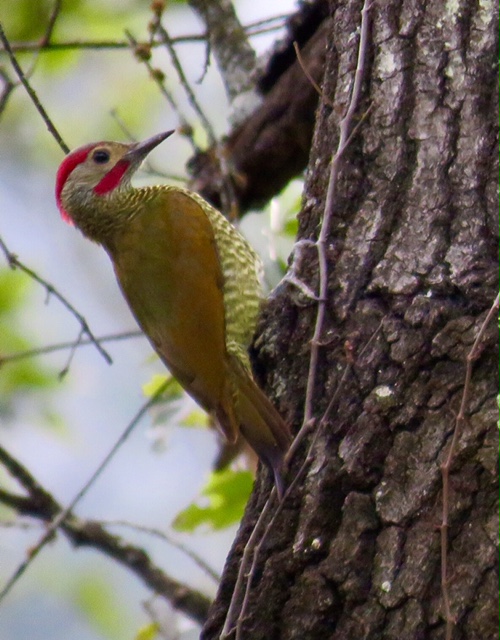
December 8th A BLACK BEAR!
We started our days in a small reserve at the edge of Monterrey’s suburbs. Here we found our target – Long-billed Thrasher – relatively quickly so we decided to drive back up to the Plateau.
While driving up across a beautiful winding road through steep gorges Michael suddenly shouted ‘Holy ****, A bear’! And there to my amazement stood an American Black Bear, right next to the road! It was completely relaxed, feeding along the roadside. Oblivious to its observers.
After this fantastic sighting we continued our way to the plateau where we birded until dusk. My final new bird in Mexico was a Prairie Falcon. Not a bad finish to a fantastic trip!
Thanks BRANT TOURS for this fantastic trip and thanks to René, Alberto, Erik, Rafael, Mark and Michael for making this whirlwind tour into a great success!
Arjan Dwarshuis
http://www.arjandwarshuis.com/#biggestyear
http://world.observation.org/arjan.php
PLEASE MAKE A DONATION NOW
December 9th PIPING PLOVER LAYOVER
Around 1 PM I’d cleared US customs and was welcomed at the arrivals hall of Miami Airport by Ethan Kistler. This year Ethan had already joined me in Kenya and guided me and Camilla in South Africa and now we will join me in Jamaica and the US. So he is sort of doing a mini big year.
We were picked up by local birding couple Marc Kramer and Eliana Ardila for a couple of hours birding at Key Biscayne. Our goal was to find the endangered Piping Plover of which about 30 winter here annually. Like Kentish Plover in the Netherlands this species suffers a lot from recreational tourism on beaches. Upon arrival we walked up to a fenced off area on the beach which has been especially constructed to protect this species high tide roost. Luckily it was high tide and indeed there were 16 beautiful Piping Plovers standing among some Semipalmateds and a Wilson’s Plover. Great! After a quick lap through the adjacent park Marc and Eliana dropped us off at Miami Airport again for our flight to Jamaica. Thank you guys so much for hosting us in Miami today!
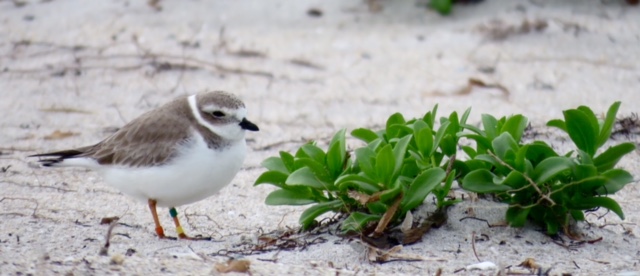
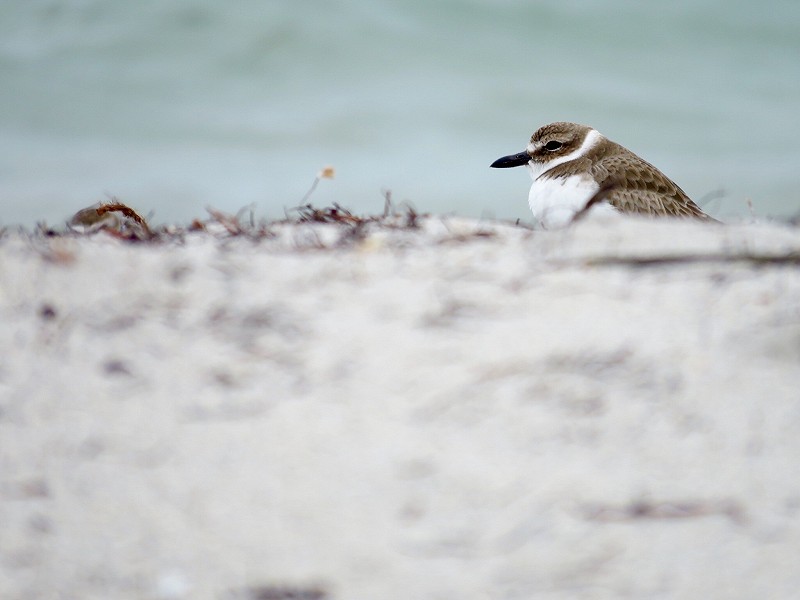
December 10th RASTAMAN VIBRATIONS
Last night Ethan and I had arrived on Jamaica, one of the most fascinating islands in the Caribbean and home to 29 endemics. We aimed to track those endemics and all other specialties down in just two days. After picking up the rental we drove up into suburban Kingston where we checked in at the Widcombe Guesthouse where we spent the night.
Around 4:30 AM we commenced with the one hour drive up into the famous Blue Mountains. Here one can find 24 of the 29 endemics. Just after dawn we arrived at the first good patches of cloud forest and as soon as we got out of the car we started seeing endemics. Amazing looking Red-billed Streamertails buzzed overhead while Orangequits and Jamaican Spindalises decorated the trees around us with dazzling colors. By the end of the morning we had found all but nine endemics. Highlights were three endangered Jamaican Blackbirds, fantastic looks at a Crested Quail-dove, several Blue Mountain Vireos and the uncommon Jamaican Elaenia. In the afternoon we drove down across a bendy road to the north coast of the island. An hour before dusk we arrived at the wonderful Green Castle Estate where we saw our only Sad Flycatcher of the trip. We had a great seafood dinner by the ocean at a small local restaurant where we met Duane, the local bird guide. He and his pregnant wife generously decided to join us on our quest for Jamaican Owl, but he took one look at the windy bright moonlit sky and warned us that it would be extremely difficult to even hear the bird. And indeed, after waiting and playing tapes for half an hour without any response, we had to call it a day.
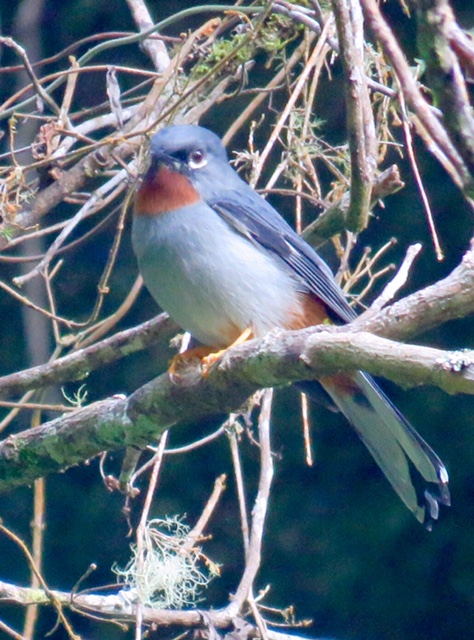
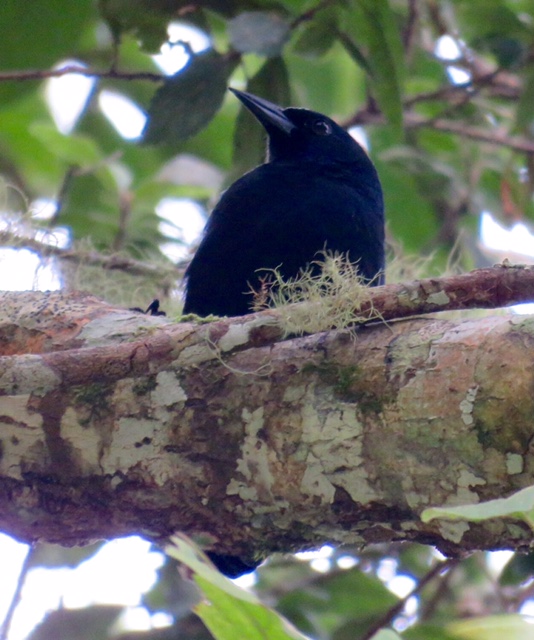
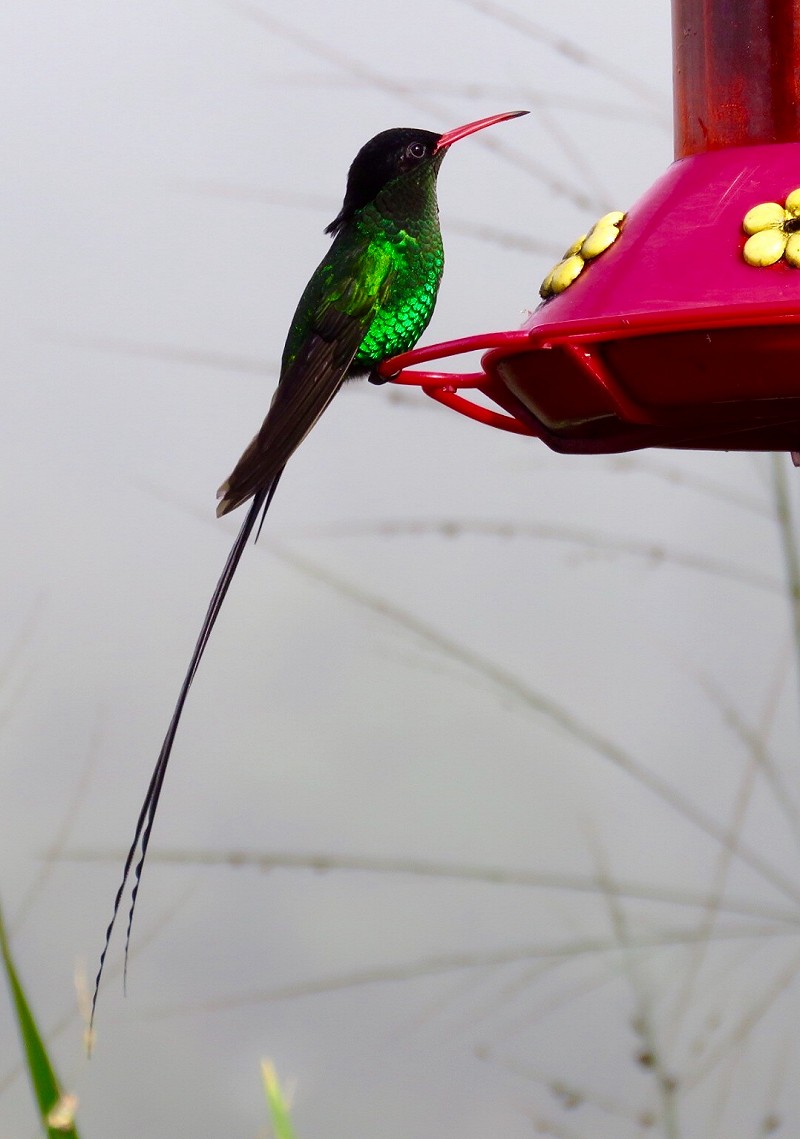
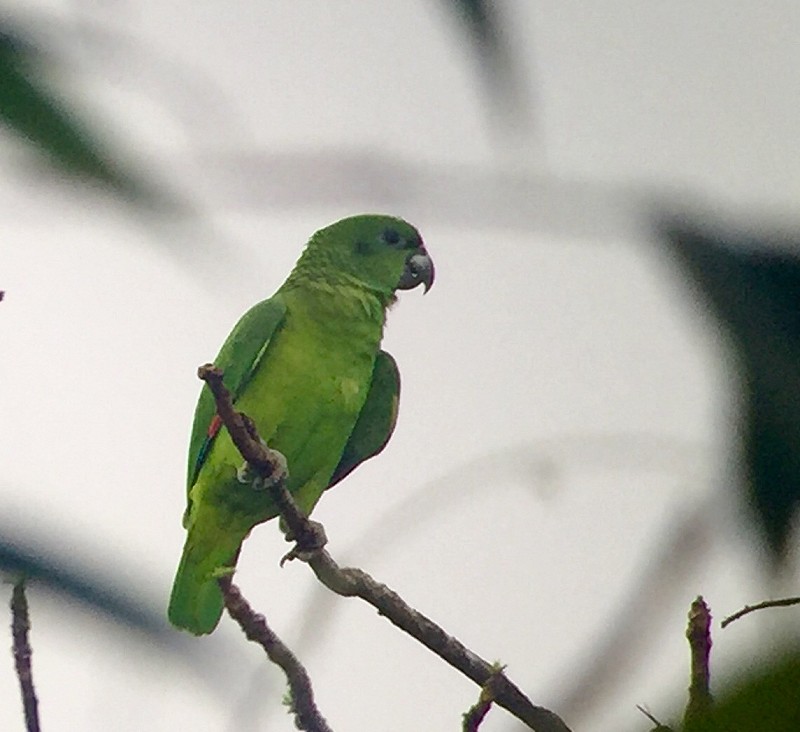
December 11th CLEANING UP JAMAICA
We woke up at 4 AM to try for Jamaican Owl, but unfortunately it was raining heavily which made our quest impossible. Around 5 AM we started heading west towards the famous Ecclesdown Road. We arrived at one of Jamaica’s most famous birding sites about half an hour after dawn. Things started a bit slow, but eventually bird activity picked up. We head good numbers of both Black-billed and Yellow-billed Parrot and Black-billed Streamertails were plentiful. We had to work a little harder for Chestnut-bellied and Jamaican Lizard Cuckoo, but after some searching we found both. Another good bird here was the localized Jamaican Crow. After we’d found all our targets we started heading east again towards Kingston. It turned out that the heavy rain had badly affected the road. We had to drive through more than a feet of water and around landslides on several occasions which made this drive quite an adventurous one.
In the afternoon we arrived at southwest of Kingston. This peninsula is much dryer than the rest of the island and it is here that Bahama Mockingbird can be found. We found both the Mockingbird and the endemic Stolid Flycatcher quickly which left us with enough time to drive up into the Blue Mountain one last time. This proved and excellent choice since we found our target – Greater Antilean Elaenia – in the dying seconds of the day. Half an hour later we finished our list of Jamaican endemics with a calling Jamaican Owl. Mission accomplished.
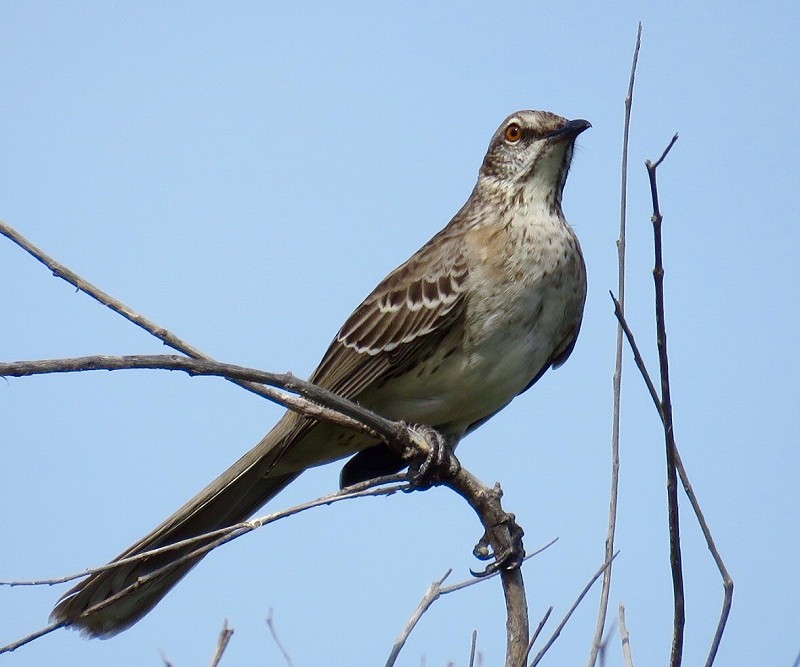
December 12th BIRDING THE EVERGLADES
We left Kingston early and the morning and just before noon we arrived back in Miami. Here Carlos Sánchez, one of Miami’s top birders, was waiting for us. After picking up the rental we headed towards the Everglades. This place is of course well known for its large population of Aligators, but in addition to this some interesting birds can be found here. We started with some pine forest specialties and despite the fact that we arrived during the heat of midday we managed to find both Downy and Pileated Woodpecker and several Brown-headed Nuthatches. Our real targets however came after sunset. We had great views of both Eastern Whip-poor-will and Eastern Screech-owl and heard Barred Owl. We were kindly invited by Marc Kramer and Eliana Ardila to spend the night and their place. Thanks again guys for your hospitality!
December 13th FLORIDA’S SPECIALTIES
We left Marc and Eliana’s place at 4 AM, picked up Carlos and headed three hours north to Three Lakes WMA where we would look for one of Florida’s most threatened birds, the Red-cockaded Woodpecker. This bird has suffered a lot from habitat loss throughout its range. We were incredibly successful with this quest as we found the woodpecker after just 15 minutes of searching. Another good pick-up here was the localized Bachman’s Sparrow. I had my true ‘American Moment’ when we saw a flock of Wild Turkeys while a Bald Eagle flew overhead, with a trailer-home in the background. Complete with monster-truck parked in front of it and a sign that said: ‘Vote Trump; make America great again’. Our next target was the threatened Florida Scrub-jay which was already greeting us as we parked our car. Although very easy at this site, this localized bird suffers from habitat loss due to urbanization along the Florida coastline.
The rest of the day went a little bit slower, but we did get a couple of new birds. We had diner at Graham Williams and his wife’s place. They had kindly invited us over for dinner and offered us a place to sleep. Thanks a lot for your hospitality guys!
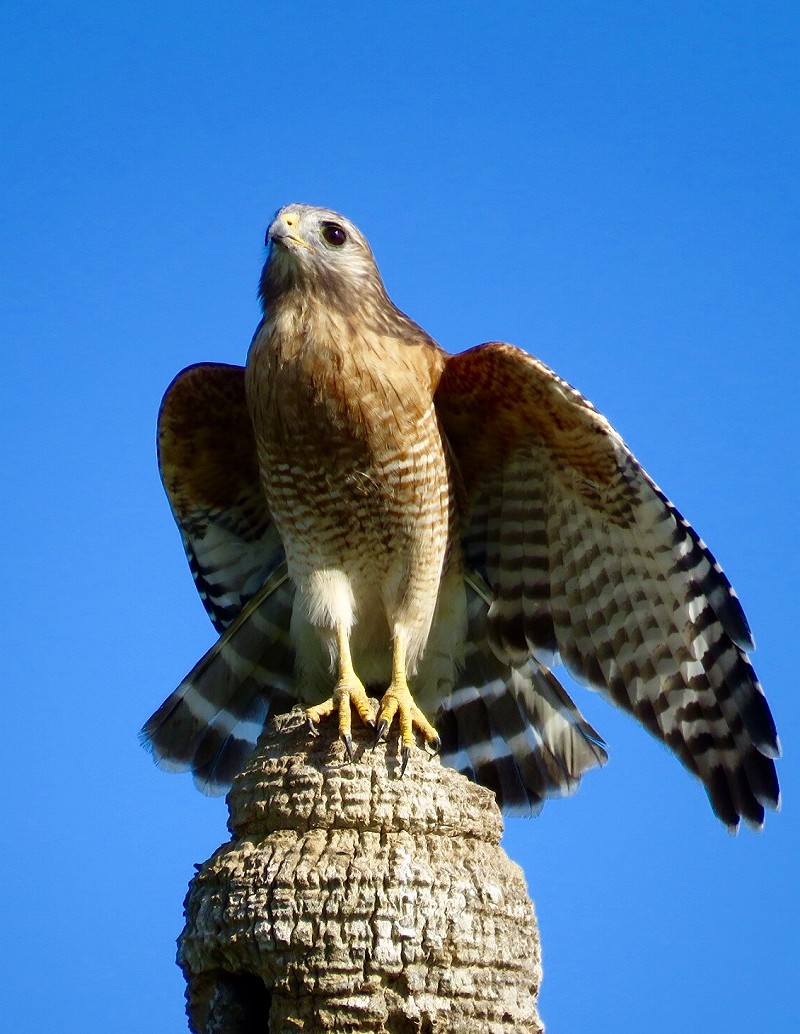
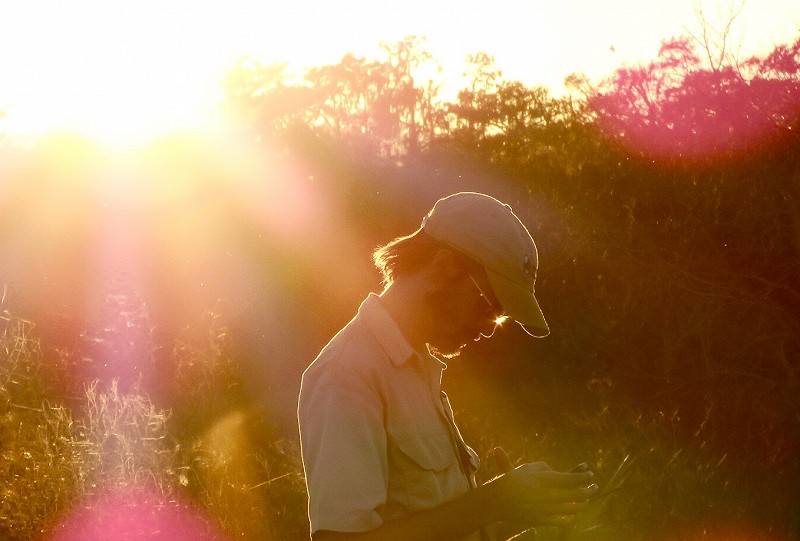
December 14th WHOOPING CRANE DAY
We got help from local county birders Mike Manetz and Ron Smith this morning. We met them at a lake that sometimes has Wood Duck and after a little bit of waiting a pair flew by indeed. Next they took us to their secret stake-out for the localized Henslow’s Sparrow and again our efforts were successful with two individuals.
The real treat today was an adult Whooping Crane that had been found at Paynes Prairie Reserve a couple of days before. This particular bird – identifiable by the color bands on its legs – was bred and raised in the wild by its two parents who originated from a famous reintroduction project. The species was down to just a few individuals, but due to the most expensive conservation programme in history their population is up to 300 birds now. It is still a very rare bird so I felt privileged to be able to add this impressive white Crane to my Biggest Year list. We finished our Florida run with one of the most beautiful Woodpeckers of all, the Red-headed. A fitting end to this leg of our USA trip. At Orlando Airport Ethan and I said goodbye to Carlos and boarded our plane to Minniapolis. Here in Florida it was 30 degrees Celsius, at our destination it would be minus 20 when we arrived…
Arjan Dwarshuis
http://www.arjandwarshuis.com/#biggestyear
http://world.observation.org/arjan.php
PLEASE MAKE A DONATION NOW
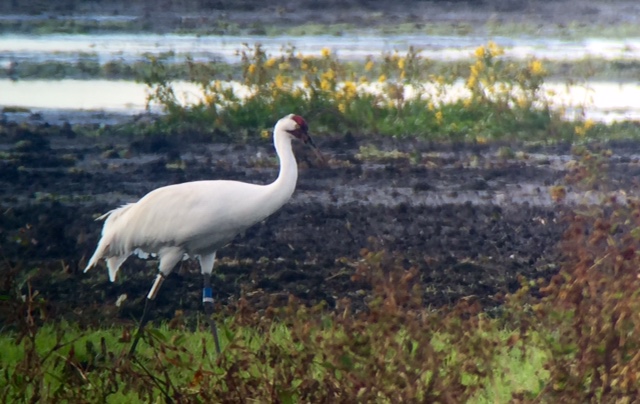
December 15th BIRDING IN AN ICY LANDSCAPE
After spending the night in a motel near Duluth Ethan and I headed north towards the famous Sax-Zim Bog. It was still dark and the thermometer said -28 degrees Celsius at one point, making this the coldest place I’ve ever been. Just as it was getting light we met our guide Sparky at a roadside restaurant and in his comfortable van – with much needed seat heaters – we headed into the Sax-Zim Bog. This network of boreal forest, swamps and fields is North America’s most well-known place to see the northern specialties.
The first species we saw was a family of Ruffed Grouse. Not long thereafter we bumped into a Black-backed Woodpecker, a species that can be notoriously difficult to find. Unfortunately we missed a Great Grey Owl by exactly one minute which was quite painful, but luckily I’ve seen this amazing species before in Sweden. Other good birds over the course of the morning were White-winged Crossbill, Sharp-tailed Grouse, Boreal Chickadee and a pair of Pine Grosbeaks.
In the afternoon we headed to Duluth to check the freezing cold shoreline of Lake Superior for gulls. We managed to find two Thayer’s Gulls and one Glaucous Gull among the many American Herring Gulls. Just before dusk Ethan and I drove back to Sax-Zim Bog to give the Owl one more go, but our efforts were in vain. We spent the night in Minneapolis with the Sundvall family, who had kindly invited us over. It is really great how the network of birders here in the US offers us places to sleep and eat, it is very much appreciated!
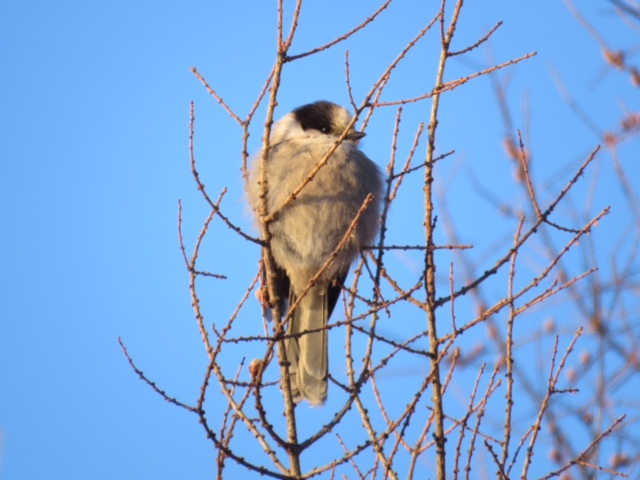
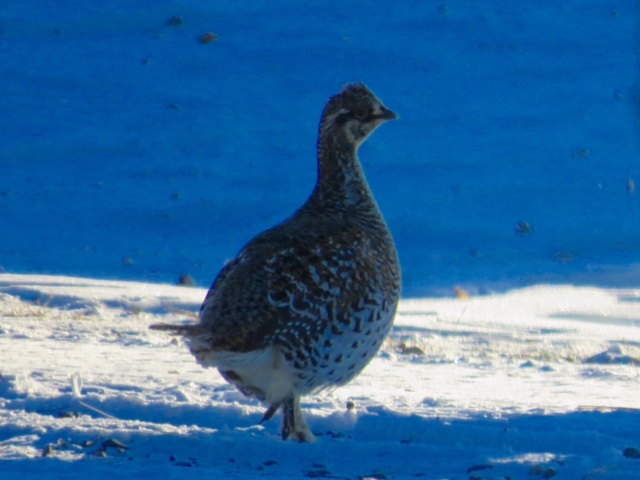
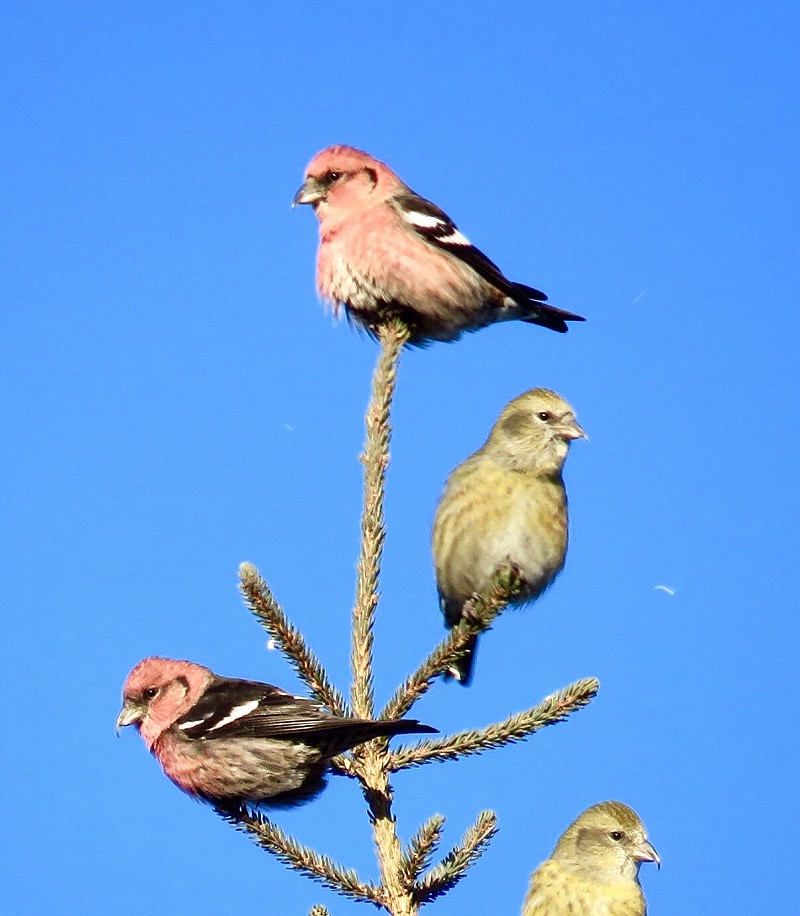
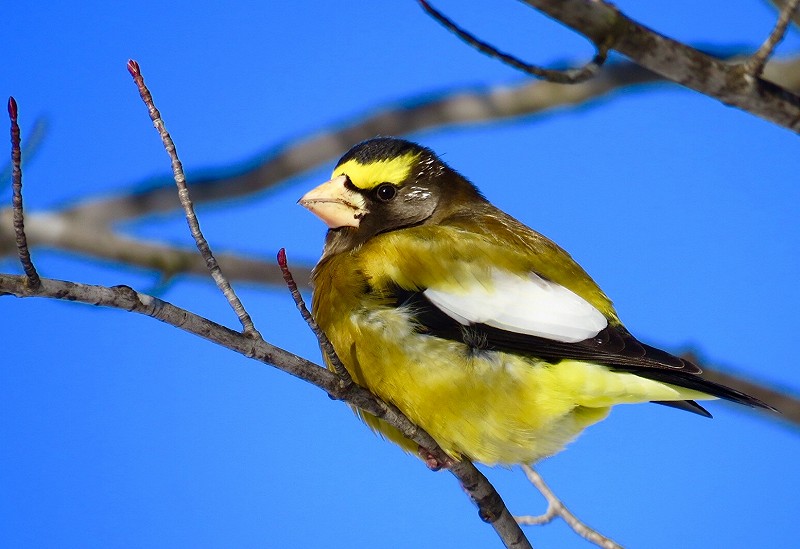
December 16th DODGING SNOWMAGEDDON
Our flight left Minneapolis at 6 AM. When we arrived in Albuquerque a couple of hours later we found out that a snow blizzard of unprecedented proportions had hit the entire state of Minneapolis, making all airline traffic impossible. We dodged a bullet there.
At the airport of Albuquerque we were picked up by Michael Hilchey, with whom I’d been birding my entire 17 days in Mexico. A nice rendezvous. It wasn’t snowing or freezing around Albuquerque, but still conditions were hard with cold weather and gale force winds. We spent the day in the surroundings of the city which offers some exciting birding. Most well know is the Sandia Crest, where all three species of North-American Rosy-finches winter together. We easily found a flock of ten bird which contained both Black and Brown-capped Rosy-finch, but not the hoped for Grey-crowned Rosy-finch. Guess we will have to try again for that one in two days. After finding Sage Thrasher against all odds – by now weather conditions were horrible – we finished our day with a female Rusty Blackbird that we twitched in a small city park.
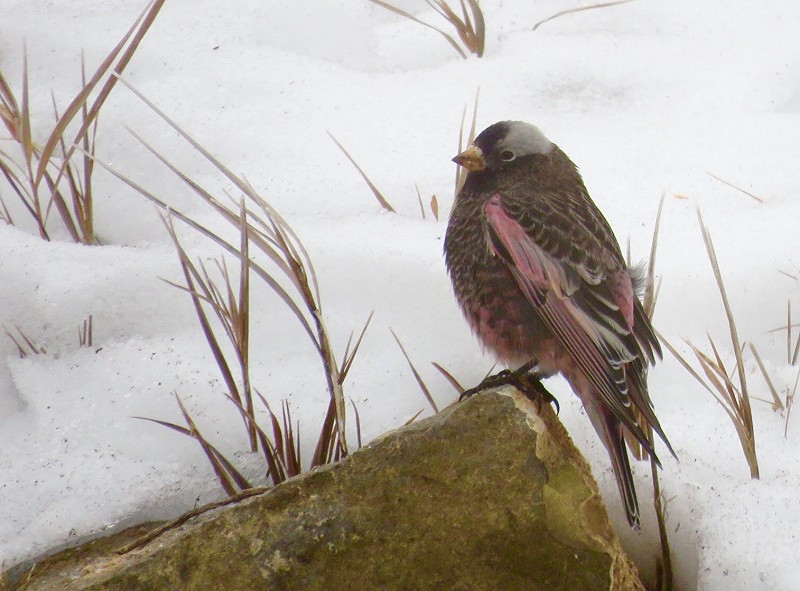
December 17th BATTLING BAD WEATHER
We left Michael’s house in Albuquerque early so that we would arrive at Bosque del Apache National Wildlife Refuge at dawn. Upon arrival it become clear to us that weather conditions were still horrible, with strong winds and rain. Luckily the birds we needed here were not so weather dependent and we found flocks of thousands of Ross’s and Snow Geese. Later in the morning we birded the pine forest covered hillsides to the east of Bosque del Apache, but here weather conditions were truly terrible. The rain had turned into snow and with the strong wind being out there was unpleasant to say the least. The birds felt the same because we saw hardly anything. On the way back we totally unexpectedly ran into a flock of about 50 Pinyon Jays, an often difficult and nomadic species.
In the afternoon we drove south to look for grassland species. Our main target was the rare Baird’s Sparrow that winters here. I had no hope of finding this highly skulking species with these weather conditions. Miraculously we found a super cooperative bird after searching for just half an hour, with Chestnut-collared Longspur as a big bonus. We finished the day with a showy Western Screech-owl. Not bad for a bad weather day!
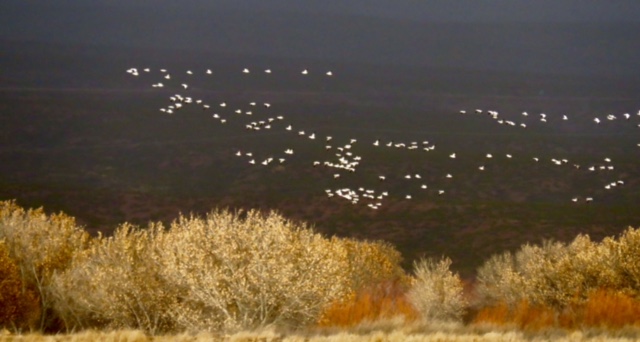
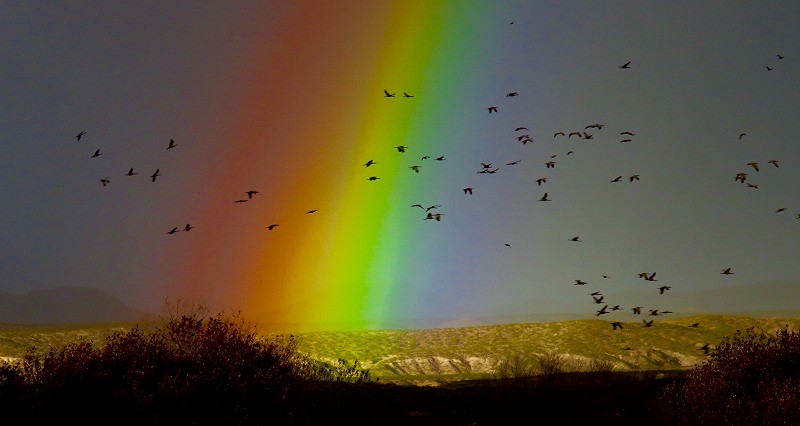
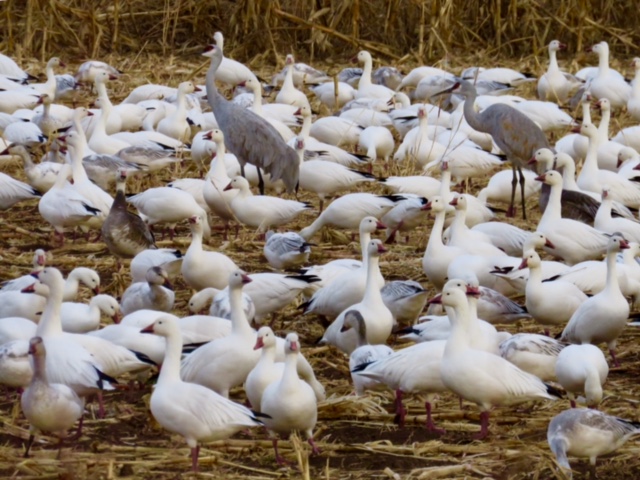
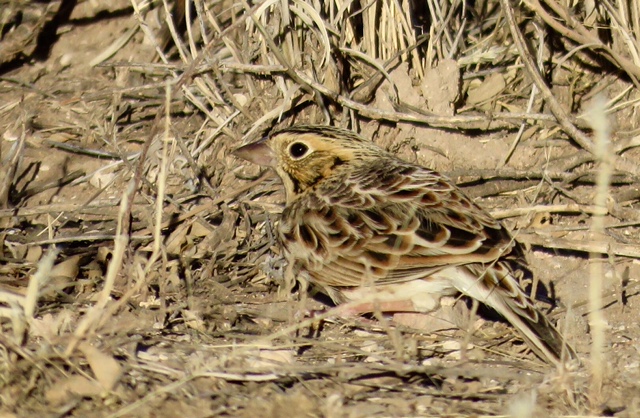
December 18th LEWIS AND CLARK
We had missed Grey-crowned Rosy-finch on day one in New Mexico so today at dawn we were back at Sandia Crest. This time the world around us was covered in snow and it was wind still with clear skies. Subsequently the scenery was absolutely breathtaking from the crest. Unfortunately is was also very cold. Temperatures of more than 20 degrees below zero made waiting for finches a bone chilling experience. Luckily we were rewarded after half an hour of waiting with two Grey-crowned Rosy-finches. Another good find lower down was a calling Northern Pygmy-owl.
Next we drove to the other side of Albuquerque where we found Sage Brush Sparrow after some thorough searching.
Since our flight to San Diego would leave quite late in the evening we had time to drive north and look for some real quality birds. In the pine forest surrounding Los Alamos – where the atomic bombs that were dropped on Hiroshima and Nagasaki during WW2 were developed – we found the beautiful and a-typical Lewis’s Woodpecker followed not long thereafter by two pairs of Clark’s Nutcrackers. Our last new species in New Mexico was Barrow’s Goldeneye, of which we found two drakes on a river with Goldeneyes.
Thanks Michael and BRANTTours for helping and hosting us in New Mexico!
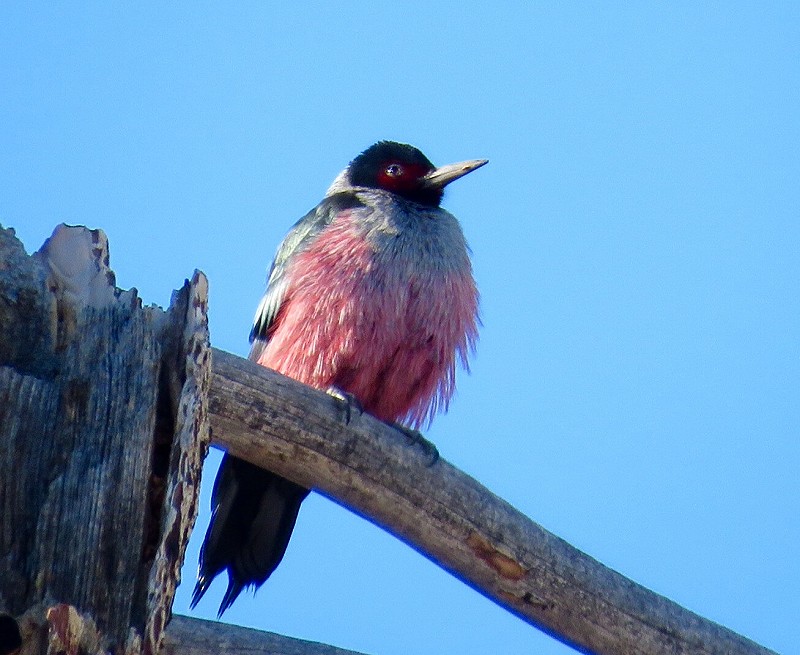
December 19th THE COAST OF SAN DIEGO
After a delayed flight and several hours of sleep in the rental car, Ethan and I were ready for a day of birding around San Diego. We got help from one of the city’s top birders, Gary Nunn. We started with a sea watch, which gave us a nice selection of west coast birding. Personal highlights were Wandering Tattler and Black Turnstone. An unexpected find a on a rocky harbor head was a very showy Surfbird and, even better, a ‘Large-billed’ Savannah Sparrow. This subspecies is basically restricted to Baja California and surely deserves full species status. At a saltmarsh on the southern edge of the city we found a Ridgway’s Rail, a recent split from the Clapper Rail-complex. Next we drove up to Mexican border where Gary quickly found us the monotypic Wrentit and California Gnatcatcher, Thrasher and Towee. This day was going smooth as a whistle! Our next target was a tricky hit-or-mis bird, the Bell’s Sparrow. Not today, we found one without even trying. Our last target of the day was also the rarest, the endangered Tricolored Blackbird. This species has undergone an alarming decline in the last decades because of the loss of native grasslands to urban and agricultural developments. The colonial nature of the species makes it especially vulnerable (like for example the Passenger Pigeon). Luckily this rare species is very easily found in winter around San Diego if you know exactly where to look. We found a group of more than 40 birds in a small suburban park! After this highly successful day Ethan and I said goodbye to Gary and drove over to the sleepy town of El Centro, near the famous Salton Sea. Thanks Gary for helping us out today!
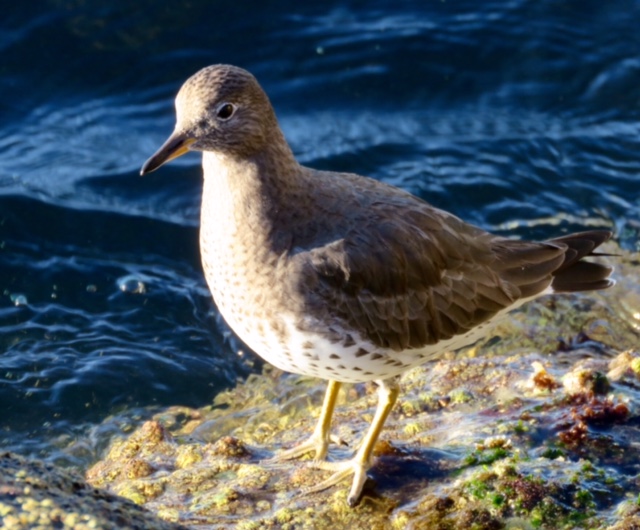
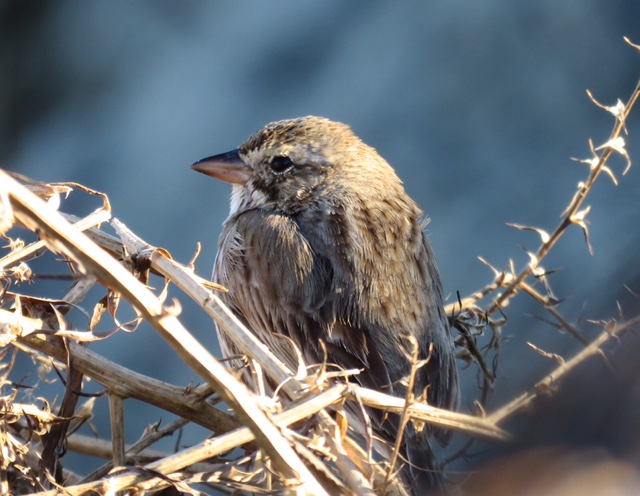
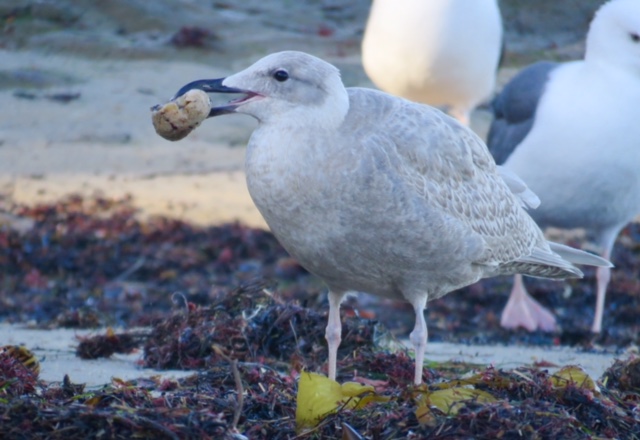
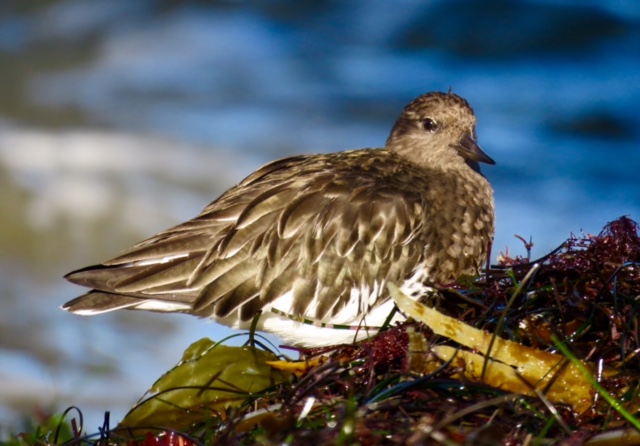
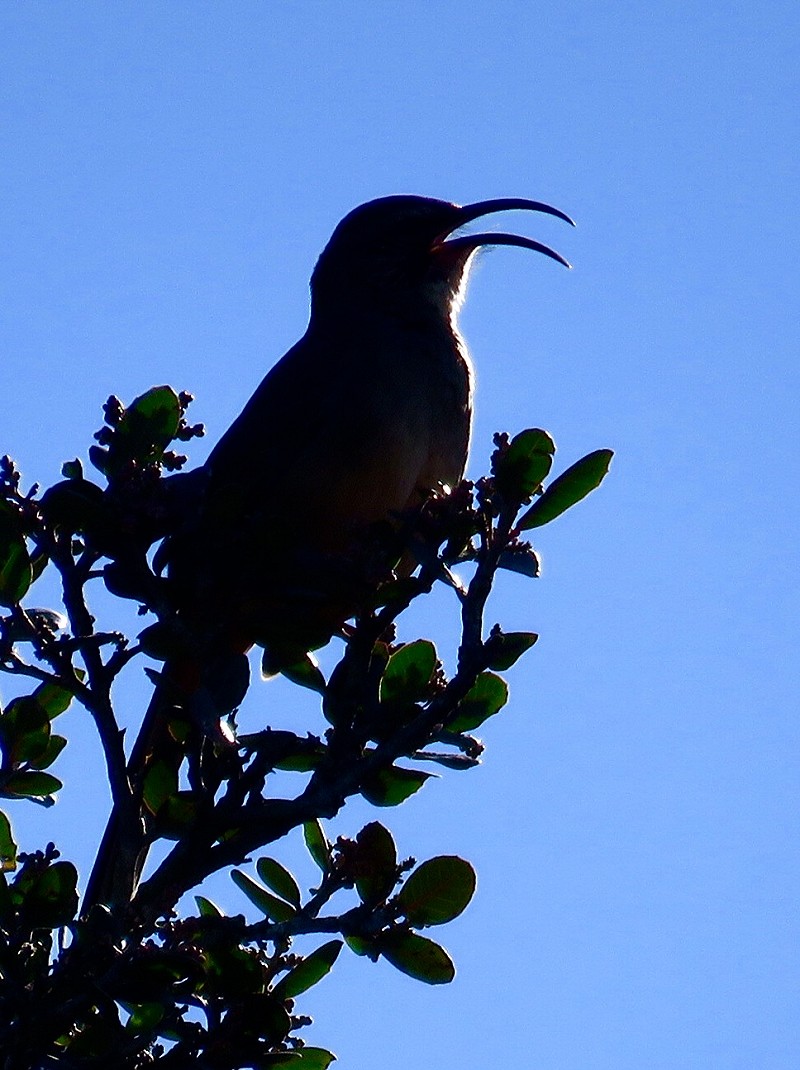
December 20th EVEN MORE THAN WE COULD HAVE BARGAINED FOR
We started our day birding around the Salton Sea. This huge saline lake in the middle of the desert was created after a human caused flooding incident of the Colorado River in 1905. Now the lake’s primary water source is the agricultural runoff from the surrounding industries. Subsequently, the Salton Sea had become so polluted that once every few years toxicity levels become so high that almost everything in the lake dies. Since the heavily polluted lake is the only source of open water in the desert it functions as a macabre oasis for birds. Its stinking shoreline attracts hundreds of thousands of shorebirds, waterfowl and gulls that otherwise would use the Colorado River and delta as a stop-over site and wintering ground. Unfortunately the water in the Colorado River has only reached its delta in the Gulf of California a few times after the 1960’s. This is because 40 million people inside and outside the watershed completely depend on the river for their water supply. In fact, the lower 100 miles of the Colorado River is mostly bone dry. In less than ten years from now, the remaining water in the Colorado River will almost certainly be finished, which means that there will be a water shortage of unprecedented proportions. More than 40 million people will have to look for alternative sources of water in the very near future. Maybe cutting on the number of golf courses and swimming pools would do the trick (I have never seen so many golf courses as here, in the middle of the dessert). It doesn’t look good with the coming four years Trump presidency. This dangerous climate change denier will put these sort of issues at the bottom of his agenda. He believes he’s ‘gonna make America great again’, but in fact he will bring the country to its knees.
We did find a couple of rare birds this morning. A flock of more than a hundred Mountain Plovers in an agricultural field, a lonely Yellow-footed Gull among thousands of California Gulls, a bonus Greater Scaup and best of all a self-found Harris’s Sparrow – a vagrant to California – near the Salton Sea visitors center. Later that day this bird was chased by more than a dozen birders.
We left the stinking water of the Salton Sea behind us and headed for Joshua Tree NP. Two hours later we arrived at this beautiful park and after half an hour of searching we found our elusive target, the Le Conte’s Thrasher. Finding this bird meant that we had found nine out of seven possible targets this morning! Since we had done so well we now had time to drive to San Bernardino National Forest for an afternoon birding session. Again we were successful with a small flock of Lawrence’s Goldfinches, a Purple Finch and best, a Spotted Owl accidently flushed from its day roost. We finished this incredibly good day with four Northern Saw-whet Owls!
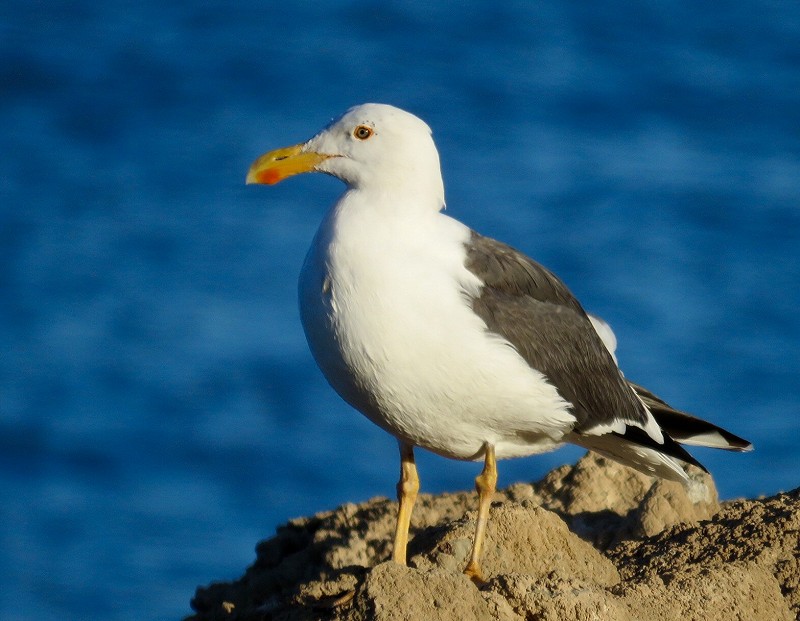
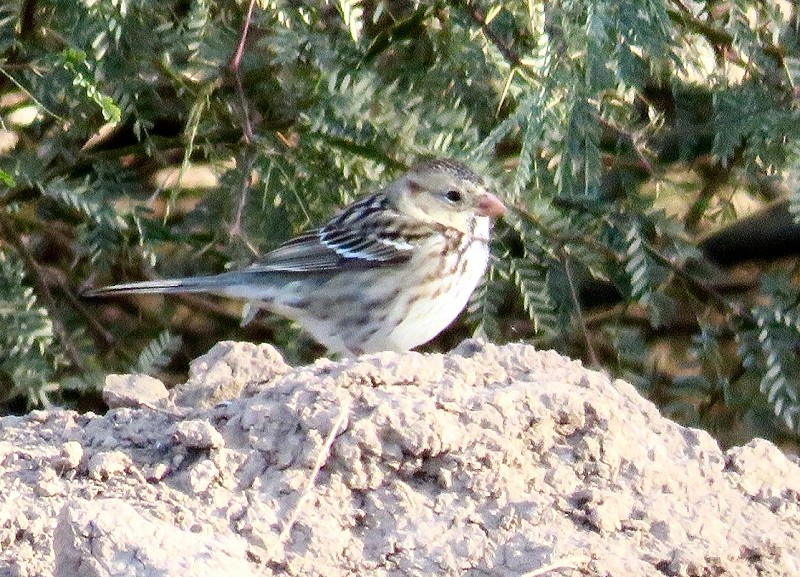
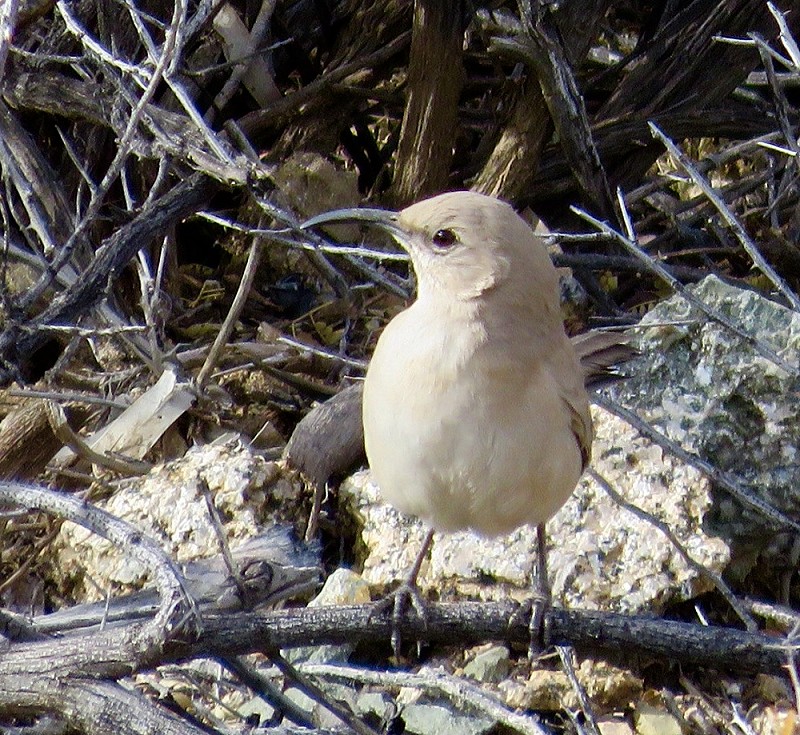
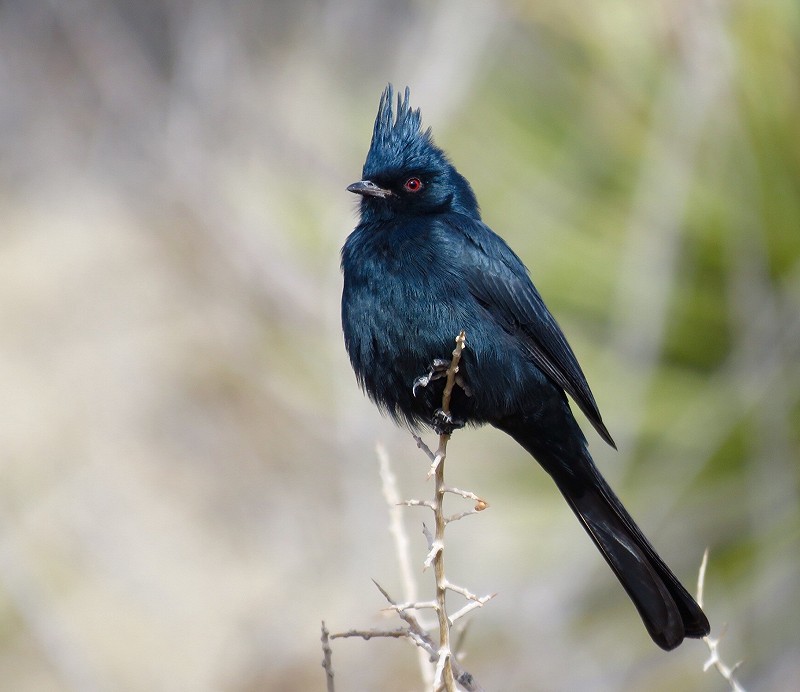
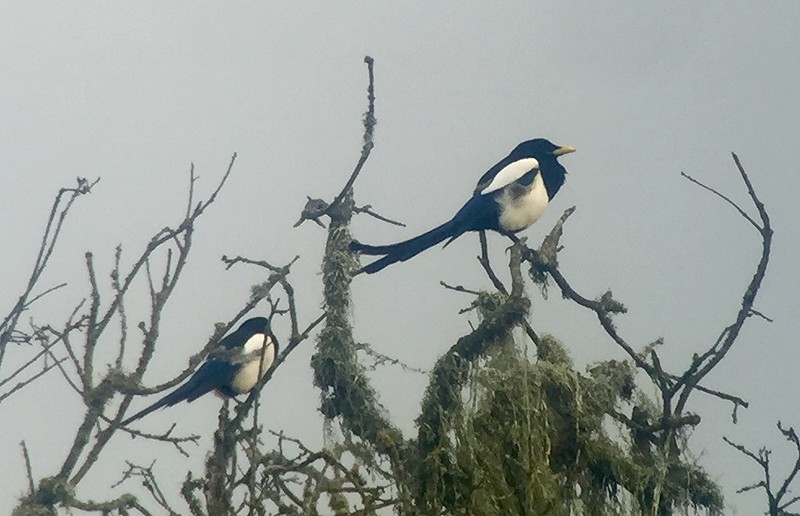
December 21th RUNNING OUT OF TARGETS
After spending a night in the car in suburban Los Angeles – hotels are simply too expensive in this part of the US – we went to a small park to look for a Pacific Wren that had been found here a couple of days before. Since we had done so well the last two days we had now almost completely run out of possibilities for new birds to find. We dipped on the Pacific Wren despite the help of several local birders who were also looking for this bird, but we did find the hoped for Red-breasted Sapsucker. Next we drove up into the pine forest of Angeles National Forest. Here we searched with success for my last possible new woodpecker species in North America, the stunning White-headed Woodpecker. Since we now had no realistic possibilities left in Southern California we made the decision to head north towards Monterrey. En route we made one scheduled stop to look for the range restricted Yellow-billed Magpie, which we found quickly thanks to Ethan’s scouting on eBird. We spent the night in Paso Robles at Phil Chaon’s place, with whom Ethan grew up birding with in Ohio.
December 22nd CALIFORNIA CONDORS!
Today was already my last full day of birding in the Americas. We started with a seawatch just south of Monterrey, hoping to find some alcids. Unfortunately the weather was too calm and in two hours we only head a couple of Rhinoceros Auklets. After the seawatch we drove 15 minutes south along the coast to look for a drake Harlequin Duck that had been reported here. We were lucky, the absolutely beautiful duck was still present among a small flock of Surf Scoters. Our last bit of birding near Monterrey was in a small forest reserve. Here we found the hoped for Pacific Wren and Chestnut-backed Chickadee. From here we commenced with the long drive back to Los Angeles. En route we made a stop at Pinnacles National Park to look for one of the world’s rarest and most endangered birds, the majestic California Condor. This species went extinct in the wild in 1987 – because of persecution, habitat destruction and lead poisoning – when the last 27 individuals were captured for a ground breaking breeding programme by the San Diego and Los Angeles Zoo. This programme proved successful and the species was reintroduced in the wild in 1991. Nowadays a tiny, but growing population of condors is breeding again in the wild. However these birds will remain critically endangered until the US government officially bans the use of lead bullets. Condors are scavengers that are highly sensitive to lead poisoning and they have a very slow reproductive cycle. Subsequently many birds die of lead poisoning before they reach maturity, this was the reason that made the birds go extinct in the first place.
After paying our 15 dollar entrance fee – which goes to the conservation and protection of the condors – Ethan and I drove into the park. We expected a long wait, but after only ten minutes we had two adult birds souring overhead. One of these birds was wing-tagged, the other one wasn’t meaning that bird was raised in the wild! An amazing sighting and what a finish to my 5,5 months in the New World.
After a long drive and some car trouble – we had to change cars due to an unrepairable flat tire – we finally arrived in Long Beach, LA. Here we spent the night at my girlfriend’s brother Kaj and and his girlfriend Sam’s place.
December 23th ONE LAST US BIRD
My flight to Tokyo would leave at 11 AM, which meant that Ethan and I had time to look for one last new bird for my Biggest Year in the Americas. A female White-winged Scoter had been reported from a beach five minutes from the airport in a large flock of Surf Scoters. We were there at dawn and after half an hour of scanning through flocks of Surf Scoters we finally found the bird! This means that I will leave the New World with 6748 species. With one more week to go in Asia I think that the grand end total will stand between 6850 and 6900 species.
Thank you so much Ethan Kistler for showing me around in the US, we had a blast and a highly successful trip!
Off to Japan!
Arjan Dwarshuis
PLEASE MAKE A DONATION NOW
http://world.observation.org/arjan.php
http://www.arjandwarshuis.com/#biggestyear

